Quick filters:
Death of henry iv Stock Photos and Images
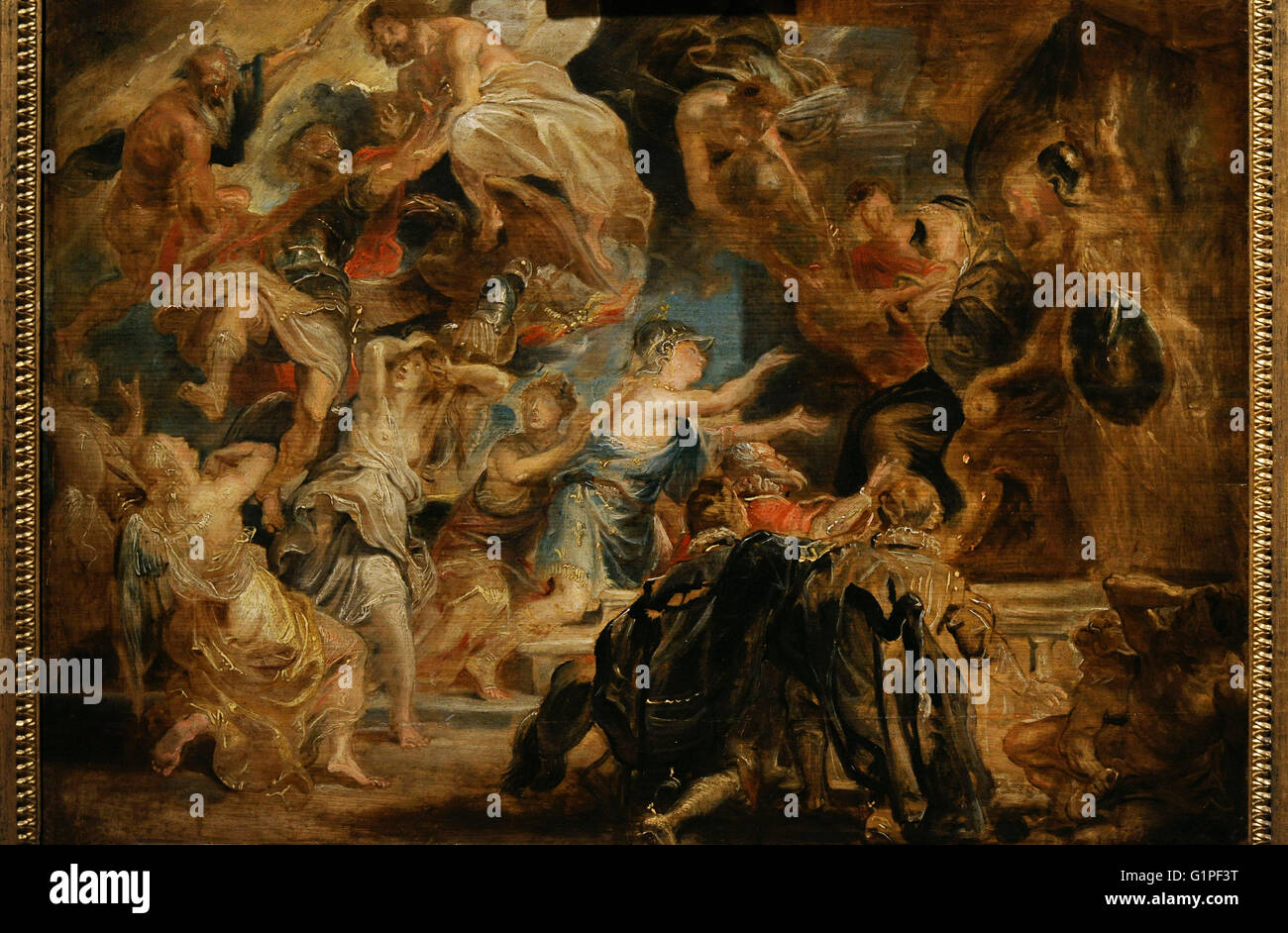 Peter Paul Rubens (1577-1640). Flemish Baroque painter. The Death of Henry IV and the Proclamation of the Regency, 1622. Oil on panel. The State Hermitage Museum. Saint Petersburg. Russia. Stock Photohttps://www.alamy.com/image-license-details/?v=1https://www.alamy.com/stock-photo-peter-paul-rubens-1577-1640-flemish-baroque-painter-the-death-of-henry-104371676.html
Peter Paul Rubens (1577-1640). Flemish Baroque painter. The Death of Henry IV and the Proclamation of the Regency, 1622. Oil on panel. The State Hermitage Museum. Saint Petersburg. Russia. Stock Photohttps://www.alamy.com/image-license-details/?v=1https://www.alamy.com/stock-photo-peter-paul-rubens-1577-1640-flemish-baroque-painter-the-death-of-henry-104371676.htmlRMG1PF3T–Peter Paul Rubens (1577-1640). Flemish Baroque painter. The Death of Henry IV and the Proclamation of the Regency, 1622. Oil on panel. The State Hermitage Museum. Saint Petersburg. Russia.
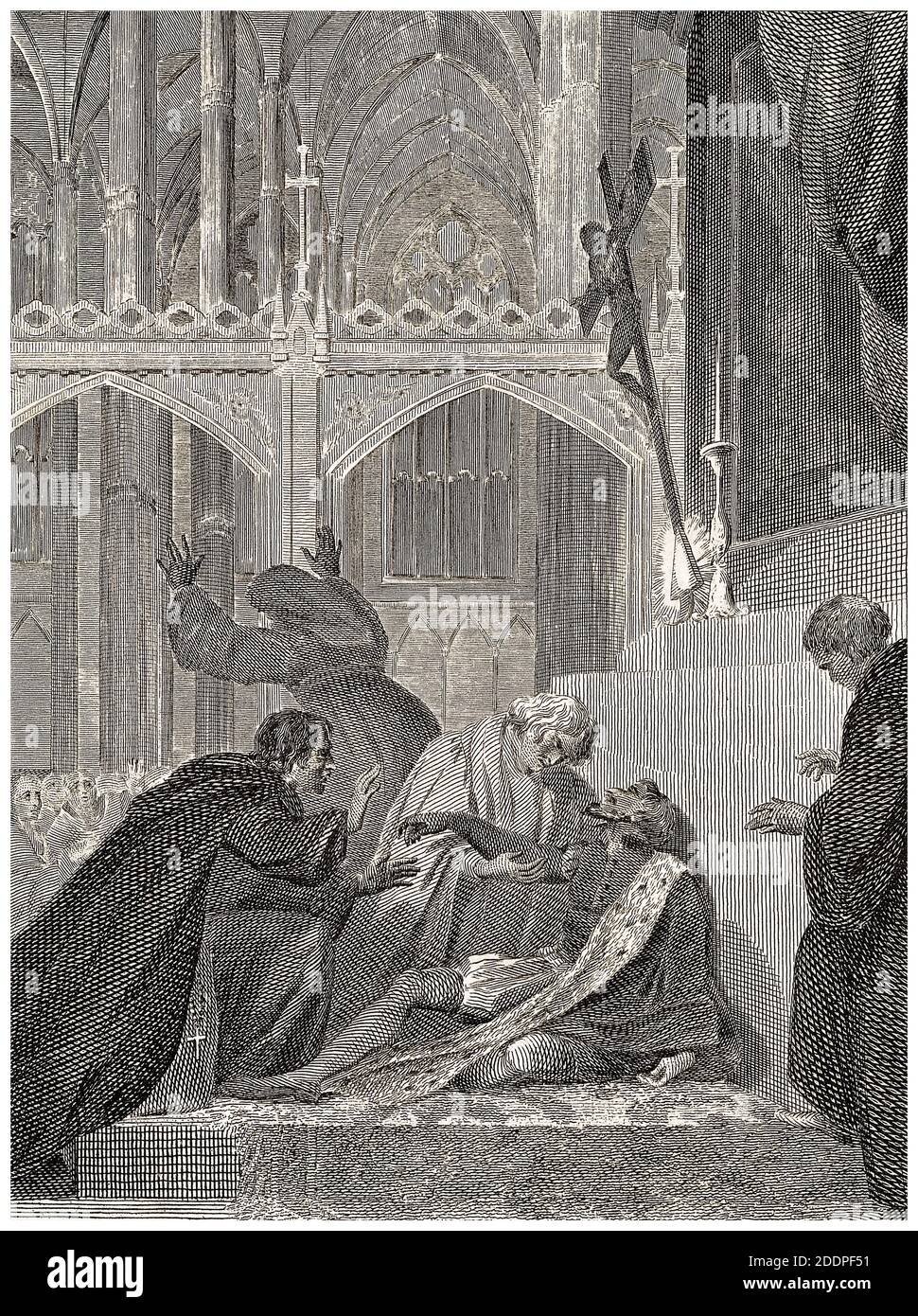 The Death of King Henry IV of England (1367-1413) on 20th March 1413, engraving by William Bromley after Robert Smirke, 1816 Stock Photohttps://www.alamy.com/image-license-details/?v=1https://www.alamy.com/the-death-of-king-henry-iv-of-england-1367-1413-on-20th-march-1413-engraving-by-william-bromley-after-robert-smirke-1816-image387113469.html
The Death of King Henry IV of England (1367-1413) on 20th March 1413, engraving by William Bromley after Robert Smirke, 1816 Stock Photohttps://www.alamy.com/image-license-details/?v=1https://www.alamy.com/the-death-of-king-henry-iv-of-england-1367-1413-on-20th-march-1413-engraving-by-william-bromley-after-robert-smirke-1816-image387113469.htmlRM2DDPF51–The Death of King Henry IV of England (1367-1413) on 20th March 1413, engraving by William Bromley after Robert Smirke, 1816
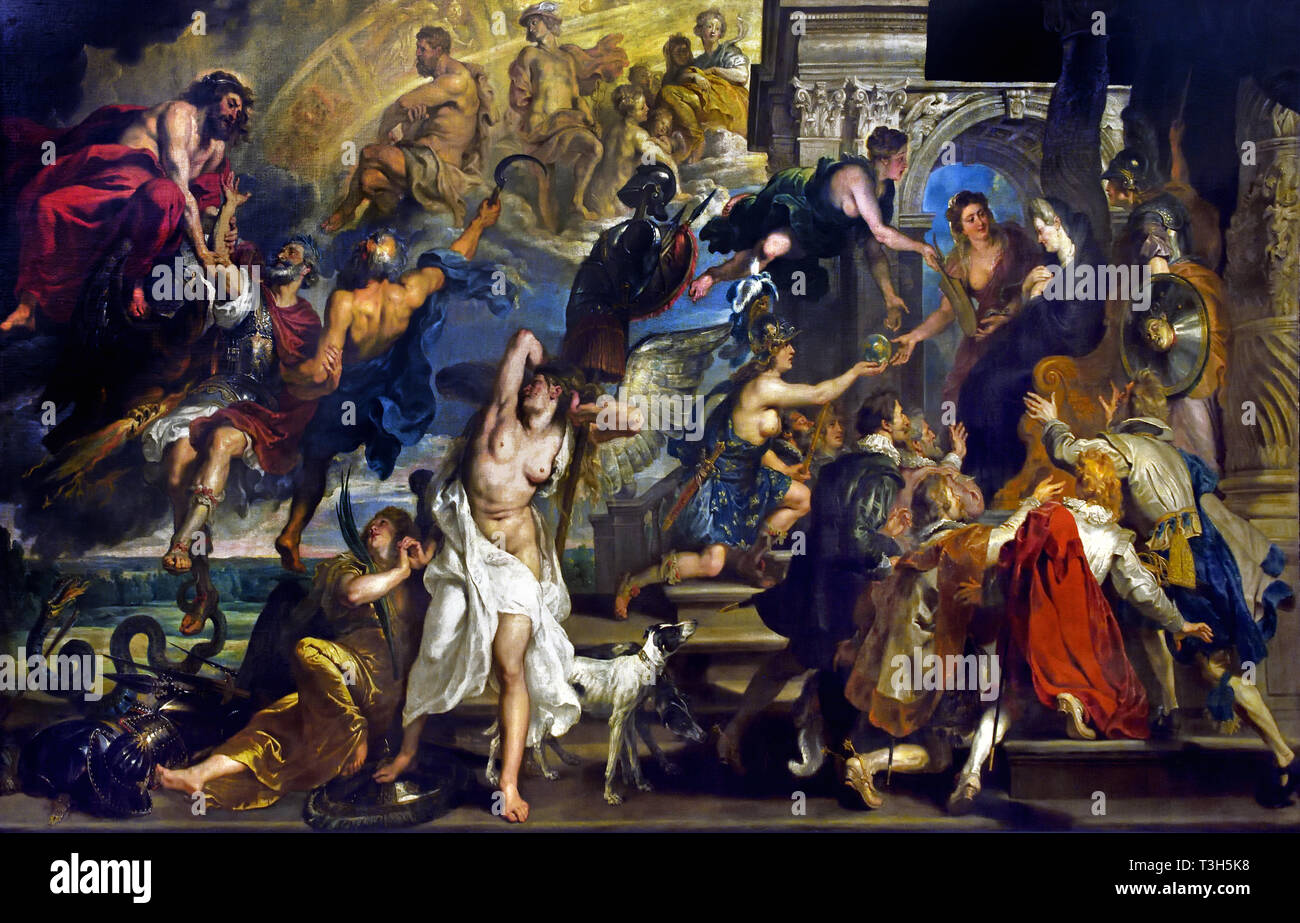 The Death of Henry IV and the Proclamation of the Regency - The Marie de' Medici Cycle 1622-1624 by Peter Paul Rubens commissioned by Queen Marie de' Medici, widow of King Henry IV of France, for the Luxembourg Palace in Paris, Stock Photohttps://www.alamy.com/image-license-details/?v=1https://www.alamy.com/the-death-of-henry-iv-and-the-proclamation-of-the-regency-the-marie-de-medici-cycle-1622-1624-by-peter-paul-rubens-commissioned-by-queen-marie-de-medici-widow-of-king-henry-iv-of-france-for-the-luxembourg-palace-in-paris-image243166764.html
The Death of Henry IV and the Proclamation of the Regency - The Marie de' Medici Cycle 1622-1624 by Peter Paul Rubens commissioned by Queen Marie de' Medici, widow of King Henry IV of France, for the Luxembourg Palace in Paris, Stock Photohttps://www.alamy.com/image-license-details/?v=1https://www.alamy.com/the-death-of-henry-iv-and-the-proclamation-of-the-regency-the-marie-de-medici-cycle-1622-1624-by-peter-paul-rubens-commissioned-by-queen-marie-de-medici-widow-of-king-henry-iv-of-france-for-the-luxembourg-palace-in-paris-image243166764.htmlRMT3H5K8–The Death of Henry IV and the Proclamation of the Regency - The Marie de' Medici Cycle 1622-1624 by Peter Paul Rubens commissioned by Queen Marie de' Medici, widow of King Henry IV of France, for the Luxembourg Palace in Paris,
 Death of Henry IV, Print made by William Bromley, 1769–1842, British, after Robert Smirke, 1752–1845, British, Published by Nuttall, Fisher & Dixon, active 1818, British, 1816, Etching and line engraving on thin, slightly textured, cream laid paper, Sheet: 14 × 8 7/8 inches (35.6 × 22.5 cm), Plate: 11 3/4 × 7 1/2 inches (29.8 × 19.1 cm), and Image: 10 1/4 × 6 1/2 inches (26 × 16.5 cm), church, death, frame (furnishing), historical subject, king (person Stock Photohttps://www.alamy.com/image-license-details/?v=1https://www.alamy.com/death-of-henry-iv-print-made-by-william-bromley-17691842-british-after-robert-smirke-17521845-british-published-by-nuttall-fisher-dixon-active-1818-british-1816-etching-and-line-engraving-on-thin-slightly-textured-cream-laid-paper-sheet-14-8-78-inches-356-225-cm-plate-11-34-7-12-inches-298-191-cm-and-image-10-14-6-12-inches-26-165-cm-church-death-frame-furnishing-historical-subject-king-person-image389833704.html
Death of Henry IV, Print made by William Bromley, 1769–1842, British, after Robert Smirke, 1752–1845, British, Published by Nuttall, Fisher & Dixon, active 1818, British, 1816, Etching and line engraving on thin, slightly textured, cream laid paper, Sheet: 14 × 8 7/8 inches (35.6 × 22.5 cm), Plate: 11 3/4 × 7 1/2 inches (29.8 × 19.1 cm), and Image: 10 1/4 × 6 1/2 inches (26 × 16.5 cm), church, death, frame (furnishing), historical subject, king (person Stock Photohttps://www.alamy.com/image-license-details/?v=1https://www.alamy.com/death-of-henry-iv-print-made-by-william-bromley-17691842-british-after-robert-smirke-17521845-british-published-by-nuttall-fisher-dixon-active-1818-british-1816-etching-and-line-engraving-on-thin-slightly-textured-cream-laid-paper-sheet-14-8-78-inches-356-225-cm-plate-11-34-7-12-inches-298-191-cm-and-image-10-14-6-12-inches-26-165-cm-church-death-frame-furnishing-historical-subject-king-person-image389833704.htmlRM2DJ6CT8–Death of Henry IV, Print made by William Bromley, 1769–1842, British, after Robert Smirke, 1752–1845, British, Published by Nuttall, Fisher & Dixon, active 1818, British, 1816, Etching and line engraving on thin, slightly textured, cream laid paper, Sheet: 14 × 8 7/8 inches (35.6 × 22.5 cm), Plate: 11 3/4 × 7 1/2 inches (29.8 × 19.1 cm), and Image: 10 1/4 × 6 1/2 inches (26 × 16.5 cm), church, death, frame (furnishing), historical subject, king (person
 Peter Paul Rubens (1577-1640). Flemish Baroque painter. The Death of Henry IV and the Proclamation of the Regency, 1622. Oil on panel. The State Hermitage Museum. Saint Petersburg. Russia. Stock Photohttps://www.alamy.com/image-license-details/?v=1https://www.alamy.com/peter-paul-rubens-1577-1640-flemish-baroque-painter-the-death-of-henry-iv-and-the-proclamation-of-the-regency-1622-oil-on-panel-the-state-hermitage-museum-saint-petersburg-russia-image211196517.html
Peter Paul Rubens (1577-1640). Flemish Baroque painter. The Death of Henry IV and the Proclamation of the Regency, 1622. Oil on panel. The State Hermitage Museum. Saint Petersburg. Russia. Stock Photohttps://www.alamy.com/image-license-details/?v=1https://www.alamy.com/peter-paul-rubens-1577-1640-flemish-baroque-painter-the-death-of-henry-iv-and-the-proclamation-of-the-regency-1622-oil-on-panel-the-state-hermitage-museum-saint-petersburg-russia-image211196517.htmlRMP7GR8N–Peter Paul Rubens (1577-1640). Flemish Baroque painter. The Death of Henry IV and the Proclamation of the Regency, 1622. Oil on panel. The State Hermitage Museum. Saint Petersburg. Russia.
 'The Death of Henry IV and the Proclamation of the Regency', 1622. Artist: Peter Paul Rubens Stock Photohttps://www.alamy.com/image-license-details/?v=1https://www.alamy.com/the-death-of-henry-iv-and-the-proclamation-of-the-regency-1622-artist-image60250368.html
'The Death of Henry IV and the Proclamation of the Regency', 1622. Artist: Peter Paul Rubens Stock Photohttps://www.alamy.com/image-license-details/?v=1https://www.alamy.com/the-death-of-henry-iv-and-the-proclamation-of-the-regency-1622-artist-image60250368.htmlRMDE0HXT–'The Death of Henry IV and the Proclamation of the Regency', 1622. Artist: Peter Paul Rubens
 SHAKESPEARE Covent-garden Theatre Death of Henry IV- part 2 1847. The Illustrated London News Stock Photohttps://www.alamy.com/image-license-details/?v=1https://www.alamy.com/stock-photo-shakespeare-covent-garden-theatre-death-of-henry-iv-part-2-1847-the-122597738.html
SHAKESPEARE Covent-garden Theatre Death of Henry IV- part 2 1847. The Illustrated London News Stock Photohttps://www.alamy.com/image-license-details/?v=1https://www.alamy.com/stock-photo-shakespeare-covent-garden-theatre-death-of-henry-iv-part-2-1847-the-122597738.htmlRFH3CPJJ–SHAKESPEARE Covent-garden Theatre Death of Henry IV- part 2 1847. The Illustrated London News
 Henry IV (1553 – 1610), Henry the Great, King of Navarre (as Henry III) from 1572 and King of France from 1589 to 1610. The most high puissant and excellent Prince Henry the Great, King of France, and Navarre, as he lay in state after his murder, 1610. Stock Photohttps://www.alamy.com/image-license-details/?v=1https://www.alamy.com/henry-iv-1553-1610-henry-the-great-king-of-navarre-as-henry-iii-from-1572-and-king-of-france-from-1589-to-1610-the-most-high-puissant-and-excellent-prince-henry-the-great-king-of-france-and-navarre-as-he-lay-in-state-after-his-murder-1610-image597705882.html
Henry IV (1553 – 1610), Henry the Great, King of Navarre (as Henry III) from 1572 and King of France from 1589 to 1610. The most high puissant and excellent Prince Henry the Great, King of France, and Navarre, as he lay in state after his murder, 1610. Stock Photohttps://www.alamy.com/image-license-details/?v=1https://www.alamy.com/henry-iv-1553-1610-henry-the-great-king-of-navarre-as-henry-iii-from-1572-and-king-of-france-from-1589-to-1610-the-most-high-puissant-and-excellent-prince-henry-the-great-king-of-france-and-navarre-as-he-lay-in-state-after-his-murder-1610-image597705882.htmlRM2WMBRXJ–Henry IV (1553 – 1610), Henry the Great, King of Navarre (as Henry III) from 1572 and King of France from 1589 to 1610. The most high puissant and excellent Prince Henry the Great, King of France, and Navarre, as he lay in state after his murder, 1610.
 Peter Paul Rubens - Death of Henry IV and the Proclamation of the Regency Stock Photohttps://www.alamy.com/image-license-details/?v=1https://www.alamy.com/stock-photo-peter-paul-rubens-death-of-henry-iv-and-the-proclamation-of-the-regency-145159790.html
Peter Paul Rubens - Death of Henry IV and the Proclamation of the Regency Stock Photohttps://www.alamy.com/image-license-details/?v=1https://www.alamy.com/stock-photo-peter-paul-rubens-death-of-henry-iv-and-the-proclamation-of-the-regency-145159790.htmlRMJC4GP6–Peter Paul Rubens - Death of Henry IV and the Proclamation of the Regency
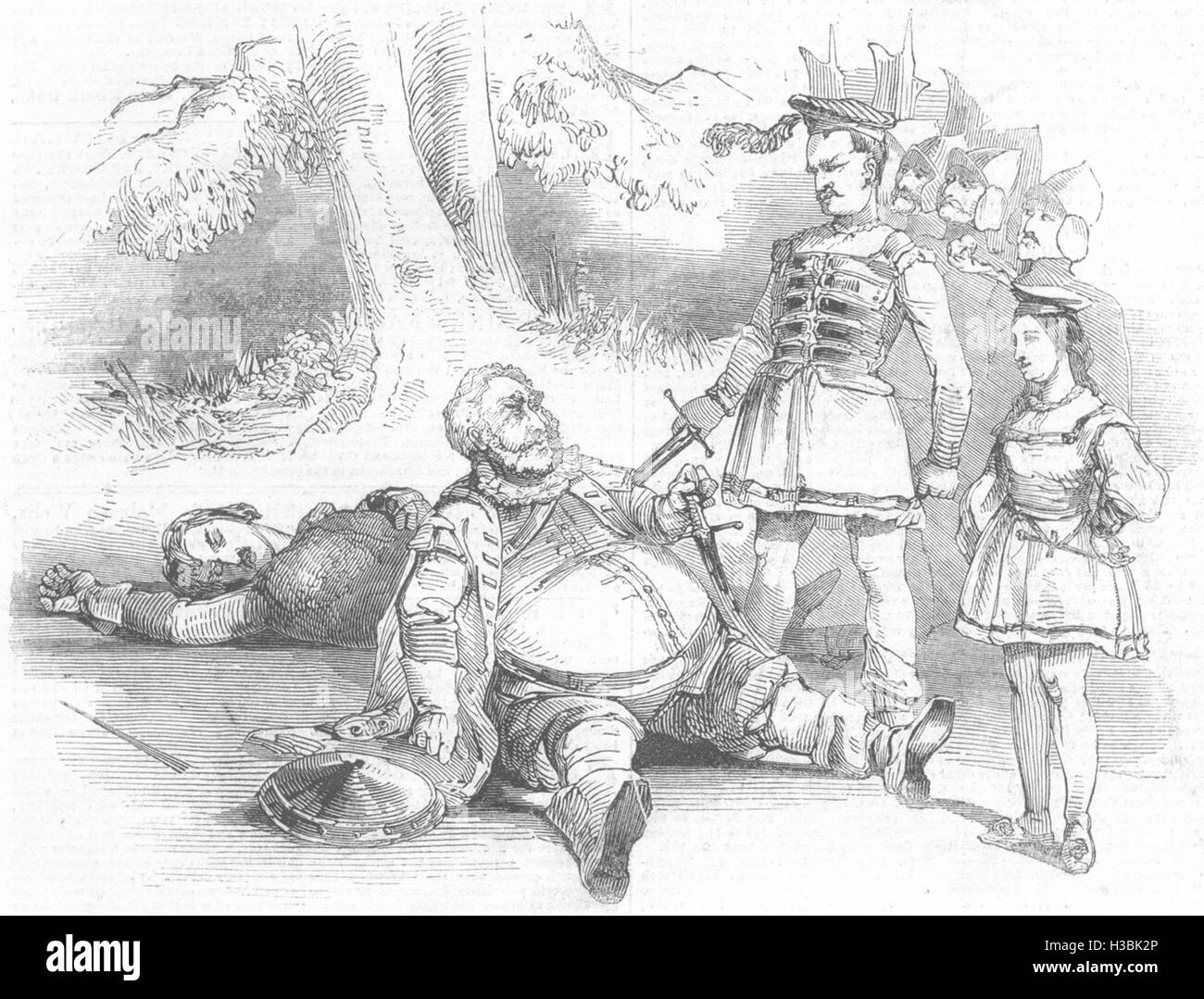 SHAKESPEARE Henry IV, Part 1; Lyceum theatre death of Hotspur 1844. The Illustrated London News Stock Photohttps://www.alamy.com/image-license-details/?v=1https://www.alamy.com/stock-photo-shakespeare-henry-iv-part-1-lyceum-theatre-death-of-hotspur-1844-the-122572990.html
SHAKESPEARE Henry IV, Part 1; Lyceum theatre death of Hotspur 1844. The Illustrated London News Stock Photohttps://www.alamy.com/image-license-details/?v=1https://www.alamy.com/stock-photo-shakespeare-henry-iv-part-1-lyceum-theatre-death-of-hotspur-1844-the-122572990.htmlRFH3BK2P–SHAKESPEARE Henry IV, Part 1; Lyceum theatre death of Hotspur 1844. The Illustrated London News
 Henry Iv Falstaff H4 Die Stock Photohttps://www.alamy.com/image-license-details/?v=1https://www.alamy.com/henry-iv-falstaff-h4-die-image5545995.html
Henry Iv Falstaff H4 Die Stock Photohttps://www.alamy.com/image-license-details/?v=1https://www.alamy.com/henry-iv-falstaff-h4-die-image5545995.htmlRMAY4G0C–Henry Iv Falstaff H4 Die
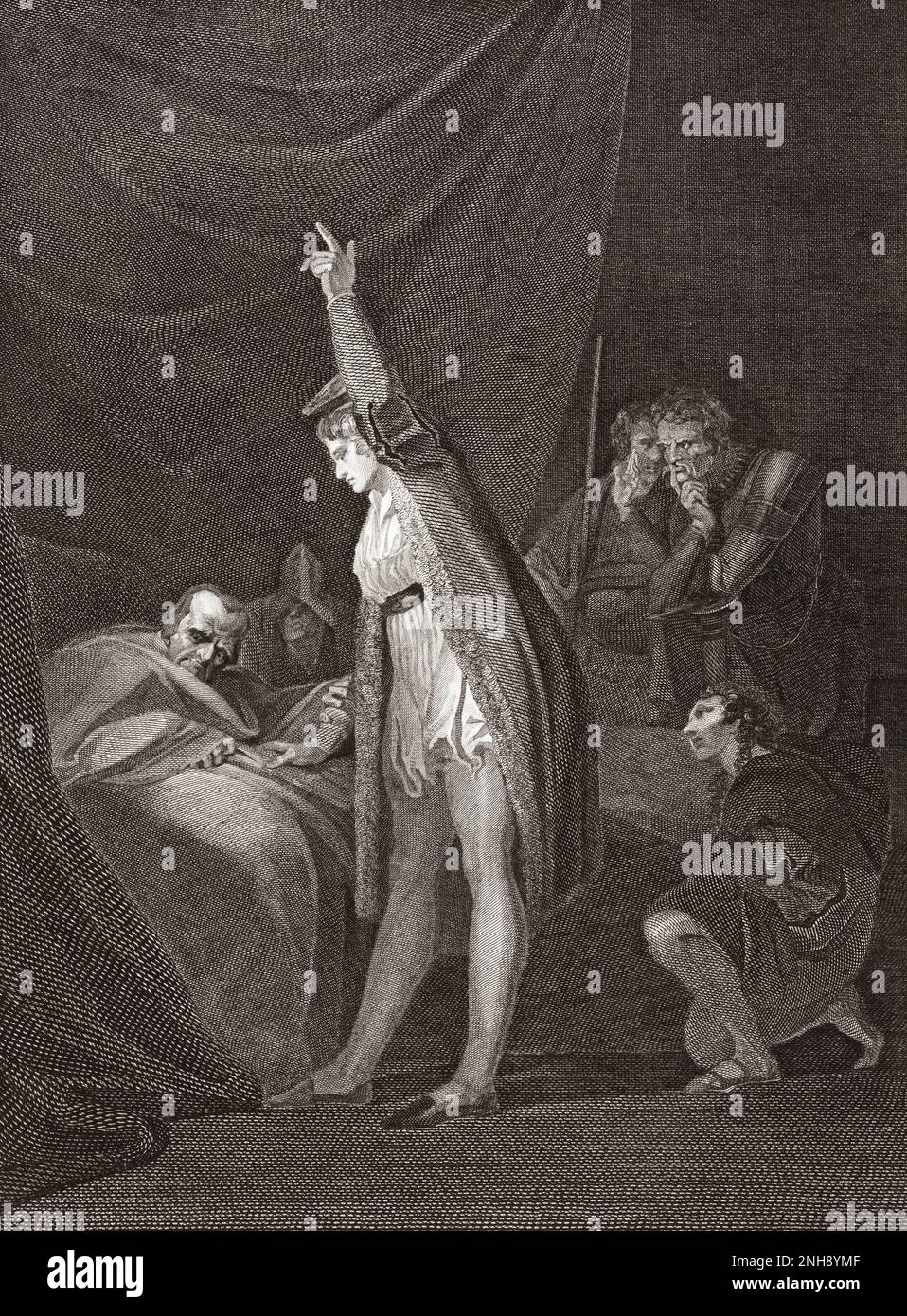 The death of Cardinal Beaufort . Standing beside Beaufort with his arm raised is King Henry VI. Cardinal Henry Beaufort c.1375 - 1447. After a print by William Bromley from the painting by Henry Fuseli originally featured in Robert Bowyer's Historic Gallery, published between 1793 and 1806. Stock Photohttps://www.alamy.com/image-license-details/?v=1https://www.alamy.com/the-death-of-cardinal-beaufort-standing-beside-beaufort-with-his-arm-raised-is-king-henry-vi-cardinal-henry-beaufort-c1375-1447-after-a-print-by-william-bromley-from-the-painting-by-henry-fuseli-originally-featured-in-robert-bowyers-historic-gallery-published-between-1793-and-1806-image526957551.html
The death of Cardinal Beaufort . Standing beside Beaufort with his arm raised is King Henry VI. Cardinal Henry Beaufort c.1375 - 1447. After a print by William Bromley from the painting by Henry Fuseli originally featured in Robert Bowyer's Historic Gallery, published between 1793 and 1806. Stock Photohttps://www.alamy.com/image-license-details/?v=1https://www.alamy.com/the-death-of-cardinal-beaufort-standing-beside-beaufort-with-his-arm-raised-is-king-henry-vi-cardinal-henry-beaufort-c1375-1447-after-a-print-by-william-bromley-from-the-painting-by-henry-fuseli-originally-featured-in-robert-bowyers-historic-gallery-published-between-1793-and-1806-image526957551.htmlRM2NH8YMF–The death of Cardinal Beaufort . Standing beside Beaufort with his arm raised is King Henry VI. Cardinal Henry Beaufort c.1375 - 1447. After a print by William Bromley from the painting by Henry Fuseli originally featured in Robert Bowyer's Historic Gallery, published between 1793 and 1806.
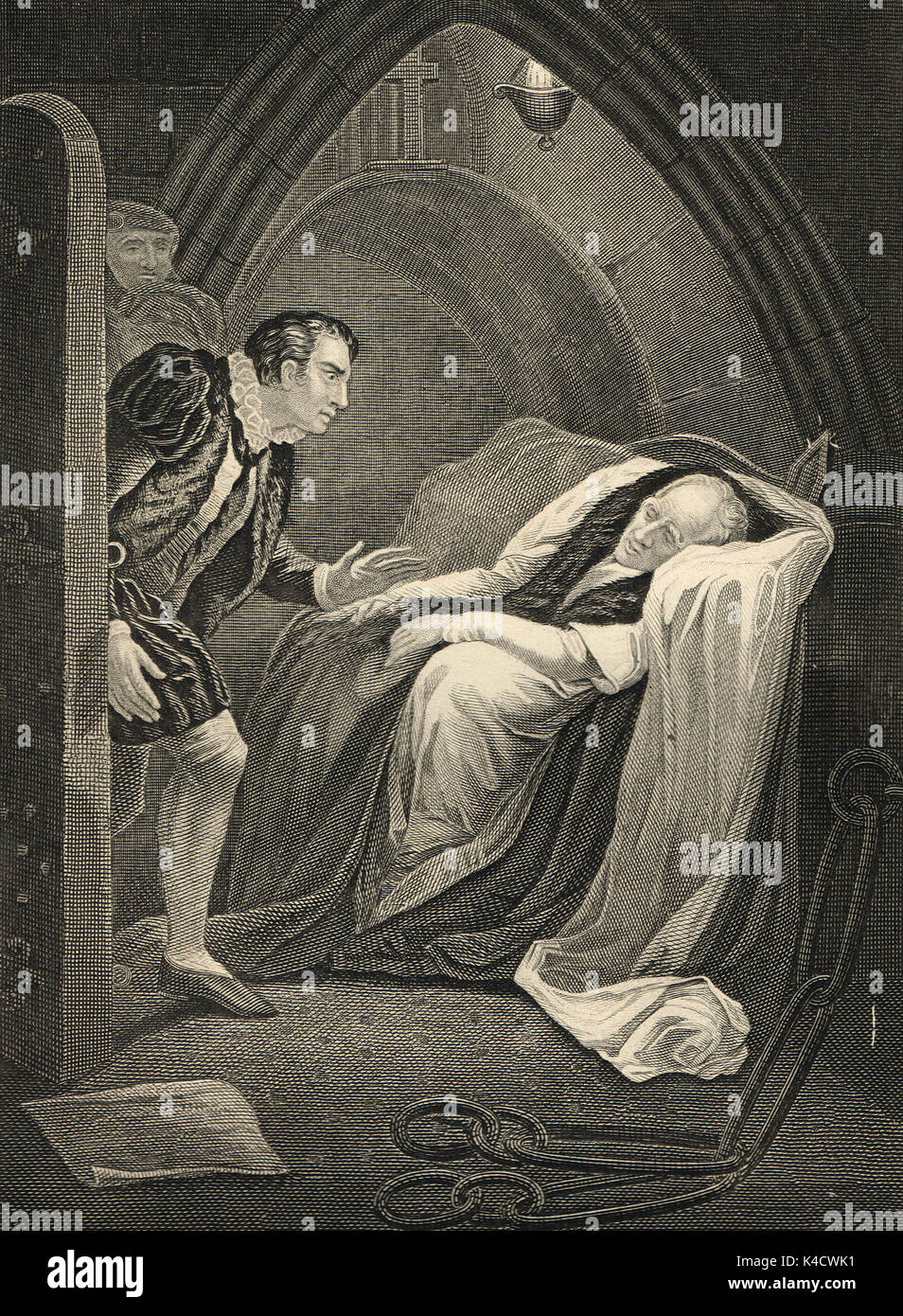 The death of Mortimer. Act II Scene 5 in Henry VI Part I by William Shakespeare. Stock Photohttps://www.alamy.com/image-license-details/?v=1https://www.alamy.com/the-death-of-mortimer-act-ii-scene-5-in-henry-vi-part-i-by-william-image157635493.html
The death of Mortimer. Act II Scene 5 in Henry VI Part I by William Shakespeare. Stock Photohttps://www.alamy.com/image-license-details/?v=1https://www.alamy.com/the-death-of-mortimer-act-ii-scene-5-in-henry-vi-part-i-by-william-image157635493.htmlRMK4CWK1–The death of Mortimer. Act II Scene 5 in Henry VI Part I by William Shakespeare.
 11. The Death of Henry IV and the Proclamation of the Regency 1625 by Peter Paul Rubens Stock Photohttps://www.alamy.com/image-license-details/?v=1https://www.alamy.com/11-the-death-of-henry-iv-and-the-proclamation-of-the-regency-1625-by-peter-paul-rubens-image558247853.html
11. The Death of Henry IV and the Proclamation of the Regency 1625 by Peter Paul Rubens Stock Photohttps://www.alamy.com/image-license-details/?v=1https://www.alamy.com/11-the-death-of-henry-iv-and-the-proclamation-of-the-regency-1625-by-peter-paul-rubens-image558247853.htmlRM2RC6AR9–11. The Death of Henry IV and the Proclamation of the Regency 1625 by Peter Paul Rubens
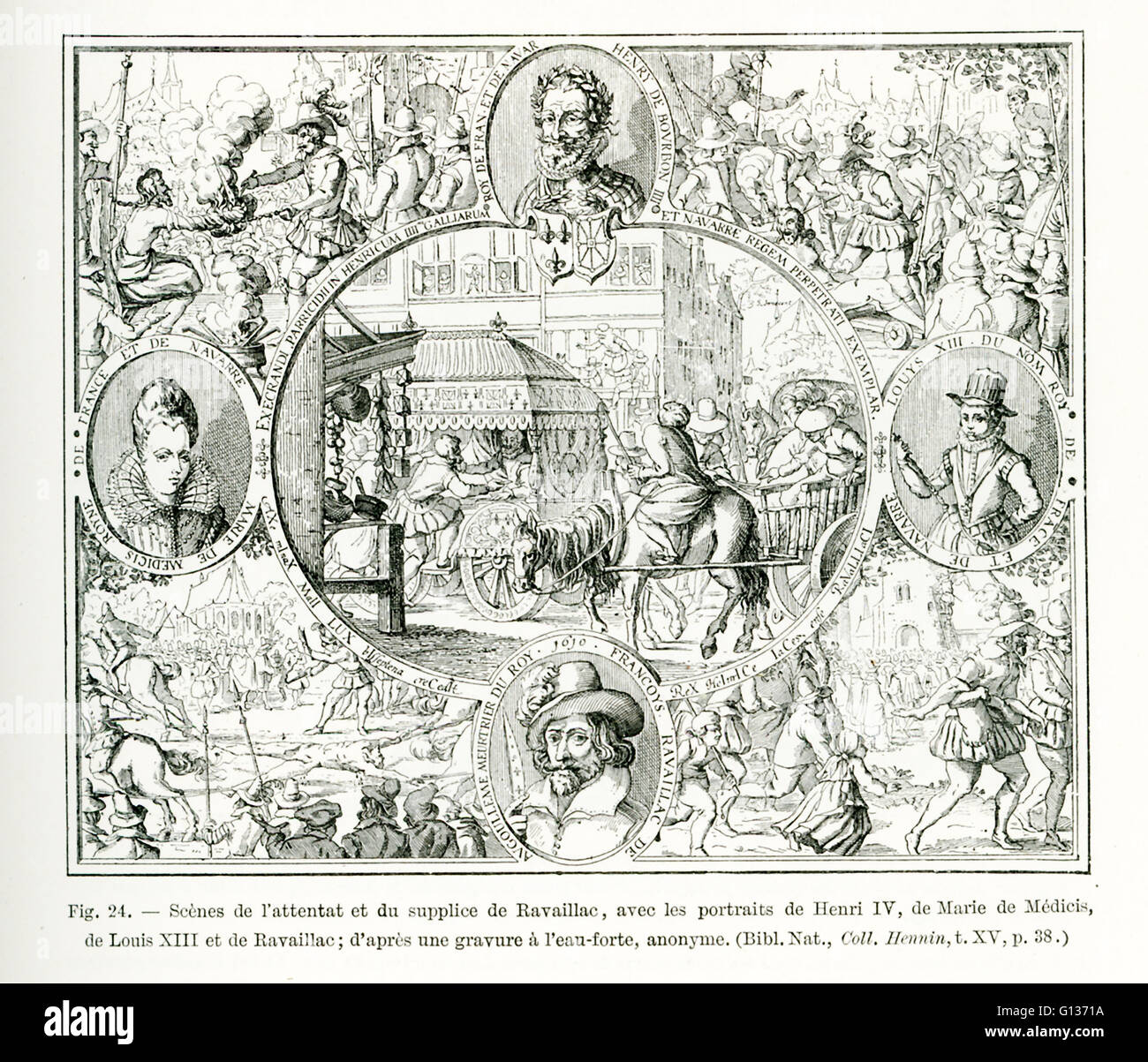 The caption for this engraving reads: Scenes of the attack and torture of Ravaillac, with portraits of Henri IV, Marie de Medicis, Louis XIII, Ravaillac; after an etching by an anonymous engraver. Francois Ravaillac murdered the French king Henry IV in 1610. He was a Catholic zealot and sought to persuade Henry IV to convert the Huguenots to Catholicism. Ravaillac was arrested after the assassination and tortured to divulge his accomplices, but he maintained he had none. He was condemned to death. Henry IV was succeeded by his son Louis XIII. Marie de Medicis was the wife of Henry IV. Stock Photohttps://www.alamy.com/image-license-details/?v=1https://www.alamy.com/stock-photo-the-caption-for-this-engraving-reads-scenes-of-the-attack-and-torture-103948246.html
The caption for this engraving reads: Scenes of the attack and torture of Ravaillac, with portraits of Henri IV, Marie de Medicis, Louis XIII, Ravaillac; after an etching by an anonymous engraver. Francois Ravaillac murdered the French king Henry IV in 1610. He was a Catholic zealot and sought to persuade Henry IV to convert the Huguenots to Catholicism. Ravaillac was arrested after the assassination and tortured to divulge his accomplices, but he maintained he had none. He was condemned to death. Henry IV was succeeded by his son Louis XIII. Marie de Medicis was the wife of Henry IV. Stock Photohttps://www.alamy.com/image-license-details/?v=1https://www.alamy.com/stock-photo-the-caption-for-this-engraving-reads-scenes-of-the-attack-and-torture-103948246.htmlRFG1371A–The caption for this engraving reads: Scenes of the attack and torture of Ravaillac, with portraits of Henri IV, Marie de Medicis, Louis XIII, Ravaillac; after an etching by an anonymous engraver. Francois Ravaillac murdered the French king Henry IV in 1610. He was a Catholic zealot and sought to persuade Henry IV to convert the Huguenots to Catholicism. Ravaillac was arrested after the assassination and tortured to divulge his accomplices, but he maintained he had none. He was condemned to death. Henry IV was succeeded by his son Louis XIII. Marie de Medicis was the wife of Henry IV.
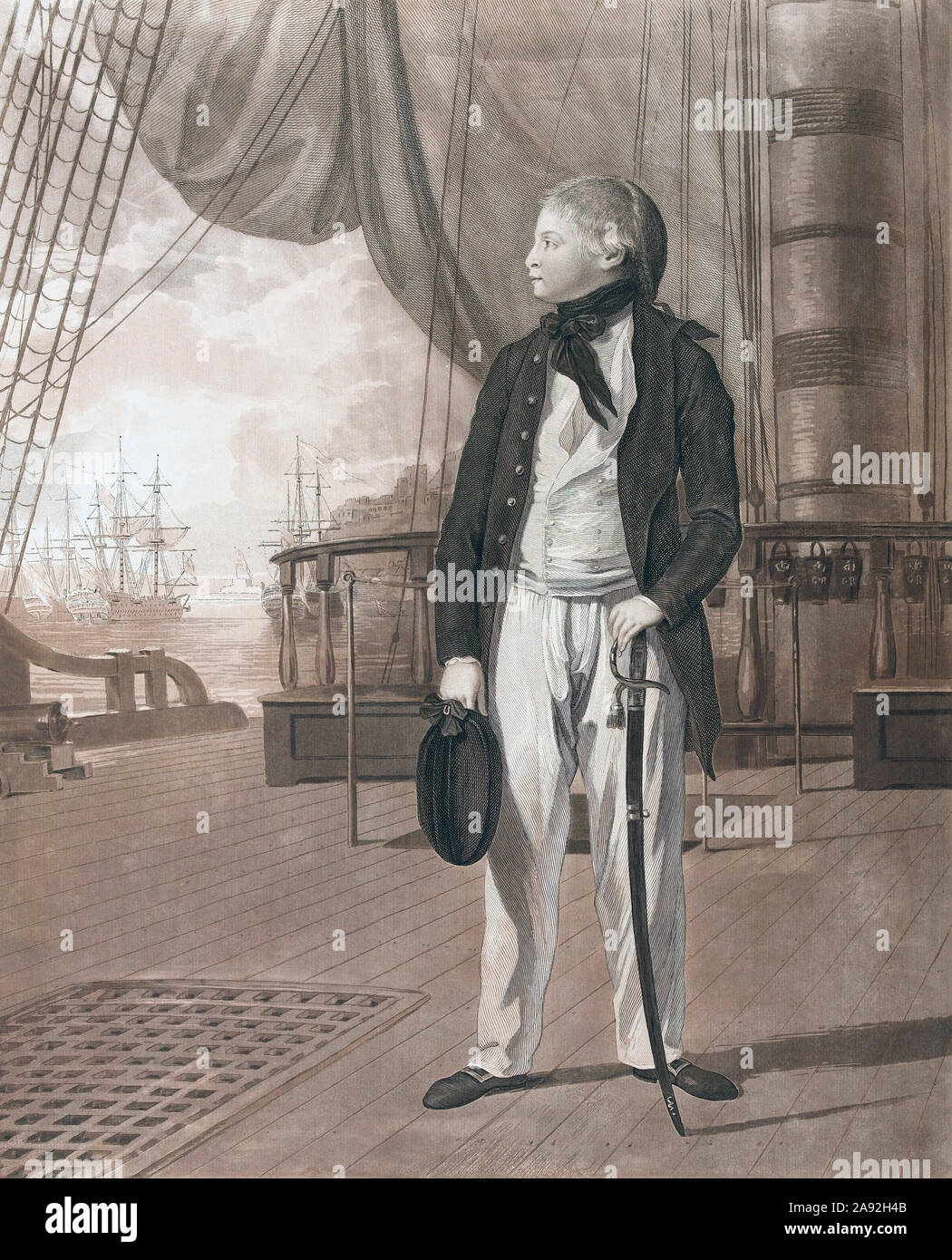 Prince William Henry, 1765-1837, later William IV, King of the United Kingdom of Great Britain and Ireland and also King of Hanover from 1830 until his death. The engraving shows him as a midshipman in the Royal Navy which he joined at 13 years of age. He was present at the Battle of Cape Vincent in 1780 when he was 14 and the picture is thought to commemorate that event. The print by Francesco Bartolozzi is based on a work by artist Benjamin West and was published in 1782. Stock Photohttps://www.alamy.com/image-license-details/?v=1https://www.alamy.com/prince-william-henry-1765-1837-later-william-iv-king-of-the-united-kingdom-of-great-britain-and-ireland-and-also-king-of-hanover-from-1830-until-his-death-the-engraving-shows-him-as-a-midshipman-in-the-royal-navy-which-he-joined-at-13-years-of-age-he-was-present-at-the-battle-of-cape-vincent-in-1780-when-he-was-14-and-the-picture-is-thought-to-commemorate-that-event-the-print-by-francesco-bartolozzi-is-based-on-a-work-by-artist-benjamin-west-and-was-published-in-1782-image332586251.html
Prince William Henry, 1765-1837, later William IV, King of the United Kingdom of Great Britain and Ireland and also King of Hanover from 1830 until his death. The engraving shows him as a midshipman in the Royal Navy which he joined at 13 years of age. He was present at the Battle of Cape Vincent in 1780 when he was 14 and the picture is thought to commemorate that event. The print by Francesco Bartolozzi is based on a work by artist Benjamin West and was published in 1782. Stock Photohttps://www.alamy.com/image-license-details/?v=1https://www.alamy.com/prince-william-henry-1765-1837-later-william-iv-king-of-the-united-kingdom-of-great-britain-and-ireland-and-also-king-of-hanover-from-1830-until-his-death-the-engraving-shows-him-as-a-midshipman-in-the-royal-navy-which-he-joined-at-13-years-of-age-he-was-present-at-the-battle-of-cape-vincent-in-1780-when-he-was-14-and-the-picture-is-thought-to-commemorate-that-event-the-print-by-francesco-bartolozzi-is-based-on-a-work-by-artist-benjamin-west-and-was-published-in-1782-image332586251.htmlRM2A92H4B–Prince William Henry, 1765-1837, later William IV, King of the United Kingdom of Great Britain and Ireland and also King of Hanover from 1830 until his death. The engraving shows him as a midshipman in the Royal Navy which he joined at 13 years of age. He was present at the Battle of Cape Vincent in 1780 when he was 14 and the picture is thought to commemorate that event. The print by Francesco Bartolozzi is based on a work by artist Benjamin West and was published in 1782.
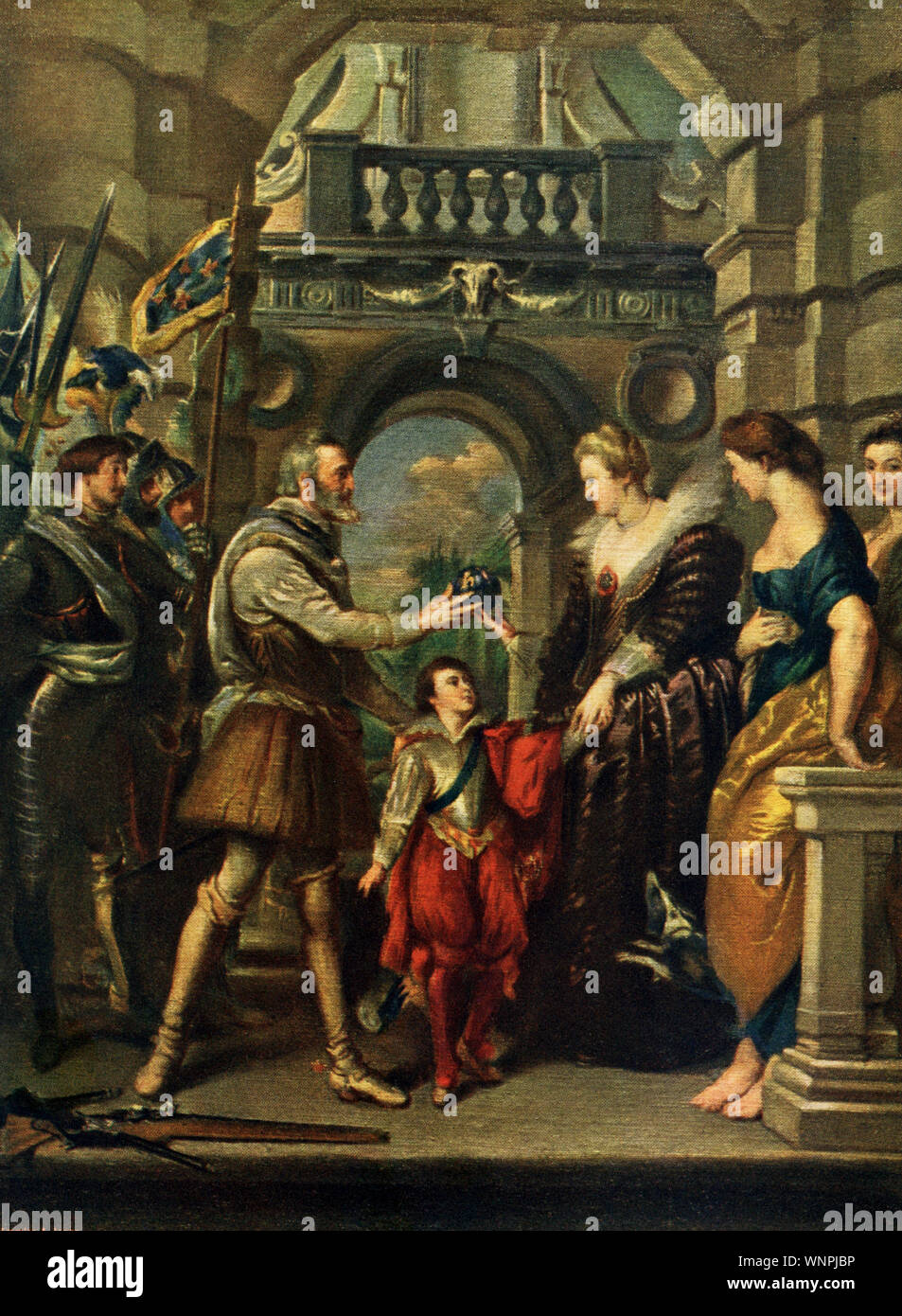 This painting by P.P. Rubens (1577-1640) shows King Henry IV (died of France and his wife Maria de’ Medici (died 1642). Here we see the king just before his departure to the war against Germany. It is housed in the Louvre in Paris. This one is titled Consignment of the Regency and is part of the Henry IV Cycle that was commissioned by Marie de’ Medici. Here, Henry IV entrusts Marie with both the regency of France and the care of the dauphin shortly before his war campaigns and eventual death. To the right of Marie is the figure Prudence. Stock Photohttps://www.alamy.com/image-license-details/?v=1https://www.alamy.com/this-painting-by-pp-rubens-1577-1640-shows-king-henry-iv-died-of-france-and-his-wife-maria-de-medici-died-1642-here-we-see-the-king-just-before-his-departure-to-the-war-against-germany-it-is-housed-in-the-louvre-in-paris-this-one-is-titled-consignment-of-the-regency-and-is-part-of-the-henry-iv-cycle-that-was-commissioned-by-marie-de-medici-here-henry-iv-entrusts-marie-with-both-the-regency-of-france-and-the-care-of-the-dauphin-shortly-before-his-war-campaigns-and-eventual-death-to-the-right-of-marie-is-the-figure-prudence-image271560682.html
This painting by P.P. Rubens (1577-1640) shows King Henry IV (died of France and his wife Maria de’ Medici (died 1642). Here we see the king just before his departure to the war against Germany. It is housed in the Louvre in Paris. This one is titled Consignment of the Regency and is part of the Henry IV Cycle that was commissioned by Marie de’ Medici. Here, Henry IV entrusts Marie with both the regency of France and the care of the dauphin shortly before his war campaigns and eventual death. To the right of Marie is the figure Prudence. Stock Photohttps://www.alamy.com/image-license-details/?v=1https://www.alamy.com/this-painting-by-pp-rubens-1577-1640-shows-king-henry-iv-died-of-france-and-his-wife-maria-de-medici-died-1642-here-we-see-the-king-just-before-his-departure-to-the-war-against-germany-it-is-housed-in-the-louvre-in-paris-this-one-is-titled-consignment-of-the-regency-and-is-part-of-the-henry-iv-cycle-that-was-commissioned-by-marie-de-medici-here-henry-iv-entrusts-marie-with-both-the-regency-of-france-and-the-care-of-the-dauphin-shortly-before-his-war-campaigns-and-eventual-death-to-the-right-of-marie-is-the-figure-prudence-image271560682.htmlRFWNPJBP–This painting by P.P. Rubens (1577-1640) shows King Henry IV (died of France and his wife Maria de’ Medici (died 1642). Here we see the king just before his departure to the war against Germany. It is housed in the Louvre in Paris. This one is titled Consignment of the Regency and is part of the Henry IV Cycle that was commissioned by Marie de’ Medici. Here, Henry IV entrusts Marie with both the regency of France and the care of the dauphin shortly before his war campaigns and eventual death. To the right of Marie is the figure Prudence.
 Death of Hotspur, Battle of Shrewsbury, 21 July 1403. Rebel army led by Henry Percy AKA Harry Hotspur. Stock Photohttps://www.alamy.com/image-license-details/?v=1https://www.alamy.com/stock-photo-death-of-hotspur-battle-of-shrewsbury-21-july-1403-rebel-army-led-173779611.html
Death of Hotspur, Battle of Shrewsbury, 21 July 1403. Rebel army led by Henry Percy AKA Harry Hotspur. Stock Photohttps://www.alamy.com/image-license-details/?v=1https://www.alamy.com/stock-photo-death-of-hotspur-battle-of-shrewsbury-21-july-1403-rebel-army-led-173779611.htmlRMM2M9JK–Death of Hotspur, Battle of Shrewsbury, 21 July 1403. Rebel army led by Henry Percy AKA Harry Hotspur.
 Execution of François Ravaillac, circa 1578 - 1610. Ravaillac, a fanatical Catholic, assassinated French King Henry IV believing the king was starting a war against the Pope. At his execution he was tortured then torn apart by four horses, a death reserved for regicides. After a contemporary print. Stock Photohttps://www.alamy.com/image-license-details/?v=1https://www.alamy.com/execution-of-franois-ravaillac-circa-1578-1610-ravaillac-a-fanatical-catholic-assassinated-french-king-henry-iv-believing-the-king-was-starting-a-war-against-the-pope-at-his-execution-he-was-tortured-then-torn-apart-by-four-horses-a-death-reserved-for-regicides-after-a-contemporary-print-image518774798.html
Execution of François Ravaillac, circa 1578 - 1610. Ravaillac, a fanatical Catholic, assassinated French King Henry IV believing the king was starting a war against the Pope. At his execution he was tortured then torn apart by four horses, a death reserved for regicides. After a contemporary print. Stock Photohttps://www.alamy.com/image-license-details/?v=1https://www.alamy.com/execution-of-franois-ravaillac-circa-1578-1610-ravaillac-a-fanatical-catholic-assassinated-french-king-henry-iv-believing-the-king-was-starting-a-war-against-the-pope-at-his-execution-he-was-tortured-then-torn-apart-by-four-horses-a-death-reserved-for-regicides-after-a-contemporary-print-image518774798.htmlRM2N406FA–Execution of François Ravaillac, circa 1578 - 1610. Ravaillac, a fanatical Catholic, assassinated French King Henry IV believing the king was starting a war against the Pope. At his execution he was tortured then torn apart by four horses, a death reserved for regicides. After a contemporary print.
 Execution of the Archbishop of York, Richard le Scrope, 8 June 1405, Northern Rising against King Henry IV Stock Photohttps://www.alamy.com/image-license-details/?v=1https://www.alamy.com/stock-photo-execution-of-the-archbishop-of-york-richard-le-scrope-8-june-1405-174286673.html
Execution of the Archbishop of York, Richard le Scrope, 8 June 1405, Northern Rising against King Henry IV Stock Photohttps://www.alamy.com/image-license-details/?v=1https://www.alamy.com/stock-photo-execution-of-the-archbishop-of-york-richard-le-scrope-8-june-1405-174286673.htmlRMM3FCC1–Execution of the Archbishop of York, Richard le Scrope, 8 June 1405, Northern Rising against King Henry IV
 Assassination of Henry IV (French: Henri IV; (1553 – 14 May 1610), Good King Henry or Henry the Great, was King of Navarre (as Henry III) from 1572 and King of France from 1589 to 1610. He was the first monarch of France from the House of Bourbon, a cadet branch of the Capetian dynasty. He pragmatically balanced the interests of the Catholic and Protestant parties in France as well as among the European states. He was assassinated in Paris in 1610 by a Catholic zealot, and was succeeded by his son Louis XIII. Stock Photohttps://www.alamy.com/image-license-details/?v=1https://www.alamy.com/assassination-of-henry-iv-french-henri-iv-1553-14-may-1610-good-king-henry-or-henry-the-great-was-king-of-navarre-as-henry-iii-from-1572-and-king-of-france-from-1589-to-1610-he-was-the-first-monarch-of-france-from-the-house-of-bourbon-a-cadet-branch-of-the-capetian-dynasty-he-pragmatically-balanced-the-interests-of-the-catholic-and-protestant-parties-in-france-as-well-as-among-the-european-states-he-was-assassinated-in-paris-in-1610-by-a-catholic-zealot-and-was-succeeded-by-his-son-louis-xiii-image634299432.html
Assassination of Henry IV (French: Henri IV; (1553 – 14 May 1610), Good King Henry or Henry the Great, was King of Navarre (as Henry III) from 1572 and King of France from 1589 to 1610. He was the first monarch of France from the House of Bourbon, a cadet branch of the Capetian dynasty. He pragmatically balanced the interests of the Catholic and Protestant parties in France as well as among the European states. He was assassinated in Paris in 1610 by a Catholic zealot, and was succeeded by his son Louis XIII. Stock Photohttps://www.alamy.com/image-license-details/?v=1https://www.alamy.com/assassination-of-henry-iv-french-henri-iv-1553-14-may-1610-good-king-henry-or-henry-the-great-was-king-of-navarre-as-henry-iii-from-1572-and-king-of-france-from-1589-to-1610-he-was-the-first-monarch-of-france-from-the-house-of-bourbon-a-cadet-branch-of-the-capetian-dynasty-he-pragmatically-balanced-the-interests-of-the-catholic-and-protestant-parties-in-france-as-well-as-among-the-european-states-he-was-assassinated-in-paris-in-1610-by-a-catholic-zealot-and-was-succeeded-by-his-son-louis-xiii-image634299432.htmlRM2YRXRB4–Assassination of Henry IV (French: Henri IV; (1553 – 14 May 1610), Good King Henry or Henry the Great, was King of Navarre (as Henry III) from 1572 and King of France from 1589 to 1610. He was the first monarch of France from the House of Bourbon, a cadet branch of the Capetian dynasty. He pragmatically balanced the interests of the Catholic and Protestant parties in France as well as among the European states. He was assassinated in Paris in 1610 by a Catholic zealot, and was succeeded by his son Louis XIII.
 Portrait of François Ravaillac who murdered King Henry IV on 14 May 1610. He shows the dagger with which he stabbed the king to death, Portrait of François Ravaillac, print maker: Crispijn van de Passe (I), Utrecht, in or after 1610 - 1637, paper, engraving, h 143 mm × w 100 mm Stock Photohttps://www.alamy.com/image-license-details/?v=1https://www.alamy.com/portrait-of-franois-ravaillac-who-murdered-king-henry-iv-on-14-may-1610-he-shows-the-dagger-with-which-he-stabbed-the-king-to-death-portrait-of-franois-ravaillac-print-maker-crispijn-van-de-passe-i-utrecht-in-or-after-1610-1637-paper-engraving-h-143-mm-w-100-mm-image473395306.html
Portrait of François Ravaillac who murdered King Henry IV on 14 May 1610. He shows the dagger with which he stabbed the king to death, Portrait of François Ravaillac, print maker: Crispijn van de Passe (I), Utrecht, in or after 1610 - 1637, paper, engraving, h 143 mm × w 100 mm Stock Photohttps://www.alamy.com/image-license-details/?v=1https://www.alamy.com/portrait-of-franois-ravaillac-who-murdered-king-henry-iv-on-14-may-1610-he-shows-the-dagger-with-which-he-stabbed-the-king-to-death-portrait-of-franois-ravaillac-print-maker-crispijn-van-de-passe-i-utrecht-in-or-after-1610-1637-paper-engraving-h-143-mm-w-100-mm-image473395306.htmlRM2JE50F6–Portrait of François Ravaillac who murdered King Henry IV on 14 May 1610. He shows the dagger with which he stabbed the king to death, Portrait of François Ravaillac, print maker: Crispijn van de Passe (I), Utrecht, in or after 1610 - 1637, paper, engraving, h 143 mm × w 100 mm
 Assassination of Henry IV (French: Henri IV; (1553 - 14 May 1610), Good King Henry or Henry the Great, was King of Navarre (as Henry III) from 1572 and King of France from 1589 to 1610. He was the first monarch of France from the House of Bourbon, a cadet branch of the Capetian dynasty. He pragmatically balanced the interests of the Catholic and Protestant parties in France as well as among the European states. He was assassinated in Paris in 1610 by a Catholic zealot, and was succeeded by his son Louis XIII. Stock Photohttps://www.alamy.com/image-license-details/?v=1https://www.alamy.com/assassination-of-henry-iv-french-henri-iv-1553-14-may-1610-good-king-henry-or-henry-the-great-was-king-of-navarre-as-henry-iii-from-1572-and-king-of-france-from-1589-to-1610-he-was-the-first-monarch-of-france-from-the-house-of-bourbon-a-cadet-branch-of-the-capetian-dynasty-he-pragmatically-balanced-the-interests-of-the-catholic-and-protestant-parties-in-france-as-well-as-among-the-european-states-he-was-assassinated-in-paris-in-1610-by-a-catholic-zealot-and-was-succeeded-by-his-son-louis-xiii-image634299399.html
Assassination of Henry IV (French: Henri IV; (1553 - 14 May 1610), Good King Henry or Henry the Great, was King of Navarre (as Henry III) from 1572 and King of France from 1589 to 1610. He was the first monarch of France from the House of Bourbon, a cadet branch of the Capetian dynasty. He pragmatically balanced the interests of the Catholic and Protestant parties in France as well as among the European states. He was assassinated in Paris in 1610 by a Catholic zealot, and was succeeded by his son Louis XIII. Stock Photohttps://www.alamy.com/image-license-details/?v=1https://www.alamy.com/assassination-of-henry-iv-french-henri-iv-1553-14-may-1610-good-king-henry-or-henry-the-great-was-king-of-navarre-as-henry-iii-from-1572-and-king-of-france-from-1589-to-1610-he-was-the-first-monarch-of-france-from-the-house-of-bourbon-a-cadet-branch-of-the-capetian-dynasty-he-pragmatically-balanced-the-interests-of-the-catholic-and-protestant-parties-in-france-as-well-as-among-the-european-states-he-was-assassinated-in-paris-in-1610-by-a-catholic-zealot-and-was-succeeded-by-his-son-louis-xiii-image634299399.htmlRM2YRXR9Y–Assassination of Henry IV (French: Henri IV; (1553 - 14 May 1610), Good King Henry or Henry the Great, was King of Navarre (as Henry III) from 1572 and King of France from 1589 to 1610. He was the first monarch of France from the House of Bourbon, a cadet branch of the Capetian dynasty. He pragmatically balanced the interests of the Catholic and Protestant parties in France as well as among the European states. He was assassinated in Paris in 1610 by a Catholic zealot, and was succeeded by his son Louis XIII.
 The Death of Henry IV and the Proclamation of the Regency. Museum: State Hermitage, St. Petersburg. Author: Rubens, Pieter Paul. Stock Photohttps://www.alamy.com/image-license-details/?v=1https://www.alamy.com/the-death-of-henry-iv-and-the-proclamation-of-the-regency-museum-state-hermitage-st-petersburg-author-rubens-pieter-paul-image231703857.html
The Death of Henry IV and the Proclamation of the Regency. Museum: State Hermitage, St. Petersburg. Author: Rubens, Pieter Paul. Stock Photohttps://www.alamy.com/image-license-details/?v=1https://www.alamy.com/the-death-of-henry-iv-and-the-proclamation-of-the-regency-museum-state-hermitage-st-petersburg-author-rubens-pieter-paul-image231703857.htmlRMRCY0HN–The Death of Henry IV and the Proclamation of the Regency. Museum: State Hermitage, St. Petersburg. Author: Rubens, Pieter Paul.
 Engraving depicting King Henry IV on his death-bed Stock Photohttps://www.alamy.com/image-license-details/?v=1https://www.alamy.com/stock-photo-engraving-depicting-king-henry-iv-on-his-death-bed-104149669.html
Engraving depicting King Henry IV on his death-bed Stock Photohttps://www.alamy.com/image-license-details/?v=1https://www.alamy.com/stock-photo-engraving-depicting-king-henry-iv-on-his-death-bed-104149669.htmlRMG1CBY1–Engraving depicting King Henry IV on his death-bed
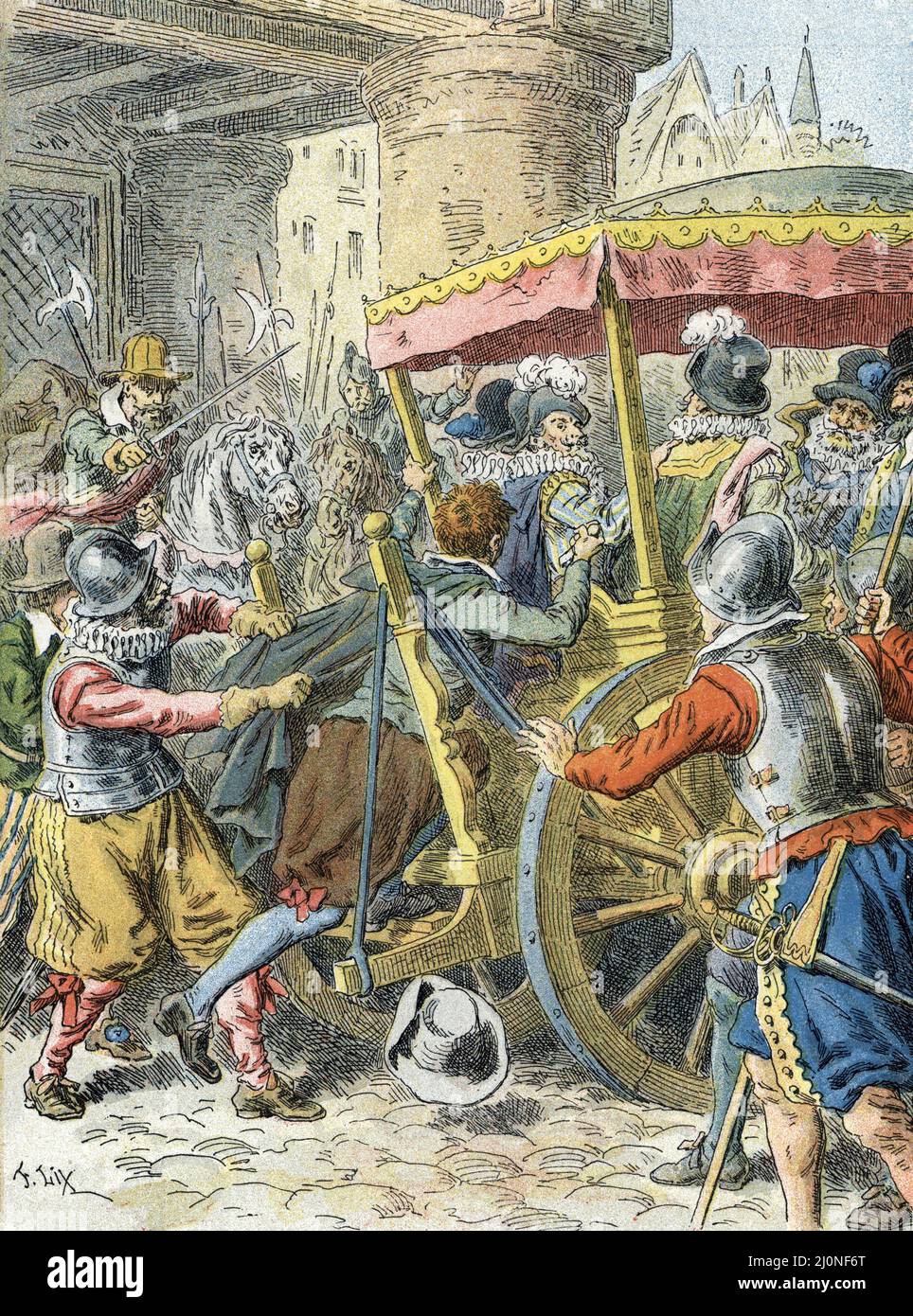 'Assassinat du roi de France Henri IV (1553-1610) le 14 mai 1610 tue par francois Ravaillac (1577-1610)' (Assassination of king of France Henry IV killed on 14 May 1610 by a Catholic fanatic, Francois Ravaillac) Gravure tiree de 'La France a travers les siecles' de Witt 1897 Collection privee Stock Photohttps://www.alamy.com/image-license-details/?v=1https://www.alamy.com/assassinat-du-roi-de-france-henri-iv-1553-1610-le-14-mai-1610-tue-par-francois-ravaillac-1577-1610-assassination-of-king-of-france-henry-iv-killed-on-14-may-1610-by-a-catholic-fanatic-francois-ravaillac-gravure-tiree-de-la-france-a-travers-les-siecles-de-witt-1897-collection-privee-image465152880.html
'Assassinat du roi de France Henri IV (1553-1610) le 14 mai 1610 tue par francois Ravaillac (1577-1610)' (Assassination of king of France Henry IV killed on 14 May 1610 by a Catholic fanatic, Francois Ravaillac) Gravure tiree de 'La France a travers les siecles' de Witt 1897 Collection privee Stock Photohttps://www.alamy.com/image-license-details/?v=1https://www.alamy.com/assassinat-du-roi-de-france-henri-iv-1553-1610-le-14-mai-1610-tue-par-francois-ravaillac-1577-1610-assassination-of-king-of-france-henry-iv-killed-on-14-may-1610-by-a-catholic-fanatic-francois-ravaillac-gravure-tiree-de-la-france-a-travers-les-siecles-de-witt-1897-collection-privee-image465152880.htmlRM2J0NF6T–'Assassinat du roi de France Henri IV (1553-1610) le 14 mai 1610 tue par francois Ravaillac (1577-1610)' (Assassination of king of France Henry IV killed on 14 May 1610 by a Catholic fanatic, Francois Ravaillac) Gravure tiree de 'La France a travers les siecles' de Witt 1897 Collection privee
 Death of King Charles IX at the Château de Vincennes in 1574. Illustration by Hermann Vogel published in 'Henri IV', written by Georges Montorgueil and published by Boivin in 1907. Stock Photohttps://www.alamy.com/image-license-details/?v=1https://www.alamy.com/death-of-king-charles-ix-at-the-chteau-de-vincennes-in-1574-illustration-by-hermann-vogel-published-in-henri-iv-written-by-georges-montorgueil-and-published-by-boivin-in-1907-image610220812.html
Death of King Charles IX at the Château de Vincennes in 1574. Illustration by Hermann Vogel published in 'Henri IV', written by Georges Montorgueil and published by Boivin in 1907. Stock Photohttps://www.alamy.com/image-license-details/?v=1https://www.alamy.com/death-of-king-charles-ix-at-the-chteau-de-vincennes-in-1574-illustration-by-hermann-vogel-published-in-henri-iv-written-by-georges-montorgueil-and-published-by-boivin-in-1907-image610220812.htmlRM2XCNXTC–Death of King Charles IX at the Château de Vincennes in 1574. Illustration by Hermann Vogel published in 'Henri IV', written by Georges Montorgueil and published by Boivin in 1907.
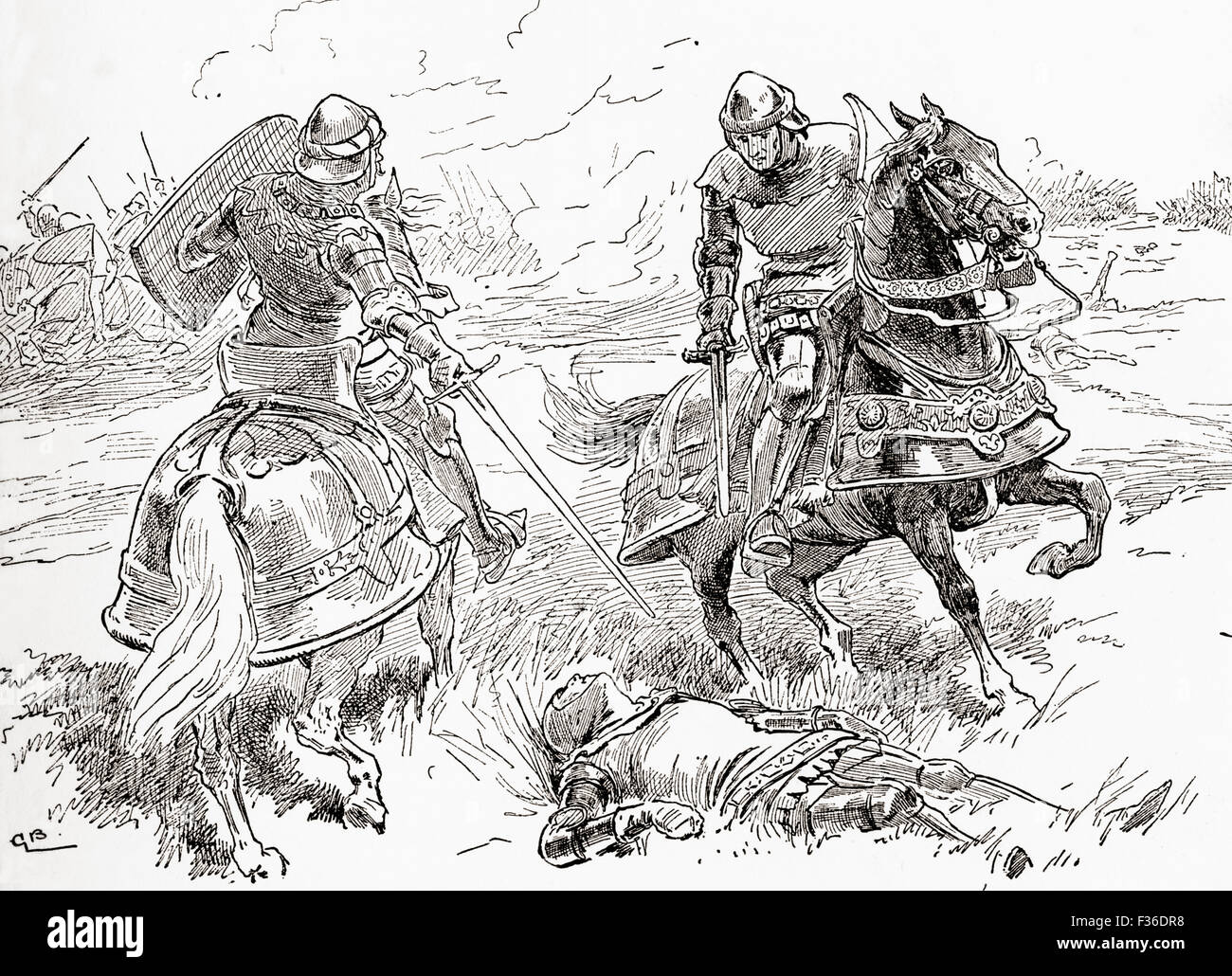 A scene from William Shakespeare's play King Henry IV, Part 1, Act V, scene 3. Earl of Douglas: 'All's done, all's won, here breathless lies the king.' Illustration by Gordon Browne. Stock Photohttps://www.alamy.com/image-license-details/?v=1https://www.alamy.com/stock-photo-a-scene-from-william-shakespeares-play-king-henry-iv-part-1-act-v-88038364.html
A scene from William Shakespeare's play King Henry IV, Part 1, Act V, scene 3. Earl of Douglas: 'All's done, all's won, here breathless lies the king.' Illustration by Gordon Browne. Stock Photohttps://www.alamy.com/image-license-details/?v=1https://www.alamy.com/stock-photo-a-scene-from-william-shakespeares-play-king-henry-iv-part-1-act-v-88038364.htmlRMF36DR8–A scene from William Shakespeare's play King Henry IV, Part 1, Act V, scene 3. Earl of Douglas: 'All's done, all's won, here breathless lies the king.' Illustration by Gordon Browne.
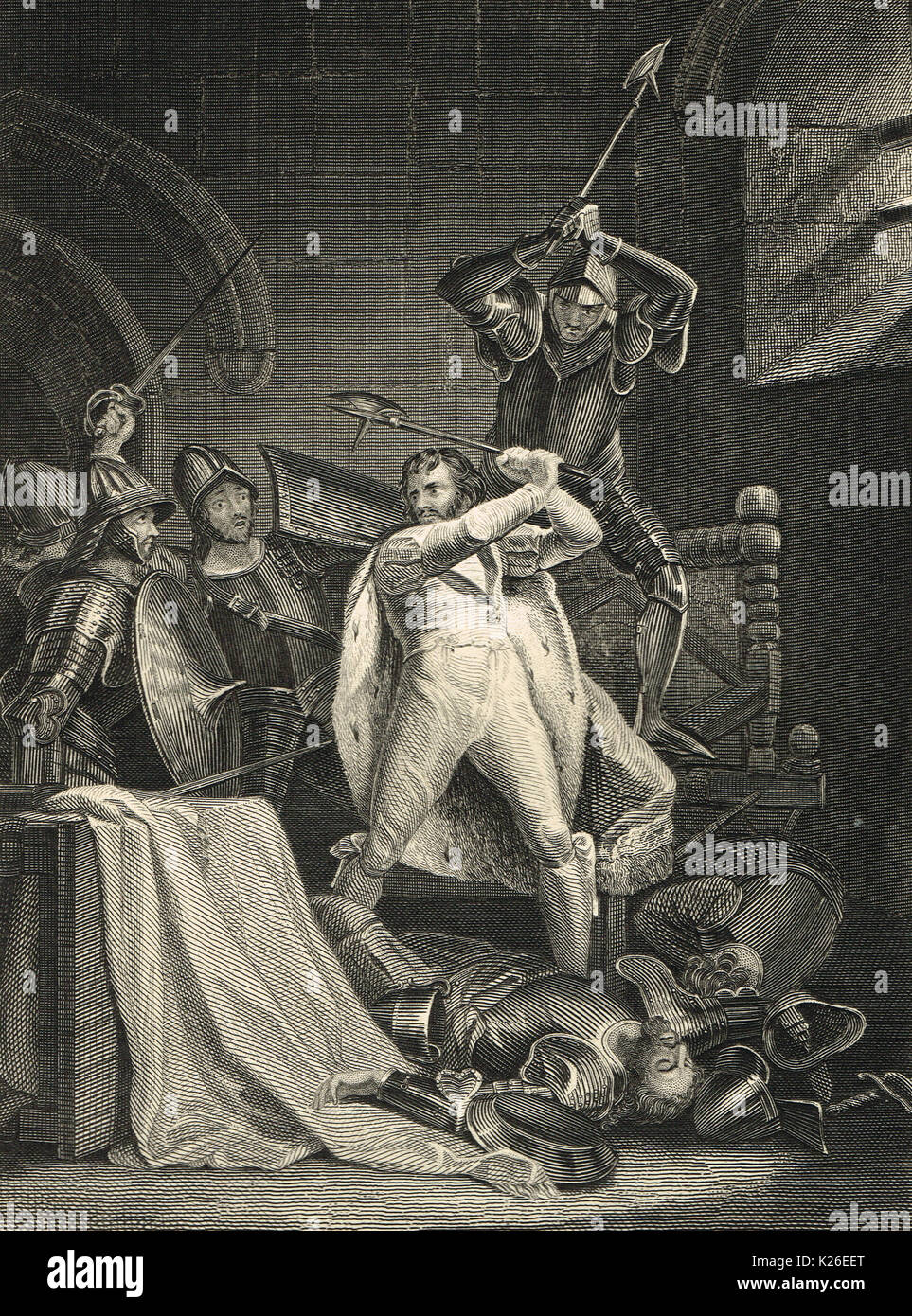 Death of King Richard II, circa 1400 Stock Photohttps://www.alamy.com/image-license-details/?v=1https://www.alamy.com/death-of-king-richard-ii-circa-1400-image156265728.html
Death of King Richard II, circa 1400 Stock Photohttps://www.alamy.com/image-license-details/?v=1https://www.alamy.com/death-of-king-richard-ii-circa-1400-image156265728.htmlRMK26EET–Death of King Richard II, circa 1400
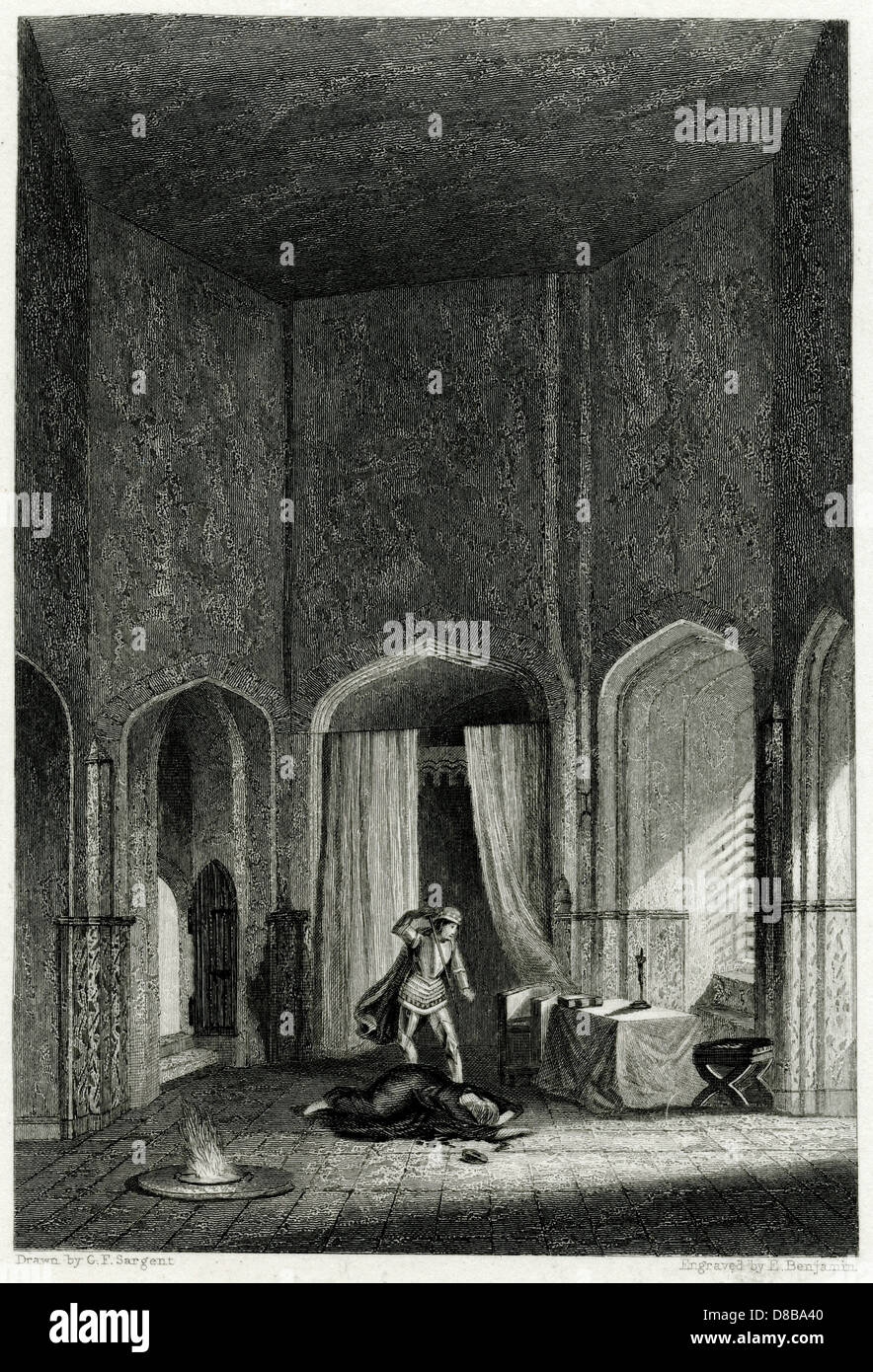 Death of King Henry VI Stock Photohttps://www.alamy.com/image-license-details/?v=1https://www.alamy.com/stock-photo-death-of-king-henry-vi-56797776.html
Death of King Henry VI Stock Photohttps://www.alamy.com/image-license-details/?v=1https://www.alamy.com/stock-photo-death-of-king-henry-vi-56797776.htmlRMD8BA40–Death of King Henry VI
 Death of Henry IV, 1413 - Vintage British Cigarette Card - Victorian Era Stock Photohttps://www.alamy.com/image-license-details/?v=1https://www.alamy.com/death-of-henry-iv-1413-vintage-british-cigarette-card-victorian-era-image547496181.html
Death of Henry IV, 1413 - Vintage British Cigarette Card - Victorian Era Stock Photohttps://www.alamy.com/image-license-details/?v=1https://www.alamy.com/death-of-henry-iv-1413-vintage-british-cigarette-card-victorian-era-image547496181.htmlRM2PPMGY1–Death of Henry IV, 1413 - Vintage British Cigarette Card - Victorian Era
 Henry IV Part II Stock Photohttps://www.alamy.com/image-license-details/?v=1https://www.alamy.com/stock-photo-henry-iv-part-ii-105289991.html
Henry IV Part II Stock Photohttps://www.alamy.com/image-license-details/?v=1https://www.alamy.com/stock-photo-henry-iv-part-ii-105289991.htmlRMG38ACR–Henry IV Part II
 Herberg interior with men in conversation about the death of Henry IV, Benoit Louis Prevost, after Jean Michel Moreau, 1788 print Paris paper etching / engraving / letterpress printing king. inn, coffee-house, public house, etc. Stock Photohttps://www.alamy.com/image-license-details/?v=1https://www.alamy.com/herberg-interior-with-men-in-conversation-about-the-death-of-henry-iv-benoit-louis-prevost-after-jean-michel-moreau-1788-print-paris-paper-etching-engraving-letterpress-printing-king-inn-coffee-house-public-house-etc-image593680379.html
Herberg interior with men in conversation about the death of Henry IV, Benoit Louis Prevost, after Jean Michel Moreau, 1788 print Paris paper etching / engraving / letterpress printing king. inn, coffee-house, public house, etc. Stock Photohttps://www.alamy.com/image-license-details/?v=1https://www.alamy.com/herberg-interior-with-men-in-conversation-about-the-death-of-henry-iv-benoit-louis-prevost-after-jean-michel-moreau-1788-print-paris-paper-etching-engraving-letterpress-printing-king-inn-coffee-house-public-house-etc-image593680379.htmlRM2WDTDAK–Herberg interior with men in conversation about the death of Henry IV, Benoit Louis Prevost, after Jean Michel Moreau, 1788 print Paris paper etching / engraving / letterpress printing king. inn, coffee-house, public house, etc.
 Tomb of King Henry IV and Joan of Navarre Stock Photohttps://www.alamy.com/image-license-details/?v=1https://www.alamy.com/stock-photo-tomb-of-king-henry-iv-and-joan-of-navarre-56691858.html
Tomb of King Henry IV and Joan of Navarre Stock Photohttps://www.alamy.com/image-license-details/?v=1https://www.alamy.com/stock-photo-tomb-of-king-henry-iv-and-joan-of-navarre-56691858.htmlRMD86F16–Tomb of King Henry IV and Joan of Navarre
 Print made by William Bromley, 1769–1842, British, Death of Henry IV, 1816. Etching and line engraving on thin, slightly textured, cream laid paper. church , death , frame (furnishing) , historical subject , king (person). Henry IV (1367–1413), king of England and lord of Ireland, and duke of Aquitaine Stock Photohttps://www.alamy.com/image-license-details/?v=1https://www.alamy.com/print-made-by-william-bromley-17691842-british-death-of-henry-iv-1816-etching-and-line-engraving-on-thin-slightly-textured-cream-laid-paper-church-death-frame-furnishing-historical-subject-king-person-henry-iv-13671413-king-of-england-and-lord-of-ireland-and-duke-of-aquitaine-image398424123.html
Print made by William Bromley, 1769–1842, British, Death of Henry IV, 1816. Etching and line engraving on thin, slightly textured, cream laid paper. church , death , frame (furnishing) , historical subject , king (person). Henry IV (1367–1413), king of England and lord of Ireland, and duke of Aquitaine Stock Photohttps://www.alamy.com/image-license-details/?v=1https://www.alamy.com/print-made-by-william-bromley-17691842-british-death-of-henry-iv-1816-etching-and-line-engraving-on-thin-slightly-textured-cream-laid-paper-church-death-frame-furnishing-historical-subject-king-person-henry-iv-13671413-king-of-england-and-lord-of-ireland-and-duke-of-aquitaine-image398424123.htmlRM2E45P0Y–Print made by William Bromley, 1769–1842, British, Death of Henry IV, 1816. Etching and line engraving on thin, slightly textured, cream laid paper. church , death , frame (furnishing) , historical subject , king (person). Henry IV (1367–1413), king of England and lord of Ireland, and duke of Aquitaine
 Shakespeare - King Henry IV, Part II - Morton: Whose swift wrath beat down the never daunted Percy to the earth. Stock Photohttps://www.alamy.com/image-license-details/?v=1https://www.alamy.com/shakespeare-king-henry-iv-part-ii-morton-whose-swift-wrath-beat-down-the-never-daunted-percy-to-the-earth-image504814884.html
Shakespeare - King Henry IV, Part II - Morton: Whose swift wrath beat down the never daunted Percy to the earth. Stock Photohttps://www.alamy.com/image-license-details/?v=1https://www.alamy.com/shakespeare-king-henry-iv-part-ii-morton-whose-swift-wrath-beat-down-the-never-daunted-percy-to-the-earth-image504814884.htmlRM2M988F0–Shakespeare - King Henry IV, Part II - Morton: Whose swift wrath beat down the never daunted Percy to the earth.
 'Dante', Act IV. The death of Clement V. A play by Victorien Sardou and Emile Moreau, Sir Henry Irving in title role, Act I. Stock Photohttps://www.alamy.com/image-license-details/?v=1https://www.alamy.com/stock-photo-dante-act-iv-the-death-of-clement-v-a-play-by-victorien-sardou-and-83351463.html
'Dante', Act IV. The death of Clement V. A play by Victorien Sardou and Emile Moreau, Sir Henry Irving in title role, Act I. Stock Photohttps://www.alamy.com/image-license-details/?v=1https://www.alamy.com/stock-photo-dante-act-iv-the-death-of-clement-v-a-play-by-victorien-sardou-and-83351463.htmlRMERGYHY–'Dante', Act IV. The death of Clement V. A play by Victorien Sardou and Emile Moreau, Sir Henry Irving in title role, Act I.
 The execution in 1405 of Richard de Scrope, the Archbishop of York, who with the Earl of Westmoreland rebelled during the Northern Rising against King Henry IV. Scrope was the first religious leader to be executed by the crown. Stock Photohttps://www.alamy.com/image-license-details/?v=1https://www.alamy.com/the-execution-in-1405-of-richard-de-scrope-the-archbishop-of-york-who-with-the-earl-of-westmoreland-rebelled-during-the-northern-rising-against-king-henry-iv-scrope-was-the-first-religious-leader-to-be-executed-by-the-crown-image484988419.html
The execution in 1405 of Richard de Scrope, the Archbishop of York, who with the Earl of Westmoreland rebelled during the Northern Rising against King Henry IV. Scrope was the first religious leader to be executed by the crown. Stock Photohttps://www.alamy.com/image-license-details/?v=1https://www.alamy.com/the-execution-in-1405-of-richard-de-scrope-the-archbishop-of-york-who-with-the-earl-of-westmoreland-rebelled-during-the-northern-rising-against-king-henry-iv-scrope-was-the-first-religious-leader-to-be-executed-by-the-crown-image484988419.htmlRM2K513JY–The execution in 1405 of Richard de Scrope, the Archbishop of York, who with the Earl of Westmoreland rebelled during the Northern Rising against King Henry IV. Scrope was the first religious leader to be executed by the crown.
 It is the Prince of Wales. Henry IV., Part I., Act v. Sc. iv by BYAM SHAW, from A Tribute to the genius of William Shakespeare; being the programme of a performance at Drury Lane Theatre on May 2, 1916, the tercentenary of his death; humbly offered by the players and their fellow-workers in the kindred arts of music & painting MACMILLAN AND CO., LIMITED ST. MARTIN'S STREET, LONDON 1916 Stock Photohttps://www.alamy.com/image-license-details/?v=1https://www.alamy.com/it-is-the-prince-of-wales-henry-iv-part-i-act-v-sc-iv-by-byam-shaw-from-a-tribute-to-the-genius-of-william-shakespeare-being-the-programme-of-a-performance-at-drury-lane-theatre-on-may-2-1916-the-tercentenary-of-his-death-humbly-offered-by-the-players-and-their-fellow-workers-in-the-kindred-arts-of-music-painting-macmillan-and-co-limited-st-martins-street-london-1916-image592091171.html
It is the Prince of Wales. Henry IV., Part I., Act v. Sc. iv by BYAM SHAW, from A Tribute to the genius of William Shakespeare; being the programme of a performance at Drury Lane Theatre on May 2, 1916, the tercentenary of his death; humbly offered by the players and their fellow-workers in the kindred arts of music & painting MACMILLAN AND CO., LIMITED ST. MARTIN'S STREET, LONDON 1916 Stock Photohttps://www.alamy.com/image-license-details/?v=1https://www.alamy.com/it-is-the-prince-of-wales-henry-iv-part-i-act-v-sc-iv-by-byam-shaw-from-a-tribute-to-the-genius-of-william-shakespeare-being-the-programme-of-a-performance-at-drury-lane-theatre-on-may-2-1916-the-tercentenary-of-his-death-humbly-offered-by-the-players-and-their-fellow-workers-in-the-kindred-arts-of-music-painting-macmillan-and-co-limited-st-martins-street-london-1916-image592091171.htmlRF2WB8297–It is the Prince of Wales. Henry IV., Part I., Act v. Sc. iv by BYAM SHAW, from A Tribute to the genius of William Shakespeare; being the programme of a performance at Drury Lane Theatre on May 2, 1916, the tercentenary of his death; humbly offered by the players and their fellow-workers in the kindred arts of music & painting MACMILLAN AND CO., LIMITED ST. MARTIN'S STREET, LONDON 1916
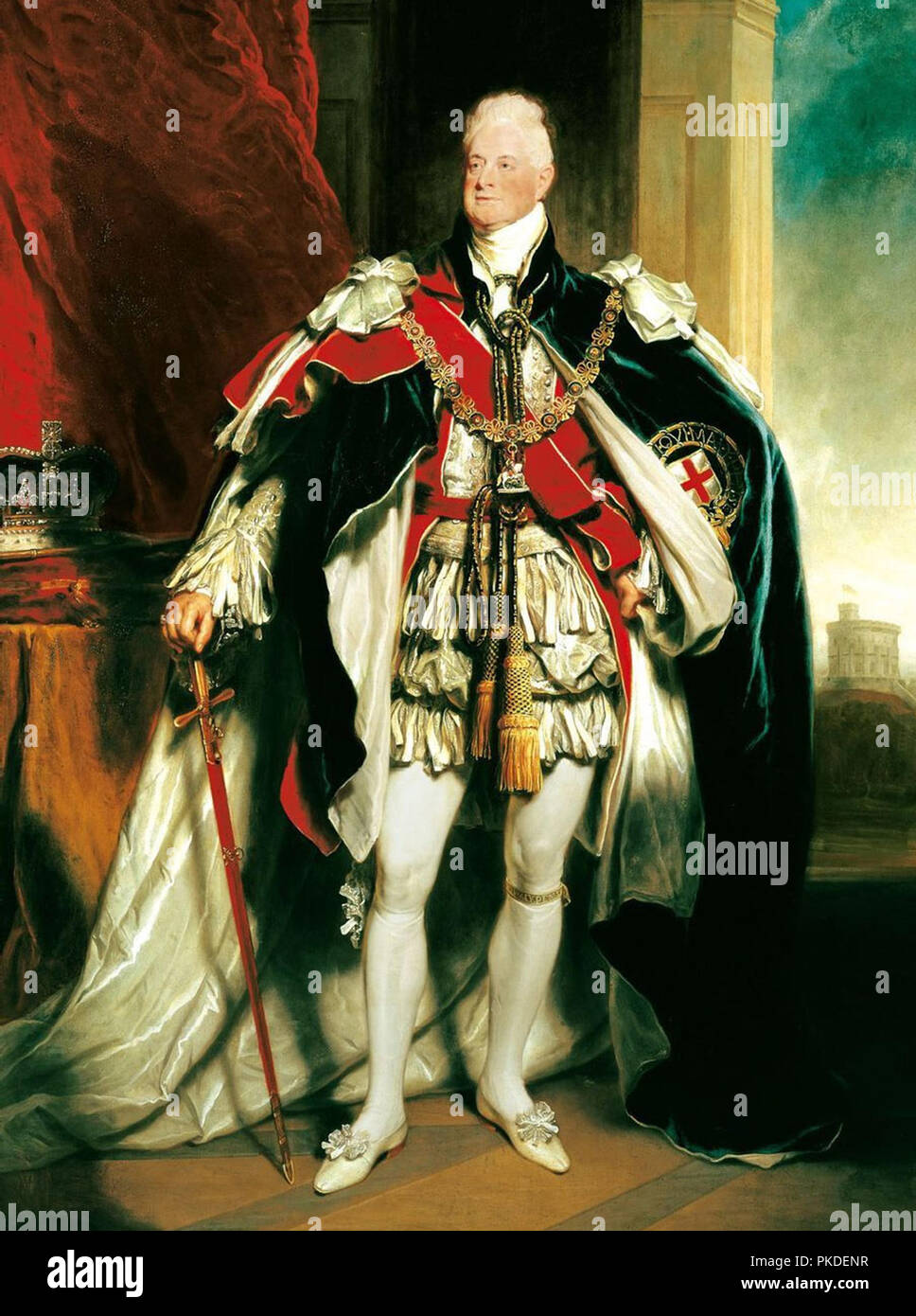 King William IV (1765 – 1837) King of the United Kingdom of Great Britain and Ireland and King of Hanover from 26 June 1830 until his death in 1837 Stock Photohttps://www.alamy.com/image-license-details/?v=1https://www.alamy.com/king-william-iv-1765-1837-king-of-the-united-kingdom-of-great-britain-and-ireland-and-king-of-hanover-from-26-june-1830-until-his-death-in-1837-image218499843.html
King William IV (1765 – 1837) King of the United Kingdom of Great Britain and Ireland and King of Hanover from 26 June 1830 until his death in 1837 Stock Photohttps://www.alamy.com/image-license-details/?v=1https://www.alamy.com/king-william-iv-1765-1837-king-of-the-united-kingdom-of-great-britain-and-ireland-and-king-of-hanover-from-26-june-1830-until-his-death-in-1837-image218499843.htmlRMPKDENR–King William IV (1765 – 1837) King of the United Kingdom of Great Britain and Ireland and King of Hanover from 26 June 1830 until his death in 1837
 Prince Henry (Henry V) taking away his father's crown (Henry IV). Stock Photohttps://www.alamy.com/image-license-details/?v=1https://www.alamy.com/prince-henry-henry-v-taking-away-his-fathers-crown-henry-iv-image504817137.html
Prince Henry (Henry V) taking away his father's crown (Henry IV). Stock Photohttps://www.alamy.com/image-license-details/?v=1https://www.alamy.com/prince-henry-henry-v-taking-away-his-fathers-crown-henry-iv-image504817137.htmlRM2M98BBD–Prince Henry (Henry V) taking away his father's crown (Henry IV).
![GHOST Illustration to the quotation from Shakespeare's Henry VI [Act iv, Scene 5.]; O malignant and ill-boding stars! Now thou art come unto a feast of death. Illustration by Byam Shaw for 'Hippocrates Junior', The Predicted Plague, 1900. Stock Photo GHOST Illustration to the quotation from Shakespeare's Henry VI [Act iv, Scene 5.]; O malignant and ill-boding stars! Now thou art come unto a feast of death. Illustration by Byam Shaw for 'Hippocrates Junior', The Predicted Plague, 1900. Stock Photo](https://c8.alamy.com/comp/MC6EBW/ghost-illustration-to-the-quotation-from-shakespeares-henry-vi-act-iv-scene-5-o-malignant-and-ill-boding-stars!-now-thou-art-come-unto-a-feast-of-death-illustration-by-byam-shaw-for-hippocrates-junior-the-predicted-plague-1900-MC6EBW.jpg) GHOST Illustration to the quotation from Shakespeare's Henry VI [Act iv, Scene 5.]; O malignant and ill-boding stars! Now thou art come unto a feast of death. Illustration by Byam Shaw for 'Hippocrates Junior', The Predicted Plague, 1900. Stock Photohttps://www.alamy.com/image-license-details/?v=1https://www.alamy.com/ghost-illustration-to-the-quotation-from-shakespeares-henry-vi-act-iv-scene-5-o-malignant-and-ill-boding-stars!-now-thou-art-come-unto-a-feast-of-death-illustration-by-byam-shaw-for-hippocrates-junior-the-predicted-plague-1900-image179622573.html
GHOST Illustration to the quotation from Shakespeare's Henry VI [Act iv, Scene 5.]; O malignant and ill-boding stars! Now thou art come unto a feast of death. Illustration by Byam Shaw for 'Hippocrates Junior', The Predicted Plague, 1900. Stock Photohttps://www.alamy.com/image-license-details/?v=1https://www.alamy.com/ghost-illustration-to-the-quotation-from-shakespeares-henry-vi-act-iv-scene-5-o-malignant-and-ill-boding-stars!-now-thou-art-come-unto-a-feast-of-death-illustration-by-byam-shaw-for-hippocrates-junior-the-predicted-plague-1900-image179622573.htmlRMMC6EBW–GHOST Illustration to the quotation from Shakespeare's Henry VI [Act iv, Scene 5.]; O malignant and ill-boding stars! Now thou art come unto a feast of death. Illustration by Byam Shaw for 'Hippocrates Junior', The Predicted Plague, 1900.
 Prince Henry (Henry V) removing the crown from his father's pillow (Henry IV). Stock Photohttps://www.alamy.com/image-license-details/?v=1https://www.alamy.com/prince-henry-henry-v-removing-the-crown-from-his-fathers-pillow-henry-iv-image504817140.html
Prince Henry (Henry V) removing the crown from his father's pillow (Henry IV). Stock Photohttps://www.alamy.com/image-license-details/?v=1https://www.alamy.com/prince-henry-henry-v-removing-the-crown-from-his-fathers-pillow-henry-iv-image504817140.htmlRM2M98BBG–Prince Henry (Henry V) removing the crown from his father's pillow (Henry IV).
 Humphrey of Lancaster, 1st Duke of Gloucester, (1390 – 1447) was an English nobleman. He was the youngest son of King Henry IV, brother of King Henry V and uncle of Henry VI. During the 100 Years War, he gained a reputation as a successful commander. Upon the death of Henry V, in 1422 Humphrey became Lord Protector to his young nephew Henry VI. He unsuccessfully claimed the right to the regency of England following the death of his elder brother, John, Duke of Bedford, in 1435. Stock Photohttps://www.alamy.com/image-license-details/?v=1https://www.alamy.com/humphrey-of-lancaster-1st-duke-of-gloucester-1390-1447-was-an-english-nobleman-he-was-the-youngest-son-of-king-henry-iv-brother-of-king-henry-v-and-uncle-of-henry-vi-during-the-100-years-war-he-gained-a-reputation-as-a-successful-commander-upon-the-death-of-henry-v-in-1422-humphrey-became-lord-protector-to-his-young-nephew-henry-vi-he-unsuccessfully-claimed-the-right-to-the-regency-of-england-following-the-death-of-his-elder-brother-john-duke-of-bedford-in-1435-image182085273.html
Humphrey of Lancaster, 1st Duke of Gloucester, (1390 – 1447) was an English nobleman. He was the youngest son of King Henry IV, brother of King Henry V and uncle of Henry VI. During the 100 Years War, he gained a reputation as a successful commander. Upon the death of Henry V, in 1422 Humphrey became Lord Protector to his young nephew Henry VI. He unsuccessfully claimed the right to the regency of England following the death of his elder brother, John, Duke of Bedford, in 1435. Stock Photohttps://www.alamy.com/image-license-details/?v=1https://www.alamy.com/humphrey-of-lancaster-1st-duke-of-gloucester-1390-1447-was-an-english-nobleman-he-was-the-youngest-son-of-king-henry-iv-brother-of-king-henry-v-and-uncle-of-henry-vi-during-the-100-years-war-he-gained-a-reputation-as-a-successful-commander-upon-the-death-of-henry-v-in-1422-humphrey-became-lord-protector-to-his-young-nephew-henry-vi-he-unsuccessfully-claimed-the-right-to-the-regency-of-england-following-the-death-of-his-elder-brother-john-duke-of-bedford-in-1435-image182085273.htmlRMMG6KHD–Humphrey of Lancaster, 1st Duke of Gloucester, (1390 – 1447) was an English nobleman. He was the youngest son of King Henry IV, brother of King Henry V and uncle of Henry VI. During the 100 Years War, he gained a reputation as a successful commander. Upon the death of Henry V, in 1422 Humphrey became Lord Protector to his young nephew Henry VI. He unsuccessfully claimed the right to the regency of England following the death of his elder brother, John, Duke of Bedford, in 1435.
 It is the Prince of Wales. Henry IV., Part I., Act v. Sc. iv by BYAM SHAW, from A Tribute to the genius of William Shakespeare; being the programme of a performance at Drury Lane Theatre on May 2, 1916, the tercentenary of his death; humbly offered by the players and their fellow-workers in the kindred arts of music & painting MACMILLAN AND CO., LIMITED ST. MARTIN'S STREET, LONDON 1916 Stock Photohttps://www.alamy.com/image-license-details/?v=1https://www.alamy.com/it-is-the-prince-of-wales-henry-iv-part-i-act-v-sc-iv-by-byam-shaw-from-a-tribute-to-the-genius-of-william-shakespeare-being-the-programme-of-a-performance-at-drury-lane-theatre-on-may-2-1916-the-tercentenary-of-his-death-humbly-offered-by-the-players-and-their-fellow-workers-in-the-kindred-arts-of-music-painting-macmillan-and-co-limited-st-martins-street-london-1916-image592092163.html
It is the Prince of Wales. Henry IV., Part I., Act v. Sc. iv by BYAM SHAW, from A Tribute to the genius of William Shakespeare; being the programme of a performance at Drury Lane Theatre on May 2, 1916, the tercentenary of his death; humbly offered by the players and their fellow-workers in the kindred arts of music & painting MACMILLAN AND CO., LIMITED ST. MARTIN'S STREET, LONDON 1916 Stock Photohttps://www.alamy.com/image-license-details/?v=1https://www.alamy.com/it-is-the-prince-of-wales-henry-iv-part-i-act-v-sc-iv-by-byam-shaw-from-a-tribute-to-the-genius-of-william-shakespeare-being-the-programme-of-a-performance-at-drury-lane-theatre-on-may-2-1916-the-tercentenary-of-his-death-humbly-offered-by-the-players-and-their-fellow-workers-in-the-kindred-arts-of-music-painting-macmillan-and-co-limited-st-martins-street-london-1916-image592092163.htmlRF2WB83GK–It is the Prince of Wales. Henry IV., Part I., Act v. Sc. iv by BYAM SHAW, from A Tribute to the genius of William Shakespeare; being the programme of a performance at Drury Lane Theatre on May 2, 1916, the tercentenary of his death; humbly offered by the players and their fellow-workers in the kindred arts of music & painting MACMILLAN AND CO., LIMITED ST. MARTIN'S STREET, LONDON 1916
 St Bartholomew's Day massacre on the night of 23 to 24 August 1572: Henri IV of Navarre, future King of France, took refuge in his bedroom with Margaret of Valois and escaped death. Illustration by Hermann Vogel published in 'Henri IV', written by Georges Montorgueil and published by Boivin in 1907. Stock Photohttps://www.alamy.com/image-license-details/?v=1https://www.alamy.com/st-bartholomews-day-massacre-on-the-night-of-23-to-24-august-1572-henri-iv-of-navarre-future-king-of-france-took-refuge-in-his-bedroom-with-margaret-of-valois-and-escaped-death-illustration-by-hermann-vogel-published-in-henri-iv-written-by-georges-montorgueil-and-published-by-boivin-in-1907-image610220819.html
St Bartholomew's Day massacre on the night of 23 to 24 August 1572: Henri IV of Navarre, future King of France, took refuge in his bedroom with Margaret of Valois and escaped death. Illustration by Hermann Vogel published in 'Henri IV', written by Georges Montorgueil and published by Boivin in 1907. Stock Photohttps://www.alamy.com/image-license-details/?v=1https://www.alamy.com/st-bartholomews-day-massacre-on-the-night-of-23-to-24-august-1572-henri-iv-of-navarre-future-king-of-france-took-refuge-in-his-bedroom-with-margaret-of-valois-and-escaped-death-illustration-by-hermann-vogel-published-in-henri-iv-written-by-georges-montorgueil-and-published-by-boivin-in-1907-image610220819.htmlRM2XCNXTK–St Bartholomew's Day massacre on the night of 23 to 24 August 1572: Henri IV of Navarre, future King of France, took refuge in his bedroom with Margaret of Valois and escaped death. Illustration by Hermann Vogel published in 'Henri IV', written by Georges Montorgueil and published by Boivin in 1907.
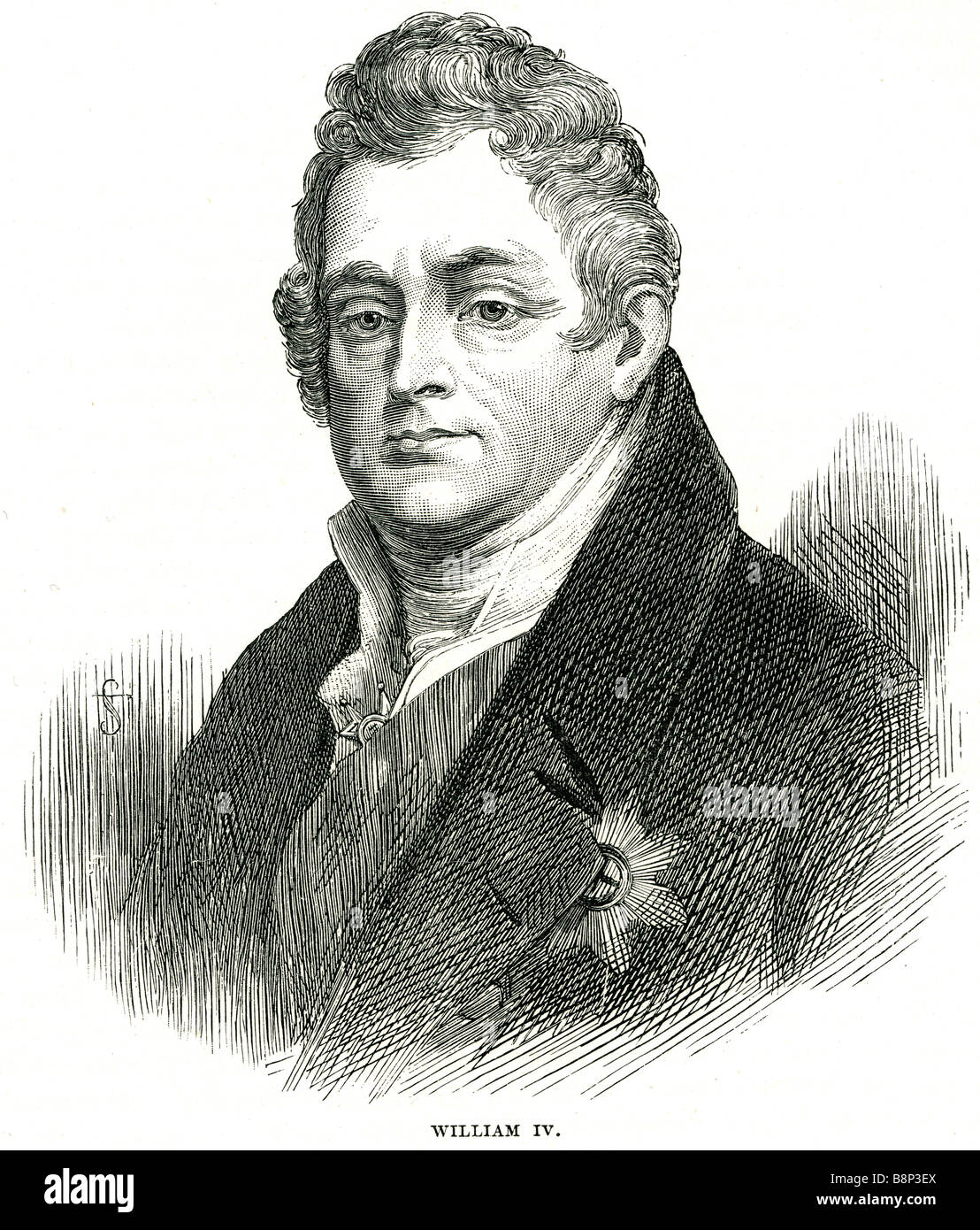 william iv Henry 21 August 1765 20 June 1837 King United Kingdom Great Britain Ireland Hanover Stock Photohttps://www.alamy.com/image-license-details/?v=1https://www.alamy.com/stock-photo-william-iv-henry-21-august-1765-20-june-1837-king-united-kingdom-great-22613330.html
william iv Henry 21 August 1765 20 June 1837 King United Kingdom Great Britain Ireland Hanover Stock Photohttps://www.alamy.com/image-license-details/?v=1https://www.alamy.com/stock-photo-william-iv-henry-21-august-1765-20-june-1837-king-united-kingdom-great-22613330.htmlRMB8P3EX–william iv Henry 21 August 1765 20 June 1837 King United Kingdom Great Britain Ireland Hanover
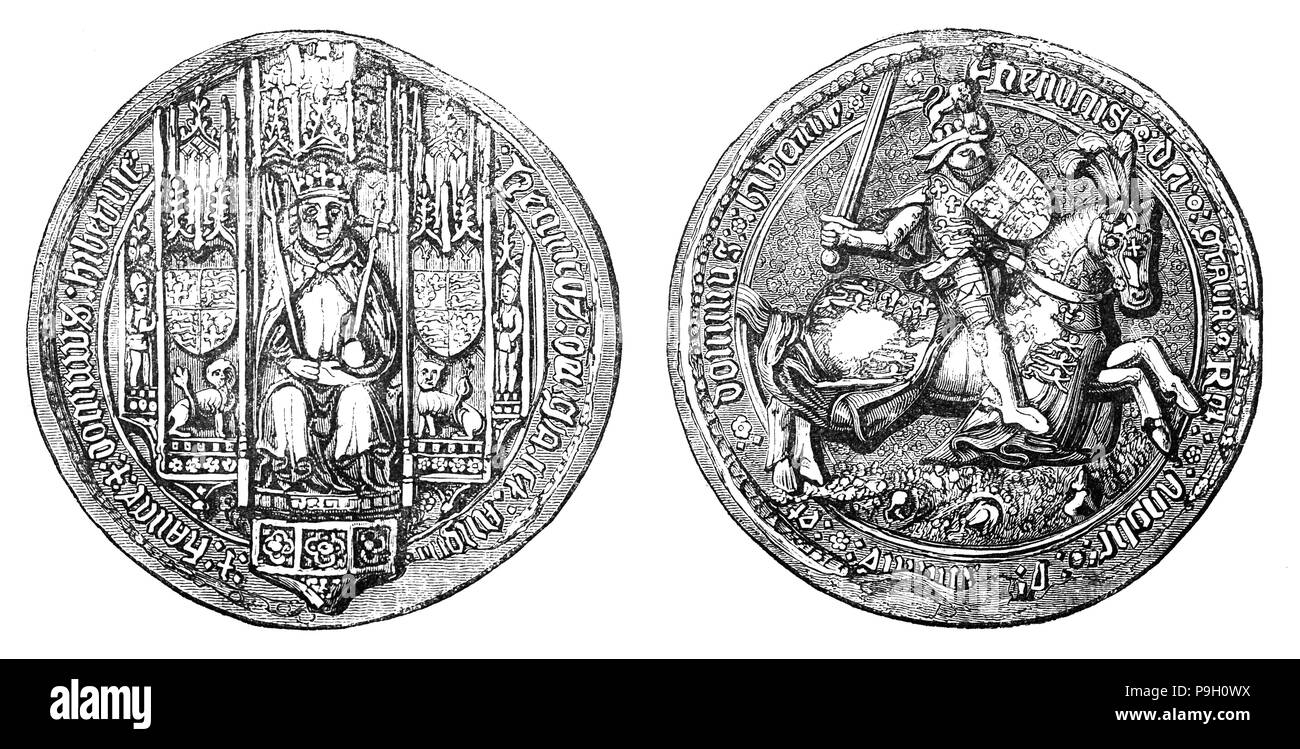 The Great Seal of Henry VII (1457 – 1509), first monarch of the House of Tudor and King of England and Lord of Ireland from his seizure of the crown on 22 August 1485 to his death. He attained the throne when his forces defeated King Richard III at the Battle of Bosworth Field, the culmination of the Wars of the Roses. He was the last king of England to win his throne on the field of battle. He cemented his claim by marrying Elizabeth of York, daughter of Edward IV and niece of Richard III. Henry was successful in restoring the power and stability of the English monarchy after the civil war. Stock Photohttps://www.alamy.com/image-license-details/?v=1https://www.alamy.com/the-great-seal-of-henry-vii-1457-1509-first-monarch-of-the-house-of-tudor-and-king-of-england-and-lord-of-ireland-from-his-seizure-of-the-crown-on-22-august-1485-to-his-death-he-attained-the-throne-when-his-forces-defeated-king-richard-iii-at-the-battle-of-bosworth-field-the-culmination-of-the-wars-of-the-roses-he-was-the-last-king-of-england-to-win-his-throne-on-the-field-of-battle-he-cemented-his-claim-by-marrying-elizabeth-of-york-daughter-of-edward-iv-and-niece-of-richard-iii-henry-was-successful-in-restoring-the-power-and-stability-of-the-english-monarchy-after-the-civil-war-image212430230.html
The Great Seal of Henry VII (1457 – 1509), first monarch of the House of Tudor and King of England and Lord of Ireland from his seizure of the crown on 22 August 1485 to his death. He attained the throne when his forces defeated King Richard III at the Battle of Bosworth Field, the culmination of the Wars of the Roses. He was the last king of England to win his throne on the field of battle. He cemented his claim by marrying Elizabeth of York, daughter of Edward IV and niece of Richard III. Henry was successful in restoring the power and stability of the English monarchy after the civil war. Stock Photohttps://www.alamy.com/image-license-details/?v=1https://www.alamy.com/the-great-seal-of-henry-vii-1457-1509-first-monarch-of-the-house-of-tudor-and-king-of-england-and-lord-of-ireland-from-his-seizure-of-the-crown-on-22-august-1485-to-his-death-he-attained-the-throne-when-his-forces-defeated-king-richard-iii-at-the-battle-of-bosworth-field-the-culmination-of-the-wars-of-the-roses-he-was-the-last-king-of-england-to-win-his-throne-on-the-field-of-battle-he-cemented-his-claim-by-marrying-elizabeth-of-york-daughter-of-edward-iv-and-niece-of-richard-iii-henry-was-successful-in-restoring-the-power-and-stability-of-the-english-monarchy-after-the-civil-war-image212430230.htmlRMP9H0WX–The Great Seal of Henry VII (1457 – 1509), first monarch of the House of Tudor and King of England and Lord of Ireland from his seizure of the crown on 22 August 1485 to his death. He attained the throne when his forces defeated King Richard III at the Battle of Bosworth Field, the culmination of the Wars of the Roses. He was the last king of England to win his throne on the field of battle. He cemented his claim by marrying Elizabeth of York, daughter of Edward IV and niece of Richard III. Henry was successful in restoring the power and stability of the English monarchy after the civil war.
 Assassination of Henry IV of France by François Ravaillac - from drawing by Eugène Courboin. 14 May 1610. Took place in Rue de Stock Photohttps://www.alamy.com/image-license-details/?v=1https://www.alamy.com/stock-photo-assassination-of-henry-iv-of-france-by-franois-ravaillac-from-drawing-83344689.html
Assassination of Henry IV of France by François Ravaillac - from drawing by Eugène Courboin. 14 May 1610. Took place in Rue de Stock Photohttps://www.alamy.com/image-license-details/?v=1https://www.alamy.com/stock-photo-assassination-of-henry-iv-of-france-by-franois-ravaillac-from-drawing-83344689.htmlRMERGK01–Assassination of Henry IV of France by François Ravaillac - from drawing by Eugène Courboin. 14 May 1610. Took place in Rue de
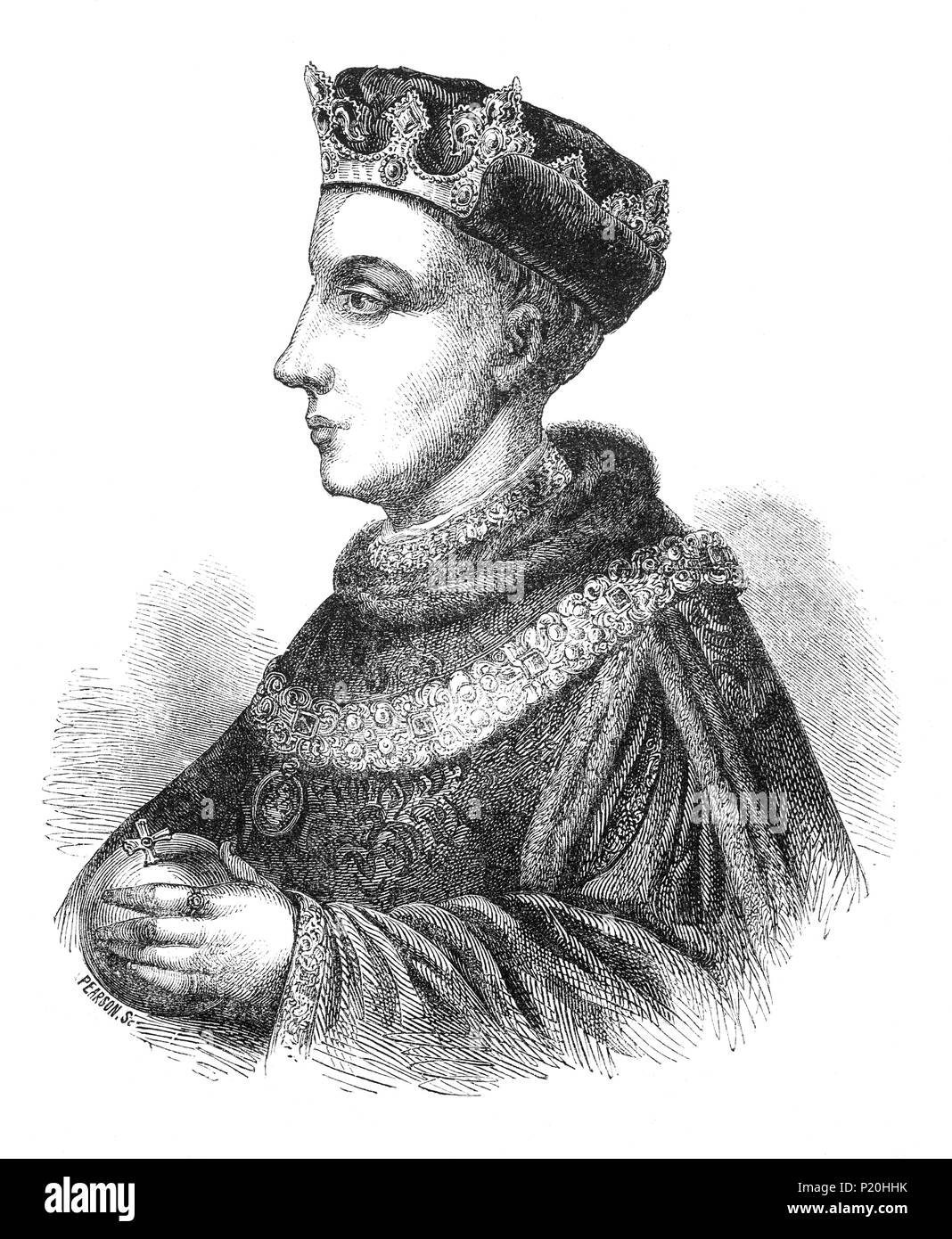 A portrait of Henry V (1386-1422), King of England from 1413 until his death at the age of 36 in 1422 and the second English monarch of the House of Lancaster. He came into political conflict with his father, Henry IV, whose health became precarious and consequently started to withdraw from government functions. On becoming king, Henry V asserted the pending English claims to the French throne and in 1415, Henry embarked on war with France in the ongoing Hundred Years' War (1337–1453) between the two nations. Stock Photohttps://www.alamy.com/image-license-details/?v=1https://www.alamy.com/a-portrait-of-henry-v-1386-1422-king-of-england-from-1413-until-his-death-at-the-age-of-36-in-1422-and-the-second-english-monarch-of-the-house-of-lancaster-he-came-into-political-conflict-with-his-father-henry-iv-whose-health-became-precarious-and-consequently-started-to-withdraw-from-government-functions-on-becoming-king-henry-v-asserted-the-pending-english-claims-to-the-french-throne-and-in-1415-henry-embarked-on-war-with-france-in-the-ongoing-hundred-years-war-13371453-between-the-two-nations-image207767551.html
A portrait of Henry V (1386-1422), King of England from 1413 until his death at the age of 36 in 1422 and the second English monarch of the House of Lancaster. He came into political conflict with his father, Henry IV, whose health became precarious and consequently started to withdraw from government functions. On becoming king, Henry V asserted the pending English claims to the French throne and in 1415, Henry embarked on war with France in the ongoing Hundred Years' War (1337–1453) between the two nations. Stock Photohttps://www.alamy.com/image-license-details/?v=1https://www.alamy.com/a-portrait-of-henry-v-1386-1422-king-of-england-from-1413-until-his-death-at-the-age-of-36-in-1422-and-the-second-english-monarch-of-the-house-of-lancaster-he-came-into-political-conflict-with-his-father-henry-iv-whose-health-became-precarious-and-consequently-started-to-withdraw-from-government-functions-on-becoming-king-henry-v-asserted-the-pending-english-claims-to-the-french-throne-and-in-1415-henry-embarked-on-war-with-france-in-the-ongoing-hundred-years-war-13371453-between-the-two-nations-image207767551.htmlRMP20HHK–A portrait of Henry V (1386-1422), King of England from 1413 until his death at the age of 36 in 1422 and the second English monarch of the House of Lancaster. He came into political conflict with his father, Henry IV, whose health became precarious and consequently started to withdraw from government functions. On becoming king, Henry V asserted the pending English claims to the French throne and in 1415, Henry embarked on war with France in the ongoing Hundred Years' War (1337–1453) between the two nations.
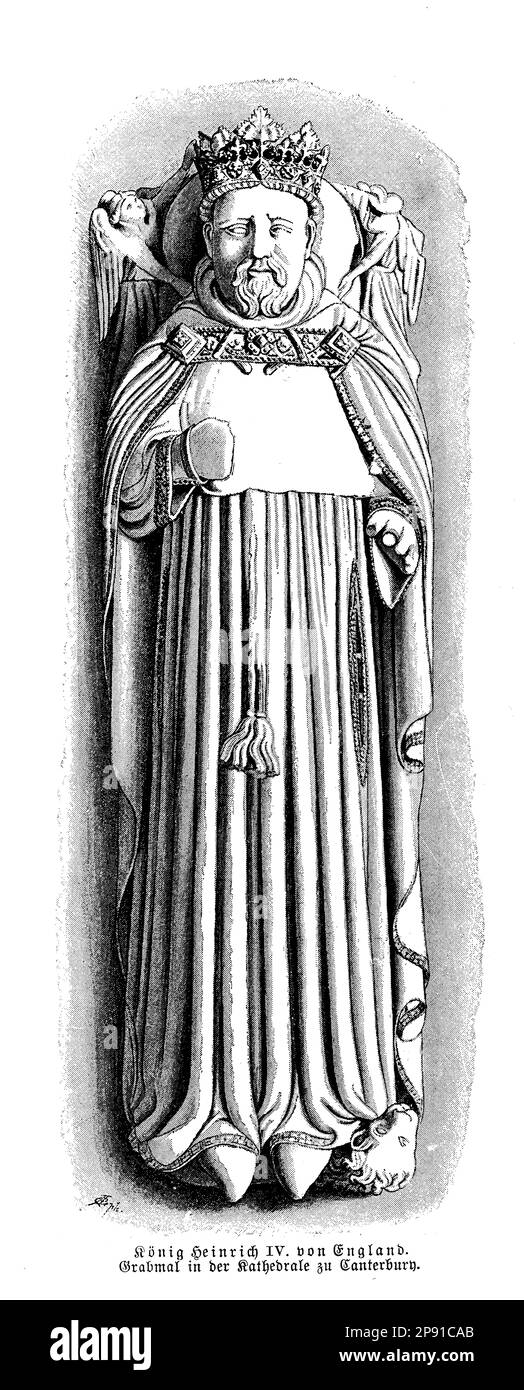 Henry IV of England was the first monarch of the House of Lancaster and ruled from 1399 until his death in 1413. He was known for his military campaigns, including the overthrow of Richard II, and for establishing a strong and stable government. His reign was marked by conflict and rebellion, including from his own family members, but he is also remembered for his patronage of the arts and support of literature Stock Photohttps://www.alamy.com/image-license-details/?v=1https://www.alamy.com/henry-iv-of-england-was-the-first-monarch-of-the-house-of-lancaster-and-ruled-from-1399-until-his-death-in-1413-he-was-known-for-his-military-campaigns-including-the-overthrow-of-richard-ii-and-for-establishing-a-strong-and-stable-government-his-reign-was-marked-by-conflict-and-rebellion-including-from-his-own-family-members-but-he-is-also-remembered-for-his-patronage-of-the-arts-and-support-of-literature-image539084963.html
Henry IV of England was the first monarch of the House of Lancaster and ruled from 1399 until his death in 1413. He was known for his military campaigns, including the overthrow of Richard II, and for establishing a strong and stable government. His reign was marked by conflict and rebellion, including from his own family members, but he is also remembered for his patronage of the arts and support of literature Stock Photohttps://www.alamy.com/image-license-details/?v=1https://www.alamy.com/henry-iv-of-england-was-the-first-monarch-of-the-house-of-lancaster-and-ruled-from-1399-until-his-death-in-1413-he-was-known-for-his-military-campaigns-including-the-overthrow-of-richard-ii-and-for-establishing-a-strong-and-stable-government-his-reign-was-marked-by-conflict-and-rebellion-including-from-his-own-family-members-but-he-is-also-remembered-for-his-patronage-of-the-arts-and-support-of-literature-image539084963.htmlRM2P91CAB–Henry IV of England was the first monarch of the House of Lancaster and ruled from 1399 until his death in 1413. He was known for his military campaigns, including the overthrow of Richard II, and for establishing a strong and stable government. His reign was marked by conflict and rebellion, including from his own family members, but he is also remembered for his patronage of the arts and support of literature
 King Henry V of England dying from distemper in bed surrounded by French physicians in the chateau of Vincennes, France, 1422. Death of King Henry Vth. Copperplate engraving from M. A. Jones History of England from Julius Caesar to George IV, G. Virtue, 26 Ivy Lane, London, 1836. Stock Photohttps://www.alamy.com/image-license-details/?v=1https://www.alamy.com/king-henry-v-of-england-dying-from-distemper-in-bed-surrounded-by-french-physicians-in-the-chateau-of-vincennes-france-1422-death-of-king-henry-vth-copperplate-engraving-from-m-a-jones-history-of-england-from-julius-caesar-to-george-iv-g-virtue-26-ivy-lane-london-1836-image571832885.html
King Henry V of England dying from distemper in bed surrounded by French physicians in the chateau of Vincennes, France, 1422. Death of King Henry Vth. Copperplate engraving from M. A. Jones History of England from Julius Caesar to George IV, G. Virtue, 26 Ivy Lane, London, 1836. Stock Photohttps://www.alamy.com/image-license-details/?v=1https://www.alamy.com/king-henry-v-of-england-dying-from-distemper-in-bed-surrounded-by-french-physicians-in-the-chateau-of-vincennes-france-1422-death-of-king-henry-vth-copperplate-engraving-from-m-a-jones-history-of-england-from-julius-caesar-to-george-iv-g-virtue-26-ivy-lane-london-1836-image571832885.htmlRM2T696K1–King Henry V of England dying from distemper in bed surrounded by French physicians in the chateau of Vincennes, France, 1422. Death of King Henry Vth. Copperplate engraving from M. A. Jones History of England from Julius Caesar to George IV, G. Virtue, 26 Ivy Lane, London, 1836.
 King Henry V of England dying from distemper in bed surrounded by French physicians in the chateau of Vincennes, France, 1422. Death of King Henry Vth. Copperplate engraving from M. A. Jones’ History of England from Julius Caesar to George IV, G. Virtue, 26 Ivy Lane, London, 1836. Stock Photohttps://www.alamy.com/image-license-details/?v=1https://www.alamy.com/king-henry-v-of-england-dying-from-distemper-in-bed-surrounded-by-french-physicians-in-the-chateau-of-vincennes-france-1422-death-of-king-henry-vth-copperplate-engraving-from-m-a-jones-history-of-england-from-julius-caesar-to-george-iv-g-virtue-26-ivy-lane-london-1836-image441134731.html
King Henry V of England dying from distemper in bed surrounded by French physicians in the chateau of Vincennes, France, 1422. Death of King Henry Vth. Copperplate engraving from M. A. Jones’ History of England from Julius Caesar to George IV, G. Virtue, 26 Ivy Lane, London, 1836. Stock Photohttps://www.alamy.com/image-license-details/?v=1https://www.alamy.com/king-henry-v-of-england-dying-from-distemper-in-bed-surrounded-by-french-physicians-in-the-chateau-of-vincennes-france-1422-death-of-king-henry-vth-copperplate-engraving-from-m-a-jones-history-of-england-from-julius-caesar-to-george-iv-g-virtue-26-ivy-lane-london-1836-image441134731.htmlRM2GHKBRR–King Henry V of England dying from distemper in bed surrounded by French physicians in the chateau of Vincennes, France, 1422. Death of King Henry Vth. Copperplate engraving from M. A. Jones’ History of England from Julius Caesar to George IV, G. Virtue, 26 Ivy Lane, London, 1836.
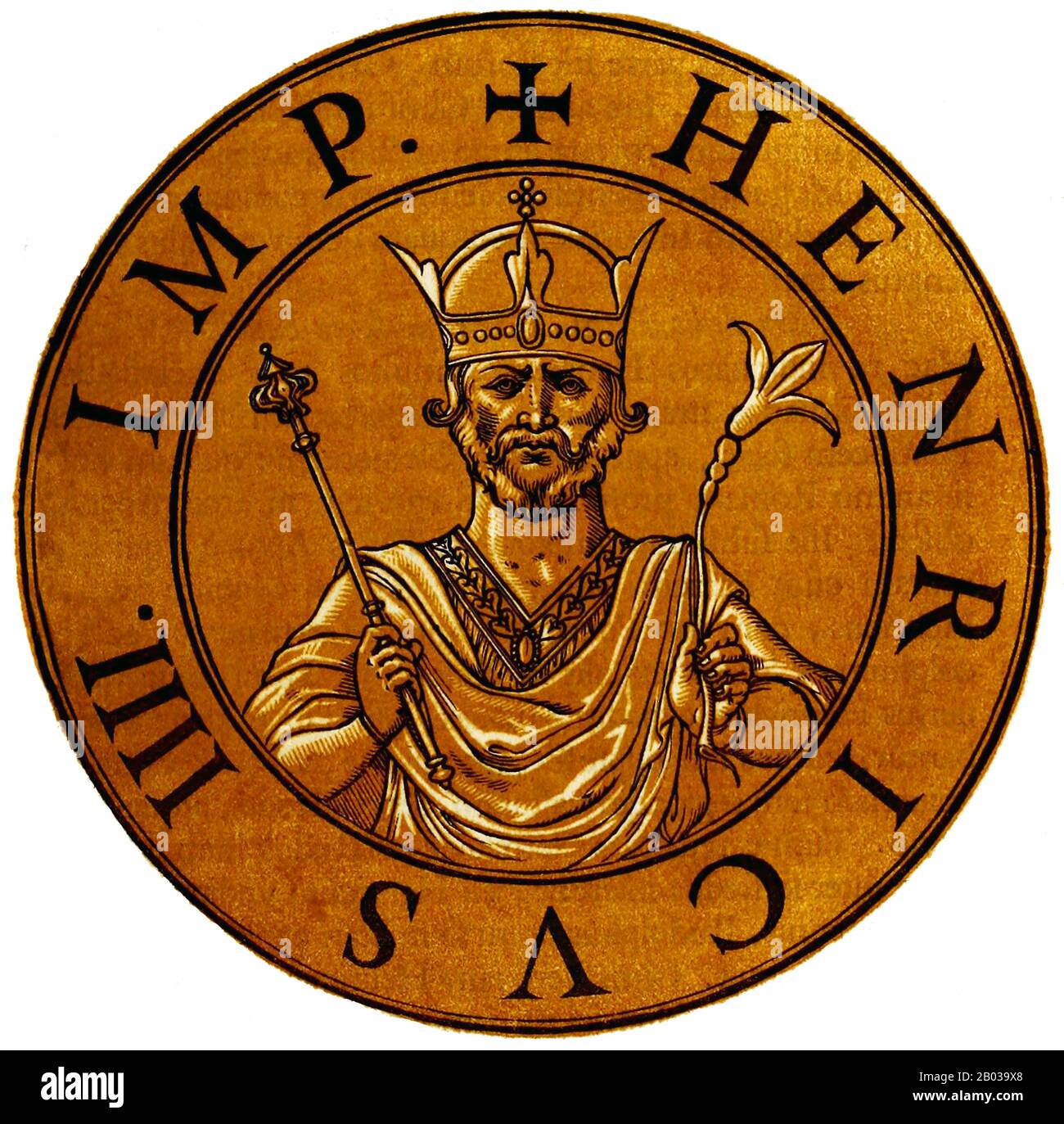 Henry IV (1050-1106), son of Emperor Henry III, was crowned King of Germany in 1056 after his father's death, though his young age meant his mother ruled as regent in his stead. He was kidnapped in the Coup of Kaiserswerth in 1062, a conspiracy led by the Archbishop of Cologne Anno II, who ruled the Holy Roman Empire while supervising over Henry's education and training. When Anno was absent from Germany for a period, Henry managed to wrest back control of the government, and spent much of his reign consolidating his imperial power. The Investiture Controversy occurred during his rule, one of Stock Photohttps://www.alamy.com/image-license-details/?v=1https://www.alamy.com/henry-iv-1050-1106-son-of-emperor-henry-iii-was-crowned-king-of-germany-in-1056-after-his-fathers-death-though-his-young-age-meant-his-mother-ruled-as-regent-in-his-stead-he-was-kidnapped-in-the-coup-of-kaiserswerth-in-1062-a-conspiracy-led-by-the-archbishop-of-cologne-anno-ii-who-ruled-the-holy-roman-empire-while-supervising-over-henrys-education-and-training-when-anno-was-absent-from-germany-for-a-period-henry-managed-to-wrest-back-control-of-the-government-and-spent-much-of-his-reign-consolidating-his-imperial-power-the-investiture-controversy-occurred-during-his-rule-one-of-image344281008.html
Henry IV (1050-1106), son of Emperor Henry III, was crowned King of Germany in 1056 after his father's death, though his young age meant his mother ruled as regent in his stead. He was kidnapped in the Coup of Kaiserswerth in 1062, a conspiracy led by the Archbishop of Cologne Anno II, who ruled the Holy Roman Empire while supervising over Henry's education and training. When Anno was absent from Germany for a period, Henry managed to wrest back control of the government, and spent much of his reign consolidating his imperial power. The Investiture Controversy occurred during his rule, one of Stock Photohttps://www.alamy.com/image-license-details/?v=1https://www.alamy.com/henry-iv-1050-1106-son-of-emperor-henry-iii-was-crowned-king-of-germany-in-1056-after-his-fathers-death-though-his-young-age-meant-his-mother-ruled-as-regent-in-his-stead-he-was-kidnapped-in-the-coup-of-kaiserswerth-in-1062-a-conspiracy-led-by-the-archbishop-of-cologne-anno-ii-who-ruled-the-holy-roman-empire-while-supervising-over-henrys-education-and-training-when-anno-was-absent-from-germany-for-a-period-henry-managed-to-wrest-back-control-of-the-government-and-spent-much-of-his-reign-consolidating-his-imperial-power-the-investiture-controversy-occurred-during-his-rule-one-of-image344281008.htmlRM2B039X8–Henry IV (1050-1106), son of Emperor Henry III, was crowned King of Germany in 1056 after his father's death, though his young age meant his mother ruled as regent in his stead. He was kidnapped in the Coup of Kaiserswerth in 1062, a conspiracy led by the Archbishop of Cologne Anno II, who ruled the Holy Roman Empire while supervising over Henry's education and training. When Anno was absent from Germany for a period, Henry managed to wrest back control of the government, and spent much of his reign consolidating his imperial power. The Investiture Controversy occurred during his rule, one of
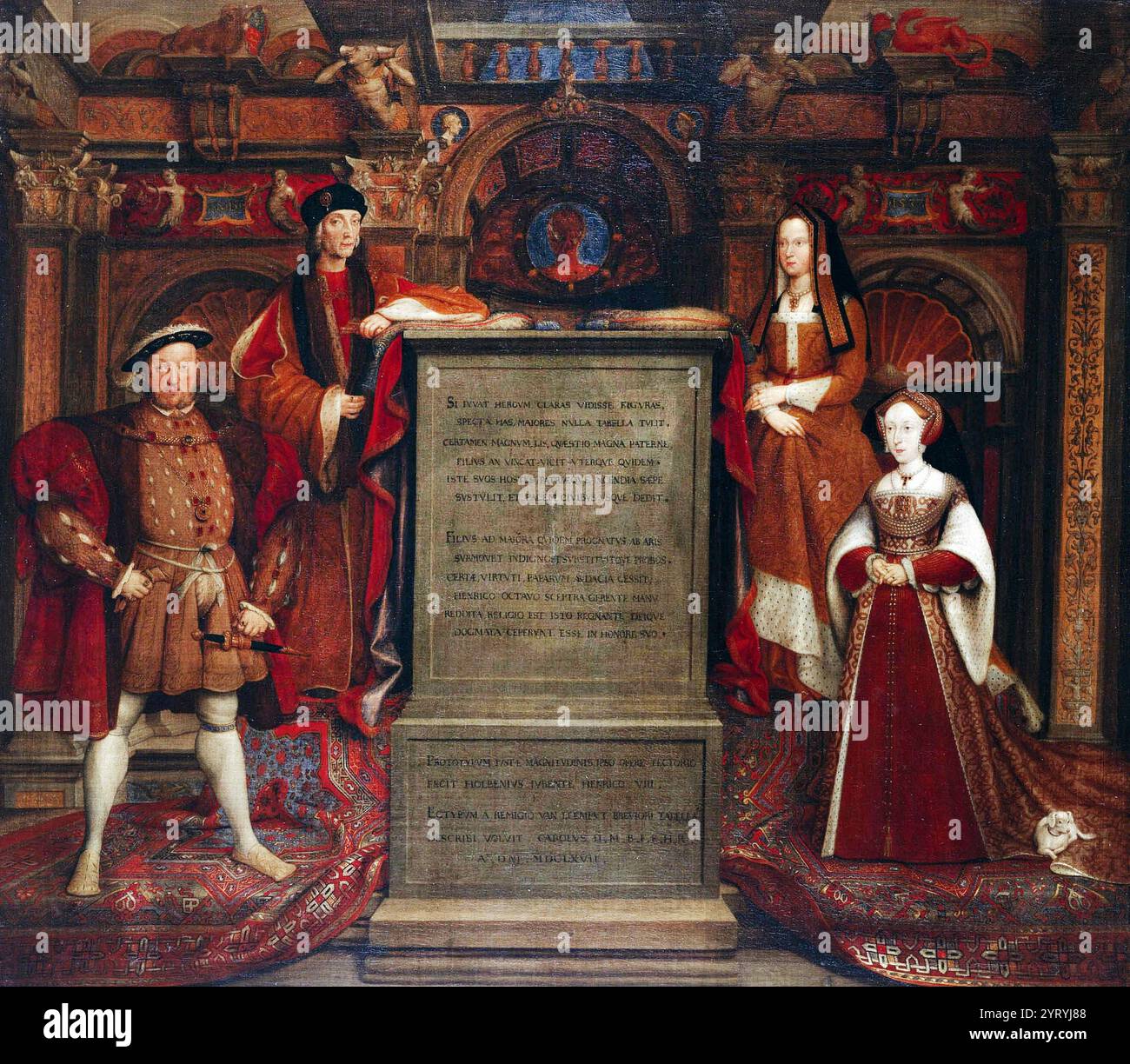 Copy in oils of the 1536?37 Hans Holbein Whitehall mural, 7. Left to right: Henry VIII, Henry VII, Elizabeth of York, Jane Seymour. Elizabeth of York (1466 ? 1503) was the Queen of England from her marriage to King Henry VII on 18 January 1486 until her death in 1503. She was the daughter of King Edward IV and his wife, Elizabeth Woodville, and her marriage to Henry VII followed his victory at the Battle of Bosworth Field, which marked the end of the Wars of the Roses. Stock Photohttps://www.alamy.com/image-license-details/?v=1https://www.alamy.com/copy-in-oils-of-the-153637-hans-holbein-whitehall-mural-7-left-to-right-henry-viii-henry-vii-elizabeth-of-york-jane-seymour-elizabeth-of-york-1466-1503-was-the-queen-of-england-from-her-marriage-to-king-henry-vii-on-18-january-1486-until-her-death-in-1503-she-was-the-daughter-of-king-edward-iv-and-his-wife-elizabeth-woodville-and-her-marriage-to-henry-vii-followed-his-victory-at-the-battle-of-bosworth-field-which-marked-the-end-of-the-wars-of-the-roses-image634317384.html
Copy in oils of the 1536?37 Hans Holbein Whitehall mural, 7. Left to right: Henry VIII, Henry VII, Elizabeth of York, Jane Seymour. Elizabeth of York (1466 ? 1503) was the Queen of England from her marriage to King Henry VII on 18 January 1486 until her death in 1503. She was the daughter of King Edward IV and his wife, Elizabeth Woodville, and her marriage to Henry VII followed his victory at the Battle of Bosworth Field, which marked the end of the Wars of the Roses. Stock Photohttps://www.alamy.com/image-license-details/?v=1https://www.alamy.com/copy-in-oils-of-the-153637-hans-holbein-whitehall-mural-7-left-to-right-henry-viii-henry-vii-elizabeth-of-york-jane-seymour-elizabeth-of-york-1466-1503-was-the-queen-of-england-from-her-marriage-to-king-henry-vii-on-18-january-1486-until-her-death-in-1503-she-was-the-daughter-of-king-edward-iv-and-his-wife-elizabeth-woodville-and-her-marriage-to-henry-vii-followed-his-victory-at-the-battle-of-bosworth-field-which-marked-the-end-of-the-wars-of-the-roses-image634317384.htmlRM2YRYJ88–Copy in oils of the 1536?37 Hans Holbein Whitehall mural, 7. Left to right: Henry VIII, Henry VII, Elizabeth of York, Jane Seymour. Elizabeth of York (1466 ? 1503) was the Queen of England from her marriage to King Henry VII on 18 January 1486 until her death in 1503. She was the daughter of King Edward IV and his wife, Elizabeth Woodville, and her marriage to Henry VII followed his victory at the Battle of Bosworth Field, which marked the end of the Wars of the Roses.
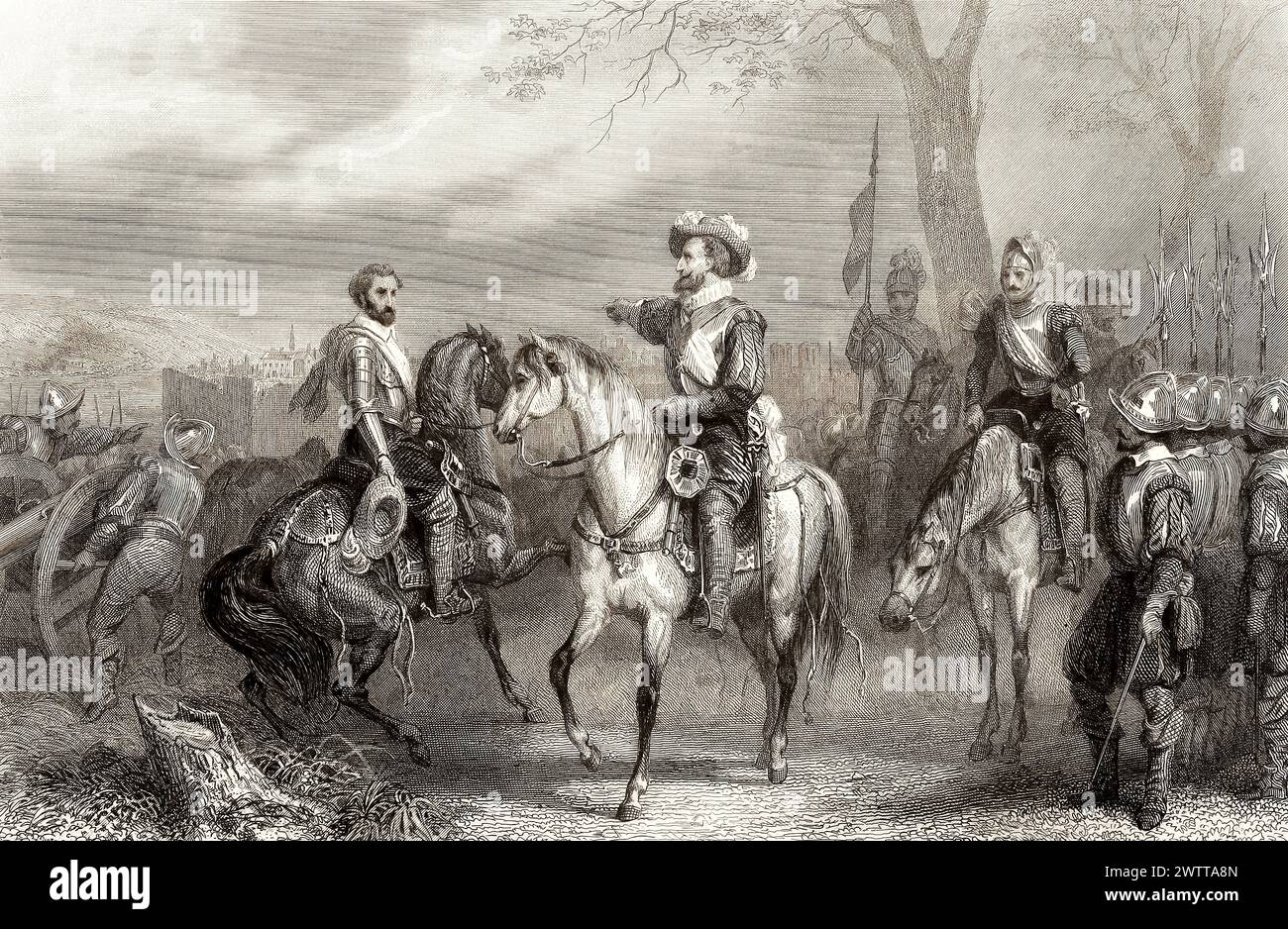 Henry IV, the siege of Paris, French Wars of Religion, 1590 Stock Photohttps://www.alamy.com/image-license-details/?v=1https://www.alamy.com/henry-iv-the-siege-of-paris-french-wars-of-religion-1590-image600439189.html
Henry IV, the siege of Paris, French Wars of Religion, 1590 Stock Photohttps://www.alamy.com/image-license-details/?v=1https://www.alamy.com/henry-iv-the-siege-of-paris-french-wars-of-religion-1590-image600439189.htmlRM2WTTA8N–Henry IV, the siege of Paris, French Wars of Religion, 1590
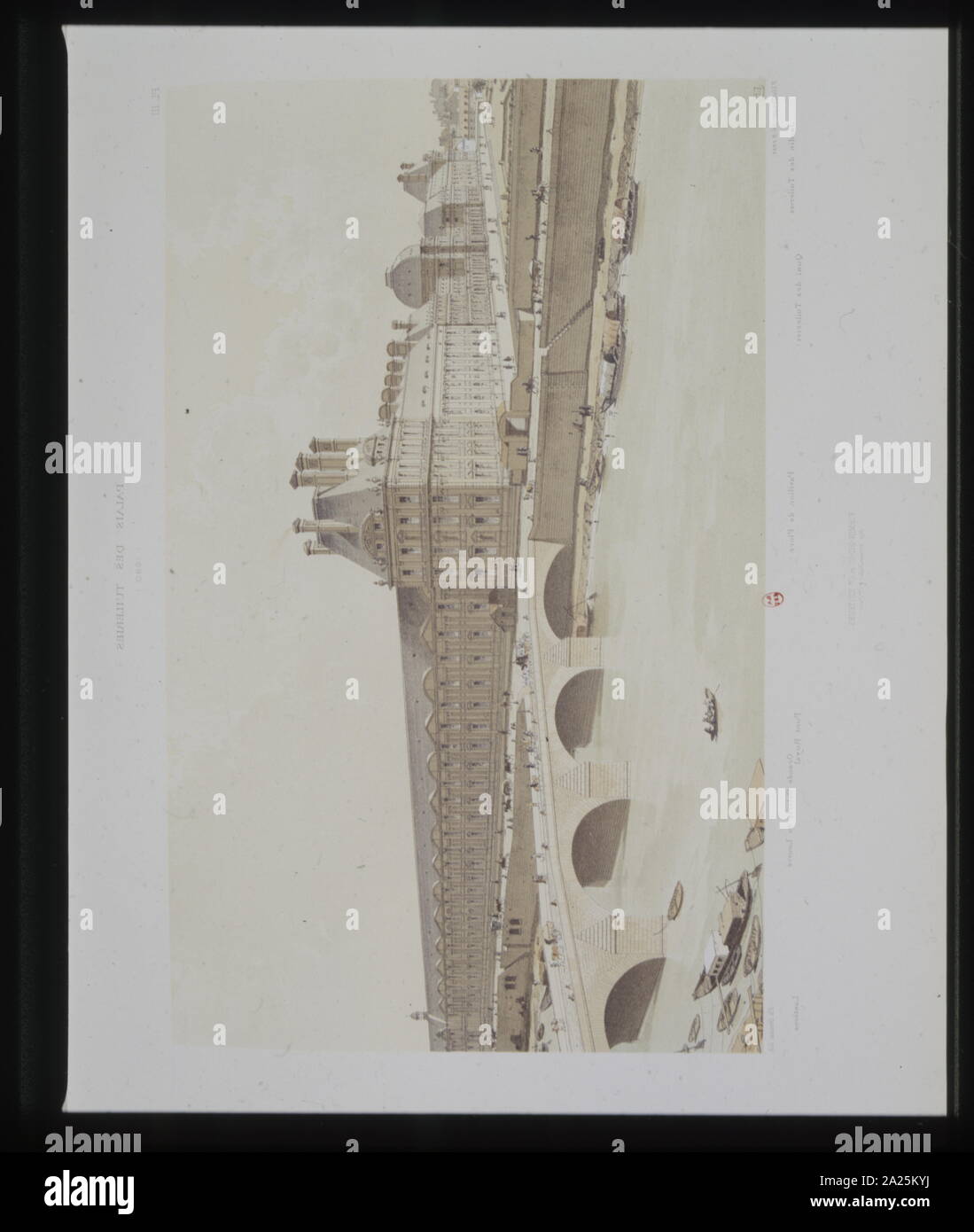 The Tuileries Palace, a royal and imperial palace in Paris, 1690; watercolour. The Palace stood on the right bank of the River Seine. It was the usual Parisian residence of most French monarchs, from Henry IV to Napoleon III. After the accidental death of Henry II of France in 1559, his widow Catherine de' Medici (1519–1589) planned a new palace. She sold the medieval Hôtel des Tournelles, where her husband had died, and began building the palace of Tuileries in 1564, using architect Philibert de l'Orme. Stock Photohttps://www.alamy.com/image-license-details/?v=1https://www.alamy.com/the-tuileries-palace-a-royal-and-imperial-palace-in-paris-1690-watercolour-the-palace-stood-on-the-right-bank-of-the-river-seine-it-was-the-usual-parisian-residence-of-most-french-monarchs-from-henry-iv-to-napoleon-iii-after-the-accidental-death-of-henry-ii-of-france-in-1559-his-widow-catherine-de-medici-15191589-planned-a-new-palace-she-sold-the-medieval-htel-des-tournelles-where-her-husband-had-died-and-began-building-the-palace-of-tuileries-in-1564-using-architect-philibert-de-lorme-image328351734.html
The Tuileries Palace, a royal and imperial palace in Paris, 1690; watercolour. The Palace stood on the right bank of the River Seine. It was the usual Parisian residence of most French monarchs, from Henry IV to Napoleon III. After the accidental death of Henry II of France in 1559, his widow Catherine de' Medici (1519–1589) planned a new palace. She sold the medieval Hôtel des Tournelles, where her husband had died, and began building the palace of Tuileries in 1564, using architect Philibert de l'Orme. Stock Photohttps://www.alamy.com/image-license-details/?v=1https://www.alamy.com/the-tuileries-palace-a-royal-and-imperial-palace-in-paris-1690-watercolour-the-palace-stood-on-the-right-bank-of-the-river-seine-it-was-the-usual-parisian-residence-of-most-french-monarchs-from-henry-iv-to-napoleon-iii-after-the-accidental-death-of-henry-ii-of-france-in-1559-his-widow-catherine-de-medici-15191589-planned-a-new-palace-she-sold-the-medieval-htel-des-tournelles-where-her-husband-had-died-and-began-building-the-palace-of-tuileries-in-1564-using-architect-philibert-de-lorme-image328351734.htmlRM2A25KYJ–The Tuileries Palace, a royal and imperial palace in Paris, 1690; watercolour. The Palace stood on the right bank of the River Seine. It was the usual Parisian residence of most French monarchs, from Henry IV to Napoleon III. After the accidental death of Henry II of France in 1559, his widow Catherine de' Medici (1519–1589) planned a new palace. She sold the medieval Hôtel des Tournelles, where her husband had died, and began building the palace of Tuileries in 1564, using architect Philibert de l'Orme.
 Queen Katharine. Sir, I desire you do me right and justice. King Henry VIII., Act n. Sc. iv. by FRANK O. SALISBURY from A Tribute to the genius of William Shakespeare; being the programme of a performance at Drury Lane Theatre on May 2, 1916, the tercentenary of his death; humbly offered by the players and their fellow-workers in the kindred arts of music & painting MACMILLAN AND CO., LIMITED ST. MARTIN'S STREET, LONDON 1916 Stock Photohttps://www.alamy.com/image-license-details/?v=1https://www.alamy.com/queen-katharine-sir-i-desire-you-do-me-right-and-justice-king-henry-viii-act-n-sc-iv-by-frank-o-salisbury-from-a-tribute-to-the-genius-of-william-shakespeare-being-the-programme-of-a-performance-at-drury-lane-theatre-on-may-2-1916-the-tercentenary-of-his-death-humbly-offered-by-the-players-and-their-fellow-workers-in-the-kindred-arts-of-music-painting-macmillan-and-co-limited-st-martins-street-london-1916-image592091160.html
Queen Katharine. Sir, I desire you do me right and justice. King Henry VIII., Act n. Sc. iv. by FRANK O. SALISBURY from A Tribute to the genius of William Shakespeare; being the programme of a performance at Drury Lane Theatre on May 2, 1916, the tercentenary of his death; humbly offered by the players and their fellow-workers in the kindred arts of music & painting MACMILLAN AND CO., LIMITED ST. MARTIN'S STREET, LONDON 1916 Stock Photohttps://www.alamy.com/image-license-details/?v=1https://www.alamy.com/queen-katharine-sir-i-desire-you-do-me-right-and-justice-king-henry-viii-act-n-sc-iv-by-frank-o-salisbury-from-a-tribute-to-the-genius-of-william-shakespeare-being-the-programme-of-a-performance-at-drury-lane-theatre-on-may-2-1916-the-tercentenary-of-his-death-humbly-offered-by-the-players-and-their-fellow-workers-in-the-kindred-arts-of-music-painting-macmillan-and-co-limited-st-martins-street-london-1916-image592091160.htmlRF2WB828T–Queen Katharine. Sir, I desire you do me right and justice. King Henry VIII., Act n. Sc. iv. by FRANK O. SALISBURY from A Tribute to the genius of William Shakespeare; being the programme of a performance at Drury Lane Theatre on May 2, 1916, the tercentenary of his death; humbly offered by the players and their fellow-workers in the kindred arts of music & painting MACMILLAN AND CO., LIMITED ST. MARTIN'S STREET, LONDON 1916
 Engraving of the assassination of Henry III King of England. From Henry IV, by Jacob Abbott, 1846. Stock Photohttps://www.alamy.com/image-license-details/?v=1https://www.alamy.com/stock-photo-engraving-of-the-assassination-of-henry-iii-king-of-england-from-henry-171001790.html
Engraving of the assassination of Henry III King of England. From Henry IV, by Jacob Abbott, 1846. Stock Photohttps://www.alamy.com/image-license-details/?v=1https://www.alamy.com/stock-photo-engraving-of-the-assassination-of-henry-iii-king-of-england-from-henry-171001790.htmlRMKX5PEP–Engraving of the assassination of Henry III King of England. From Henry IV, by Jacob Abbott, 1846.
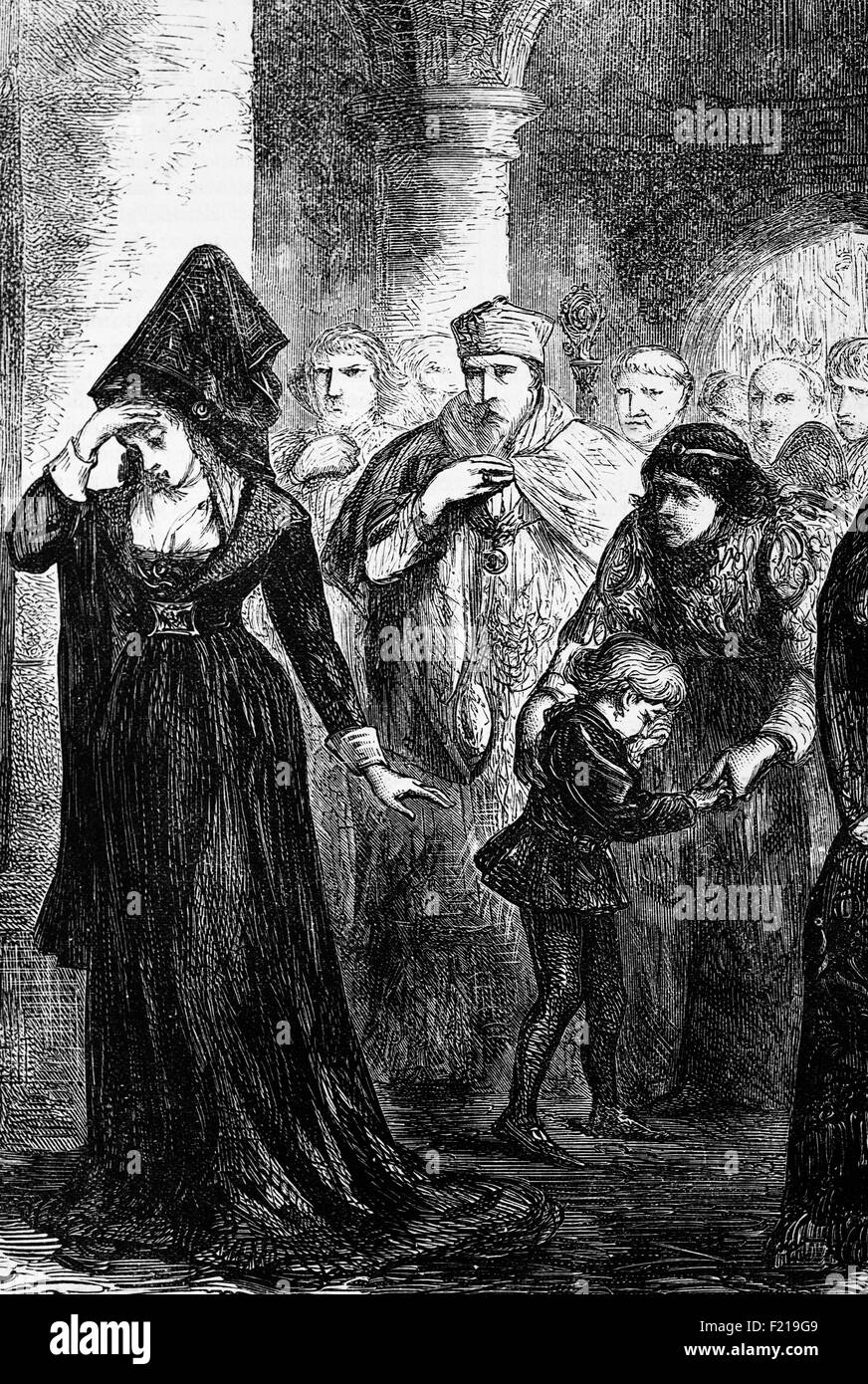 Queen Elizabeth Wydville, the spouse of King Edward IV from 1464 until his death in 1483, parting from her son, the Duke of York following Edward IV's sudden death, possibly from pneumonia, in April 1483. Her young son, Edward V, became king, with his uncle, Richard, Duke of Gloucester, acting as Lord Protector, who following skullduggery was offered the throne and became King Richard III. Edward V, who was no longer king, and his brother Richard, Duke of York, remained in the Tower of London. There are no recorded sightings of them after the summer of 1483. Stock Photohttps://www.alamy.com/image-license-details/?v=1https://www.alamy.com/stock-photo-queen-elizabeth-wydville-the-spouse-of-king-edward-iv-from-1464-until-87310617.html
Queen Elizabeth Wydville, the spouse of King Edward IV from 1464 until his death in 1483, parting from her son, the Duke of York following Edward IV's sudden death, possibly from pneumonia, in April 1483. Her young son, Edward V, became king, with his uncle, Richard, Duke of Gloucester, acting as Lord Protector, who following skullduggery was offered the throne and became King Richard III. Edward V, who was no longer king, and his brother Richard, Duke of York, remained in the Tower of London. There are no recorded sightings of them after the summer of 1483. Stock Photohttps://www.alamy.com/image-license-details/?v=1https://www.alamy.com/stock-photo-queen-elizabeth-wydville-the-spouse-of-king-edward-iv-from-1464-until-87310617.htmlRMF219G9–Queen Elizabeth Wydville, the spouse of King Edward IV from 1464 until his death in 1483, parting from her son, the Duke of York following Edward IV's sudden death, possibly from pneumonia, in April 1483. Her young son, Edward V, became king, with his uncle, Richard, Duke of Gloucester, acting as Lord Protector, who following skullduggery was offered the throne and became King Richard III. Edward V, who was no longer king, and his brother Richard, Duke of York, remained in the Tower of London. There are no recorded sightings of them after the summer of 1483.
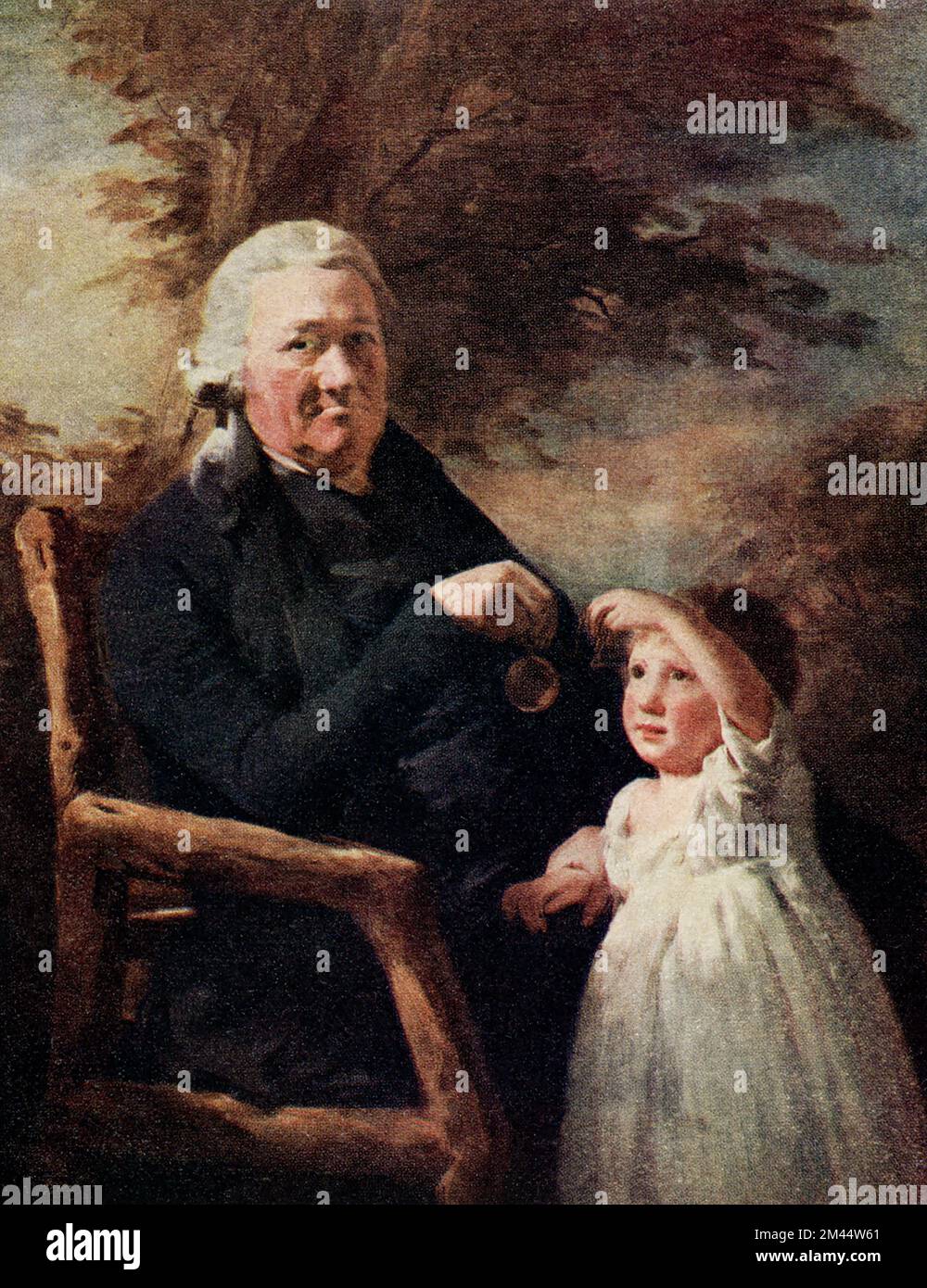 The caption for this image, written about 1910, reads: “John Tait of Harvieston and His Grandson by Raeburn (1756-1823). One of the artist’s most virile and trenchant performances, it was painted in 1798-9. The child was introduced after the grandfather’s death.” Sir Henry Raeburn (1756 – 1823) was a Scottish portrait painter. He served as Portrait Painter to King George IV in Scotland. Stock Photohttps://www.alamy.com/image-license-details/?v=1https://www.alamy.com/the-caption-for-this-image-written-about-1910-reads-john-tait-of-harvieston-and-his-grandson-by-raeburn-1756-1823-one-of-the-artists-most-virile-and-trenchant-performances-it-was-painted-in-1798-9-the-child-was-introduced-after-the-grandfathers-death-sir-henry-raeburn-1756-1823-was-a-scottish-portrait-painter-he-served-as-portrait-painter-to-king-george-iv-in-scotland-image501666873.html
The caption for this image, written about 1910, reads: “John Tait of Harvieston and His Grandson by Raeburn (1756-1823). One of the artist’s most virile and trenchant performances, it was painted in 1798-9. The child was introduced after the grandfather’s death.” Sir Henry Raeburn (1756 – 1823) was a Scottish portrait painter. He served as Portrait Painter to King George IV in Scotland. Stock Photohttps://www.alamy.com/image-license-details/?v=1https://www.alamy.com/the-caption-for-this-image-written-about-1910-reads-john-tait-of-harvieston-and-his-grandson-by-raeburn-1756-1823-one-of-the-artists-most-virile-and-trenchant-performances-it-was-painted-in-1798-9-the-child-was-introduced-after-the-grandfathers-death-sir-henry-raeburn-1756-1823-was-a-scottish-portrait-painter-he-served-as-portrait-painter-to-king-george-iv-in-scotland-image501666873.htmlRF2M44W61–The caption for this image, written about 1910, reads: “John Tait of Harvieston and His Grandson by Raeburn (1756-1823). One of the artist’s most virile and trenchant performances, it was painted in 1798-9. The child was introduced after the grandfather’s death.” Sir Henry Raeburn (1756 – 1823) was a Scottish portrait painter. He served as Portrait Painter to King George IV in Scotland.
 . English: His Majesty King George IV commissioned this etching from William Henry Mote (W.H. MOTE)and this was presented to the Greenwich Hospital on March 1st, 1831 (after the death of King George IV). It was also when WH Mote was included in the Royal Artist Society, with all the benefits (Annuity Payments, and Widows and Orphans Insurance). . 1 March 1831. William Henry Mote (1803–1871) Description engraver Date of birth/death 1803 1871 Work period circa 1850 Authority control : Q8012104 VIAF: 11607823 LCCN: n97862731 BNE: XX5430925 WorldCat Godfrey Kneller (1646–1723) Stock Photohttps://www.alamy.com/image-license-details/?v=1https://www.alamy.com/english-his-majesty-king-george-iv-commissioned-this-etching-from-william-henry-mote-wh-moteand-this-was-presented-to-the-greenwich-hospital-on-march-1st-1831-after-the-death-of-king-george-iv-it-was-also-when-wh-mote-was-included-in-the-royal-artist-society-with-all-the-benefits-annuity-payments-and-widows-and-orphans-insurance-1-march-1831-william-henry-mote-18031871-description-engraver-date-of-birthdeath-1803-1871-work-period-circa-1850-authority-control-q8012104-viaf11607823-lccnn97862731-bnexx5430925-worldcat-godfrey-kneller-16461723-image185814210.html
. English: His Majesty King George IV commissioned this etching from William Henry Mote (W.H. MOTE)and this was presented to the Greenwich Hospital on March 1st, 1831 (after the death of King George IV). It was also when WH Mote was included in the Royal Artist Society, with all the benefits (Annuity Payments, and Widows and Orphans Insurance). . 1 March 1831. William Henry Mote (1803–1871) Description engraver Date of birth/death 1803 1871 Work period circa 1850 Authority control : Q8012104 VIAF: 11607823 LCCN: n97862731 BNE: XX5430925 WorldCat Godfrey Kneller (1646–1723) Stock Photohttps://www.alamy.com/image-license-details/?v=1https://www.alamy.com/english-his-majesty-king-george-iv-commissioned-this-etching-from-william-henry-mote-wh-moteand-this-was-presented-to-the-greenwich-hospital-on-march-1st-1831-after-the-death-of-king-george-iv-it-was-also-when-wh-mote-was-included-in-the-royal-artist-society-with-all-the-benefits-annuity-payments-and-widows-and-orphans-insurance-1-march-1831-william-henry-mote-18031871-description-engraver-date-of-birthdeath-1803-1871-work-period-circa-1850-authority-control-q8012104-viaf11607823-lccnn97862731-bnexx5430925-worldcat-godfrey-kneller-16461723-image185814210.htmlRMMP8FWP–. English: His Majesty King George IV commissioned this etching from William Henry Mote (W.H. MOTE)and this was presented to the Greenwich Hospital on March 1st, 1831 (after the death of King George IV). It was also when WH Mote was included in the Royal Artist Society, with all the benefits (Annuity Payments, and Widows and Orphans Insurance). . 1 March 1831. William Henry Mote (1803–1871) Description engraver Date of birth/death 1803 1871 Work period circa 1850 Authority control : Q8012104 VIAF: 11607823 LCCN: n97862731 BNE: XX5430925 WorldCat Godfrey Kneller (1646–1723)
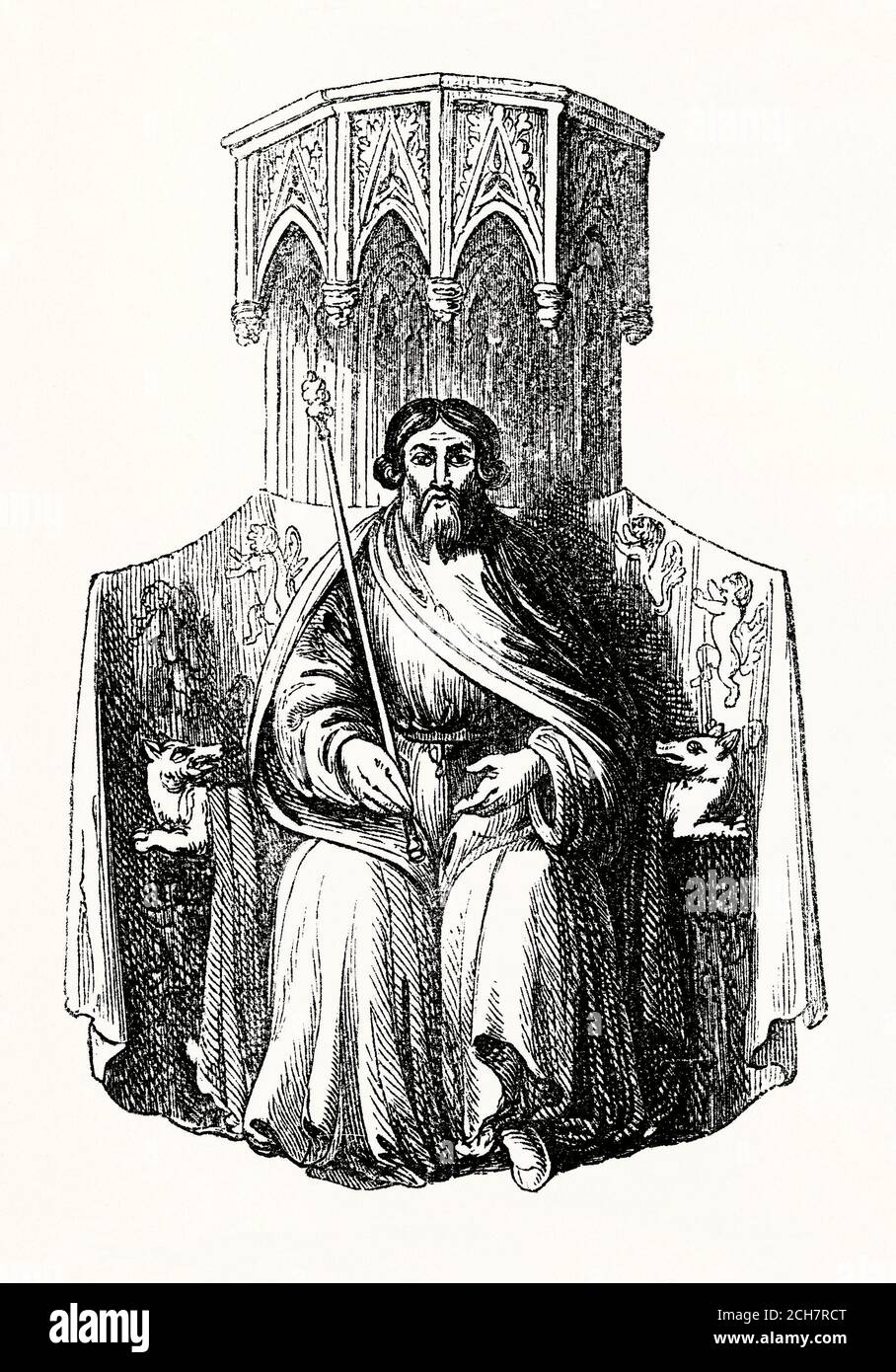 An old engraving of Owen Glendower (Owain ab Gruffydd, lord of Glyndyfrdwy, Owain Glyndŵr or Glyn Dŵr, c. 1359–c. 1415). He was a Welsh leader in the war of independence aimed at ending English rule in Wales. He was the last native Welshman to be Prince of Wales. In 1400 Glyndŵr began the Welsh Revolt against the rule of Henry IV. The uprising was initially successful and large areas of Wales were controlled. The uprising was eventually suppressed by the English. Glyndŵr avoided capture. With his death Owain acquired folk hero status and is often regarded as the father of Welsh nationalism. Stock Photohttps://www.alamy.com/image-license-details/?v=1https://www.alamy.com/an-old-engraving-of-owen-glendower-owain-ab-gruffydd-lord-of-glyndyfrdwy-owain-glyndr-or-glyn-dr-c-1359c-1415-he-was-a-welsh-leader-in-the-war-of-independence-aimed-at-ending-english-rule-in-wales-he-was-the-last-native-welshman-to-be-prince-of-wales-in-1400-glyndr-began-the-welsh-revolt-against-the-rule-of-henry-iv-the-uprising-was-initially-successful-and-large-areas-of-wales-were-controlled-the-uprising-was-eventually-suppressed-by-the-english-glyndr-avoided-capture-with-his-death-owain-acquired-folk-hero-status-and-is-often-regarded-as-the-father-of-welsh-nationalism-image372038936.html
An old engraving of Owen Glendower (Owain ab Gruffydd, lord of Glyndyfrdwy, Owain Glyndŵr or Glyn Dŵr, c. 1359–c. 1415). He was a Welsh leader in the war of independence aimed at ending English rule in Wales. He was the last native Welshman to be Prince of Wales. In 1400 Glyndŵr began the Welsh Revolt against the rule of Henry IV. The uprising was initially successful and large areas of Wales were controlled. The uprising was eventually suppressed by the English. Glyndŵr avoided capture. With his death Owain acquired folk hero status and is often regarded as the father of Welsh nationalism. Stock Photohttps://www.alamy.com/image-license-details/?v=1https://www.alamy.com/an-old-engraving-of-owen-glendower-owain-ab-gruffydd-lord-of-glyndyfrdwy-owain-glyndr-or-glyn-dr-c-1359c-1415-he-was-a-welsh-leader-in-the-war-of-independence-aimed-at-ending-english-rule-in-wales-he-was-the-last-native-welshman-to-be-prince-of-wales-in-1400-glyndr-began-the-welsh-revolt-against-the-rule-of-henry-iv-the-uprising-was-initially-successful-and-large-areas-of-wales-were-controlled-the-uprising-was-eventually-suppressed-by-the-english-glyndr-avoided-capture-with-his-death-owain-acquired-folk-hero-status-and-is-often-regarded-as-the-father-of-welsh-nationalism-image372038936.htmlRM2CH7RCT–An old engraving of Owen Glendower (Owain ab Gruffydd, lord of Glyndyfrdwy, Owain Glyndŵr or Glyn Dŵr, c. 1359–c. 1415). He was a Welsh leader in the war of independence aimed at ending English rule in Wales. He was the last native Welshman to be Prince of Wales. In 1400 Glyndŵr began the Welsh Revolt against the rule of Henry IV. The uprising was initially successful and large areas of Wales were controlled. The uprising was eventually suppressed by the English. Glyndŵr avoided capture. With his death Owain acquired folk hero status and is often regarded as the father of Welsh nationalism.
 N/A. Salted paper print by Henry Fox Talbot, plate IV from the album 'Sun Pictures in Scotland' (1845) . 1844. William Henry Fox Talbot (1800–1877) Alternative names Henry Fox Talbot; William Henry Fox Talbot; Fox Talbot Description British photographer Date of birth/death 11 February 1800 17 September 1877 Location of birth/death Melbury, Dorset, England Lacock Abbey, Wiltshire, England Work location London Authority control : Q299565 VIAF:54325833 ISNI:0000 0001 2026 0414 ULAN:500021449 LCCN:n79138724 NLA:35538270 WorldCat 519 Entrance Gate, Abbotsford by Henry Fox Talbot Stock Photohttps://www.alamy.com/image-license-details/?v=1https://www.alamy.com/na-salted-paper-print-by-henry-fox-talbot-plate-iv-from-the-album-sun-pictures-in-scotland-1845-1844-william-henry-fox-talbot-18001877-alternative-names-henry-fox-talbot-william-henry-fox-talbot-fox-talbot-description-british-photographer-date-of-birthdeath-11-february-1800-17-september-1877-location-of-birthdeath-melbury-dorset-england-lacock-abbey-wiltshire-england-work-location-london-authority-control-q299565-viaf54325833-isni0000-0001-2026-0414-ulan500021449-lccnn79138724-nla35538270-worldcat-519-entrance-gate-abbotsford-by-henry-fox-talbot-image210230099.html
N/A. Salted paper print by Henry Fox Talbot, plate IV from the album 'Sun Pictures in Scotland' (1845) . 1844. William Henry Fox Talbot (1800–1877) Alternative names Henry Fox Talbot; William Henry Fox Talbot; Fox Talbot Description British photographer Date of birth/death 11 February 1800 17 September 1877 Location of birth/death Melbury, Dorset, England Lacock Abbey, Wiltshire, England Work location London Authority control : Q299565 VIAF:54325833 ISNI:0000 0001 2026 0414 ULAN:500021449 LCCN:n79138724 NLA:35538270 WorldCat 519 Entrance Gate, Abbotsford by Henry Fox Talbot Stock Photohttps://www.alamy.com/image-license-details/?v=1https://www.alamy.com/na-salted-paper-print-by-henry-fox-talbot-plate-iv-from-the-album-sun-pictures-in-scotland-1845-1844-william-henry-fox-talbot-18001877-alternative-names-henry-fox-talbot-william-henry-fox-talbot-fox-talbot-description-british-photographer-date-of-birthdeath-11-february-1800-17-september-1877-location-of-birthdeath-melbury-dorset-england-lacock-abbey-wiltshire-england-work-location-london-authority-control-q299565-viaf54325833-isni0000-0001-2026-0414-ulan500021449-lccnn79138724-nla35538270-worldcat-519-entrance-gate-abbotsford-by-henry-fox-talbot-image210230099.htmlRMP60PHR–N/A. Salted paper print by Henry Fox Talbot, plate IV from the album 'Sun Pictures in Scotland' (1845) . 1844. William Henry Fox Talbot (1800–1877) Alternative names Henry Fox Talbot; William Henry Fox Talbot; Fox Talbot Description British photographer Date of birth/death 11 February 1800 17 September 1877 Location of birth/death Melbury, Dorset, England Lacock Abbey, Wiltshire, England Work location London Authority control : Q299565 VIAF:54325833 ISNI:0000 0001 2026 0414 ULAN:500021449 LCCN:n79138724 NLA:35538270 WorldCat 519 Entrance Gate, Abbotsford by Henry Fox Talbot
 Cour du Louvre, Paris, 14 May 1610: King Henri IV of France is removed from his carriage after being stabbed by François Ravaillac. Illustration by Hermann Vogel published in 'Henri IV', written by Georges Montorgueil and published by Boivin in 1907. Stock Photohttps://www.alamy.com/image-license-details/?v=1https://www.alamy.com/cour-du-louvre-paris-14-may-1610-king-henri-iv-of-france-is-removed-from-his-carriage-after-being-stabbed-by-franois-ravaillac-illustration-by-hermann-vogel-published-in-henri-iv-written-by-georges-montorgueil-and-published-by-boivin-in-1907-image610220857.html
Cour du Louvre, Paris, 14 May 1610: King Henri IV of France is removed from his carriage after being stabbed by François Ravaillac. Illustration by Hermann Vogel published in 'Henri IV', written by Georges Montorgueil and published by Boivin in 1907. Stock Photohttps://www.alamy.com/image-license-details/?v=1https://www.alamy.com/cour-du-louvre-paris-14-may-1610-king-henri-iv-of-france-is-removed-from-his-carriage-after-being-stabbed-by-franois-ravaillac-illustration-by-hermann-vogel-published-in-henri-iv-written-by-georges-montorgueil-and-published-by-boivin-in-1907-image610220857.htmlRM2XCNXX1–Cour du Louvre, Paris, 14 May 1610: King Henri IV of France is removed from his carriage after being stabbed by François Ravaillac. Illustration by Hermann Vogel published in 'Henri IV', written by Georges Montorgueil and published by Boivin in 1907.
 Queen Katharine. Sir, I desire you do me right and justice. King Henry VIII., Act n. Sc. iv. by FRANK O. SALISBURY from A Tribute to the genius of William Shakespeare; being the programme of a performance at Drury Lane Theatre on May 2, 1916, the tercentenary of his death; humbly offered by the players and their fellow-workers in the kindred arts of music & painting MACMILLAN AND CO., LIMITED ST. MARTIN'S STREET, LONDON 1916 Stock Photohttps://www.alamy.com/image-license-details/?v=1https://www.alamy.com/queen-katharine-sir-i-desire-you-do-me-right-and-justice-king-henry-viii-act-n-sc-iv-by-frank-o-salisbury-from-a-tribute-to-the-genius-of-william-shakespeare-being-the-programme-of-a-performance-at-drury-lane-theatre-on-may-2-1916-the-tercentenary-of-his-death-humbly-offered-by-the-players-and-their-fellow-workers-in-the-kindred-arts-of-music-painting-macmillan-and-co-limited-st-martins-street-london-1916-image592092156.html
Queen Katharine. Sir, I desire you do me right and justice. King Henry VIII., Act n. Sc. iv. by FRANK O. SALISBURY from A Tribute to the genius of William Shakespeare; being the programme of a performance at Drury Lane Theatre on May 2, 1916, the tercentenary of his death; humbly offered by the players and their fellow-workers in the kindred arts of music & painting MACMILLAN AND CO., LIMITED ST. MARTIN'S STREET, LONDON 1916 Stock Photohttps://www.alamy.com/image-license-details/?v=1https://www.alamy.com/queen-katharine-sir-i-desire-you-do-me-right-and-justice-king-henry-viii-act-n-sc-iv-by-frank-o-salisbury-from-a-tribute-to-the-genius-of-william-shakespeare-being-the-programme-of-a-performance-at-drury-lane-theatre-on-may-2-1916-the-tercentenary-of-his-death-humbly-offered-by-the-players-and-their-fellow-workers-in-the-kindred-arts-of-music-painting-macmillan-and-co-limited-st-martins-street-london-1916-image592092156.htmlRF2WB83GC–Queen Katharine. Sir, I desire you do me right and justice. King Henry VIII., Act n. Sc. iv. by FRANK O. SALISBURY from A Tribute to the genius of William Shakespeare; being the programme of a performance at Drury Lane Theatre on May 2, 1916, the tercentenary of his death; humbly offered by the players and their fellow-workers in the kindred arts of music & painting MACMILLAN AND CO., LIMITED ST. MARTIN'S STREET, LONDON 1916
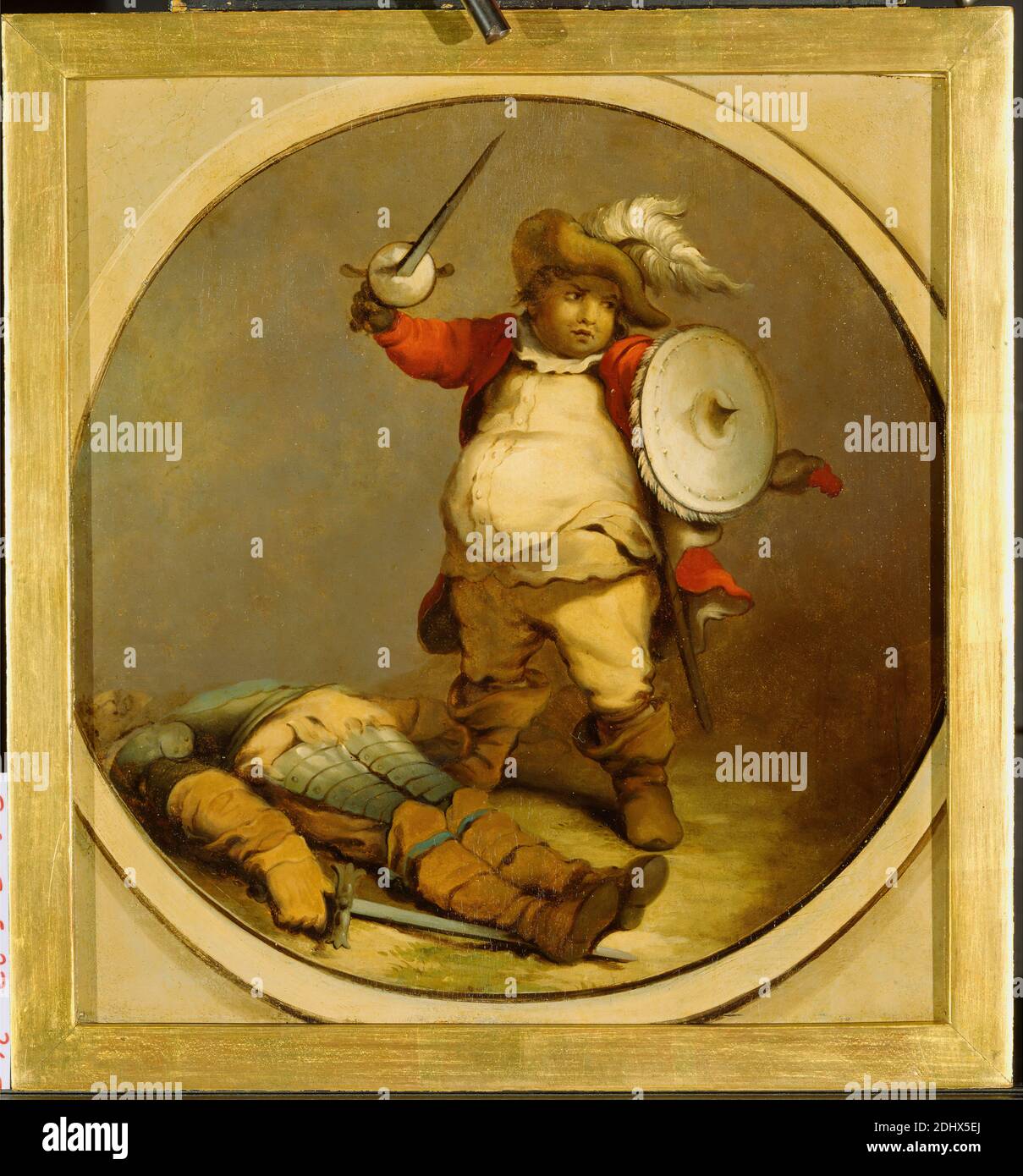 Falstaff with the Body of Hotspur, Attributed to Philippe-Jacques de Loutherbourg, 1740–1812, French, active in Britain (from 1771), ca. 1786, Oil on paper, Support (PTG): 12 x 11 1/4 inches (30.5 x 28.6 cm), armor, costume, death, duel, feather, Henry IV, part I by William Shakespeare, literary theme, men, sword, theater (discipline), tondo Stock Photohttps://www.alamy.com/image-license-details/?v=1https://www.alamy.com/falstaff-with-the-body-of-hotspur-attributed-to-philippe-jacques-de-loutherbourg-17401812-french-active-in-britain-from-1771-ca-1786-oil-on-paper-support-ptg-12-x-11-14-inches-305-x-286-cm-armor-costume-death-duel-feather-henry-iv-part-i-by-william-shakespeare-literary-theme-men-sword-theater-discipline-tondo-image389652330.html
Falstaff with the Body of Hotspur, Attributed to Philippe-Jacques de Loutherbourg, 1740–1812, French, active in Britain (from 1771), ca. 1786, Oil on paper, Support (PTG): 12 x 11 1/4 inches (30.5 x 28.6 cm), armor, costume, death, duel, feather, Henry IV, part I by William Shakespeare, literary theme, men, sword, theater (discipline), tondo Stock Photohttps://www.alamy.com/image-license-details/?v=1https://www.alamy.com/falstaff-with-the-body-of-hotspur-attributed-to-philippe-jacques-de-loutherbourg-17401812-french-active-in-britain-from-1771-ca-1786-oil-on-paper-support-ptg-12-x-11-14-inches-305-x-286-cm-armor-costume-death-duel-feather-henry-iv-part-i-by-william-shakespeare-literary-theme-men-sword-theater-discipline-tondo-image389652330.htmlRM2DHX5EJ–Falstaff with the Body of Hotspur, Attributed to Philippe-Jacques de Loutherbourg, 1740–1812, French, active in Britain (from 1771), ca. 1786, Oil on paper, Support (PTG): 12 x 11 1/4 inches (30.5 x 28.6 cm), armor, costume, death, duel, feather, Henry IV, part I by William Shakespeare, literary theme, men, sword, theater (discipline), tondo
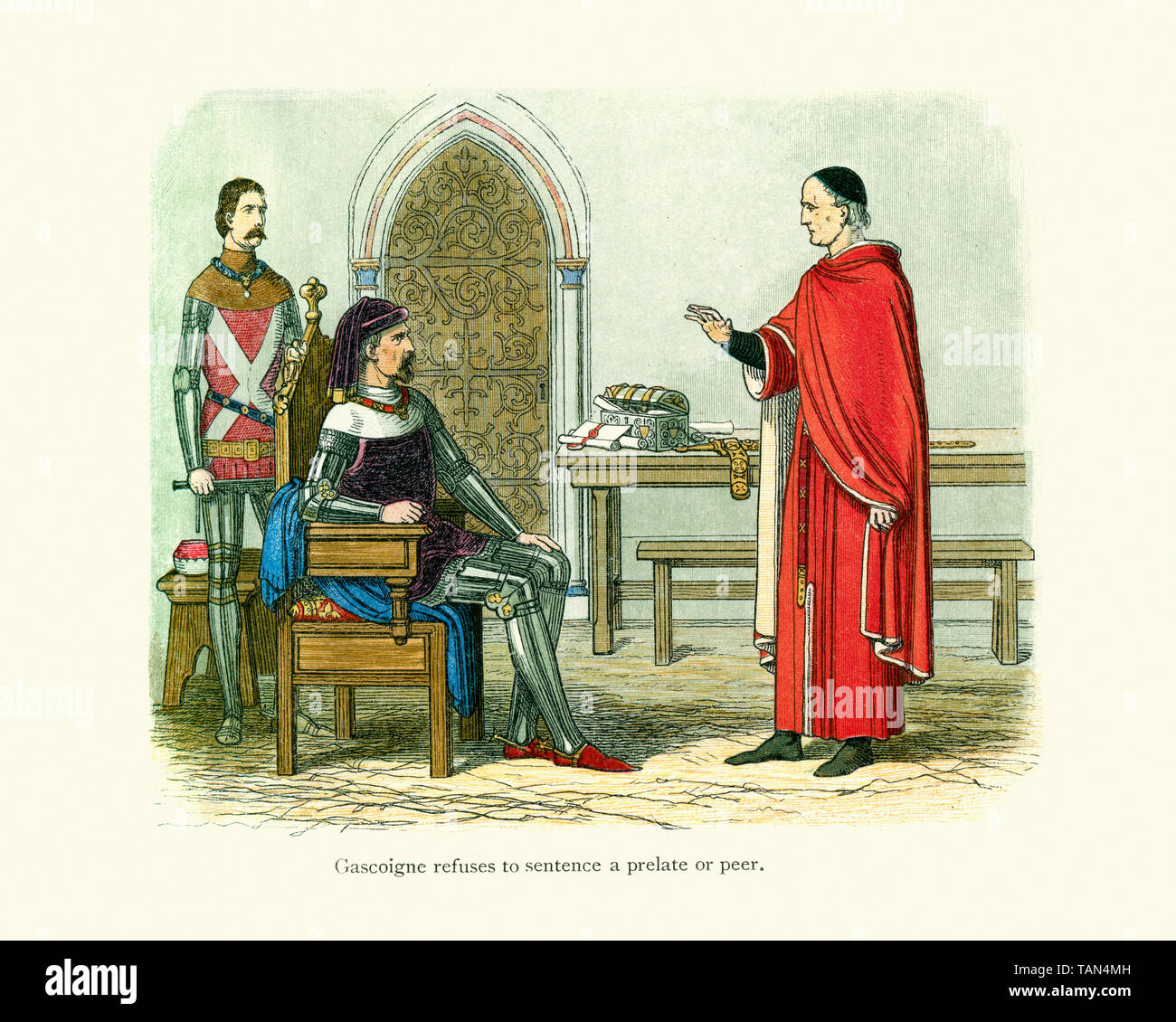 Sir William Gascoigne chief justice of England before King Henry IV refusing to sentence to death Archbishop Scrope (Archbishop of York) and Thomas Mo Stock Photohttps://www.alamy.com/image-license-details/?v=1https://www.alamy.com/sir-william-gascoigne-chief-justice-of-england-before-king-henry-iv-refusing-to-sentence-to-death-archbishop-scrope-archbishop-of-york-and-thomas-mo-image247556417.html
Sir William Gascoigne chief justice of England before King Henry IV refusing to sentence to death Archbishop Scrope (Archbishop of York) and Thomas Mo Stock Photohttps://www.alamy.com/image-license-details/?v=1https://www.alamy.com/sir-william-gascoigne-chief-justice-of-england-before-king-henry-iv-refusing-to-sentence-to-death-archbishop-scrope-archbishop-of-york-and-thomas-mo-image247556417.htmlRMTAN4MH–Sir William Gascoigne chief justice of England before King Henry IV refusing to sentence to death Archbishop Scrope (Archbishop of York) and Thomas Mo
 Prince Henry taking the crown from the pillow of his father King Henry IV death bed heir succession Stock Photohttps://www.alamy.com/image-license-details/?v=1https://www.alamy.com/stock-photo-prince-henry-taking-the-crown-from-the-pillow-of-his-father-king-henry-39806989.html
Prince Henry taking the crown from the pillow of his father King Henry IV death bed heir succession Stock Photohttps://www.alamy.com/image-license-details/?v=1https://www.alamy.com/stock-photo-prince-henry-taking-the-crown-from-the-pillow-of-his-father-king-henry-39806989.htmlRMC8NA65–Prince Henry taking the crown from the pillow of his father King Henry IV death bed heir succession
 Death of Henry Hotspur Percy the eldest son of Henry Percy, 1st Earl of Northumberland. Hotspur led a rebellion against Henry IV in 1403, forming an a Stock Photohttps://www.alamy.com/image-license-details/?v=1https://www.alamy.com/death-of-henry-hotspur-percy-the-eldest-son-of-henry-percy-1st-earl-of-northumberland-hotspur-led-a-rebellion-against-henry-iv-in-1403-forming-an-a-image247556410.html
Death of Henry Hotspur Percy the eldest son of Henry Percy, 1st Earl of Northumberland. Hotspur led a rebellion against Henry IV in 1403, forming an a Stock Photohttps://www.alamy.com/image-license-details/?v=1https://www.alamy.com/death-of-henry-hotspur-percy-the-eldest-son-of-henry-percy-1st-earl-of-northumberland-hotspur-led-a-rebellion-against-henry-iv-in-1403-forming-an-a-image247556410.htmlRMTAN4MA–Death of Henry Hotspur Percy the eldest son of Henry Percy, 1st Earl of Northumberland. Hotspur led a rebellion against Henry IV in 1403, forming an a
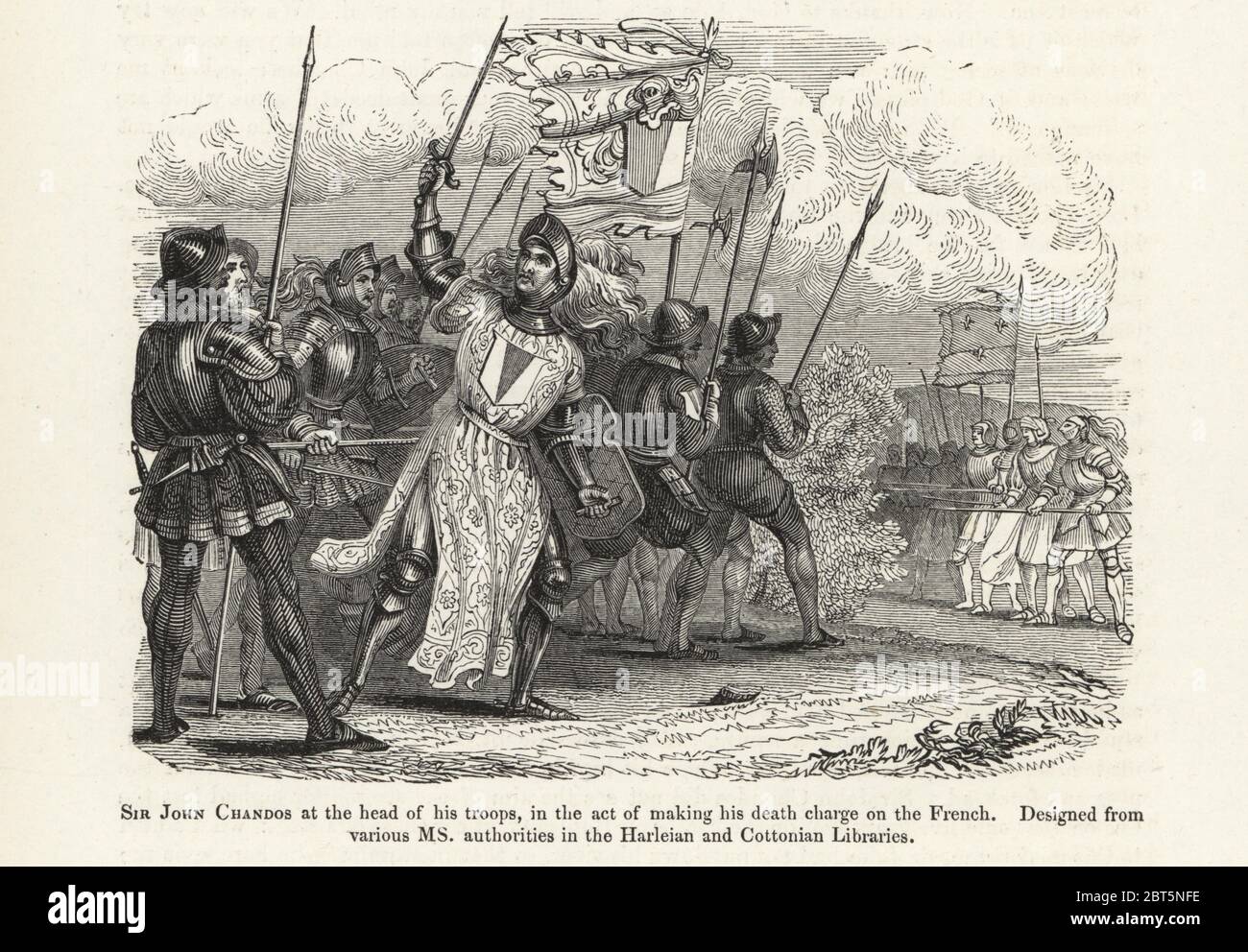 Sir John Chandos making his death charge against the French at the bridge of Lussac, during the 100 Years War, 1369. Woodcut after an illuminated manuscript from Sir John Froissart's Chronicles of England, France, Spain and the Adjoining Countries, from the Latter Part of the Reign of Edward II to the Coronation of Henry IV, George Routledge, London, 1868. Stock Photohttps://www.alamy.com/image-license-details/?v=1https://www.alamy.com/sir-john-chandos-making-his-death-charge-against-the-french-at-the-bridge-of-lussac-during-the-100-years-war-1369-woodcut-after-an-illuminated-manuscript-from-sir-john-froissarts-chronicles-of-england-france-spain-and-the-adjoining-countries-from-the-latter-part-of-the-reign-of-edward-ii-to-the-coronation-of-henry-iv-george-routledge-london-1868-image359085762.html
Sir John Chandos making his death charge against the French at the bridge of Lussac, during the 100 Years War, 1369. Woodcut after an illuminated manuscript from Sir John Froissart's Chronicles of England, France, Spain and the Adjoining Countries, from the Latter Part of the Reign of Edward II to the Coronation of Henry IV, George Routledge, London, 1868. Stock Photohttps://www.alamy.com/image-license-details/?v=1https://www.alamy.com/sir-john-chandos-making-his-death-charge-against-the-french-at-the-bridge-of-lussac-during-the-100-years-war-1369-woodcut-after-an-illuminated-manuscript-from-sir-john-froissarts-chronicles-of-england-france-spain-and-the-adjoining-countries-from-the-latter-part-of-the-reign-of-edward-ii-to-the-coronation-of-henry-iv-george-routledge-london-1868-image359085762.htmlRM2BT5NFE–Sir John Chandos making his death charge against the French at the bridge of Lussac, during the 100 Years War, 1369. Woodcut after an illuminated manuscript from Sir John Froissart's Chronicles of England, France, Spain and the Adjoining Countries, from the Latter Part of the Reign of Edward II to the Coronation of Henry IV, George Routledge, London, 1868.
 Henry Stafford, 2nd Duke of Buckingham executed for treason by King Richard III, 1483. Beheaded in a courtyard in Salisbury market-place. Death of the Duke of Buckingham. Copperplate engraving from M. A. Jones’ History of England from Julius Caesar to George IV, G. Virtue, 26 Ivy Lane, London, 1836. Stock Photohttps://www.alamy.com/image-license-details/?v=1https://www.alamy.com/henry-stafford-2nd-duke-of-buckingham-executed-for-treason-by-king-richard-iii-1483-beheaded-in-a-courtyard-in-salisbury-market-place-death-of-the-duke-of-buckingham-copperplate-engraving-from-m-a-jones-history-of-england-from-julius-caesar-to-george-iv-g-virtue-26-ivy-lane-london-1836-image441134877.html
Henry Stafford, 2nd Duke of Buckingham executed for treason by King Richard III, 1483. Beheaded in a courtyard in Salisbury market-place. Death of the Duke of Buckingham. Copperplate engraving from M. A. Jones’ History of England from Julius Caesar to George IV, G. Virtue, 26 Ivy Lane, London, 1836. Stock Photohttps://www.alamy.com/image-license-details/?v=1https://www.alamy.com/henry-stafford-2nd-duke-of-buckingham-executed-for-treason-by-king-richard-iii-1483-beheaded-in-a-courtyard-in-salisbury-market-place-death-of-the-duke-of-buckingham-copperplate-engraving-from-m-a-jones-history-of-england-from-julius-caesar-to-george-iv-g-virtue-26-ivy-lane-london-1836-image441134877.htmlRM2GHKC11–Henry Stafford, 2nd Duke of Buckingham executed for treason by King Richard III, 1483. Beheaded in a courtyard in Salisbury market-place. Death of the Duke of Buckingham. Copperplate engraving from M. A. Jones’ History of England from Julius Caesar to George IV, G. Virtue, 26 Ivy Lane, London, 1836.
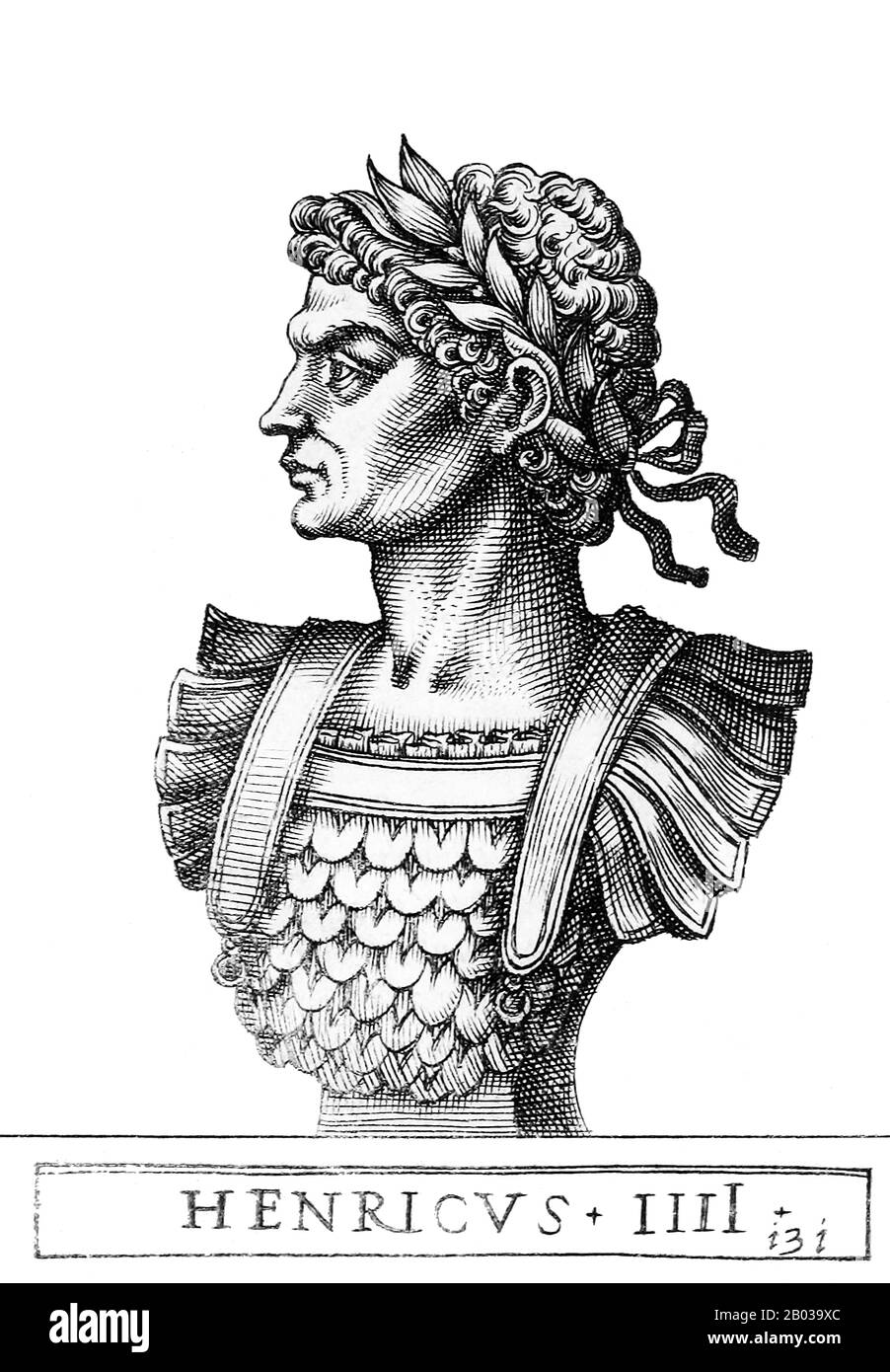 Henry IV (1050-1106), son of Emperor Henry III, was crowned King of Germany in 1056 after his father's death, though his young age meant his mother ruled as regent in his stead. He was kidnapped in the Coup of Kaiserswerth in 1062, a conspiracy led by the Archbishop of Cologne Anno II, who ruled the Holy Roman Empire while supervising over Henry's education and training. When Anno was absent from Germany for a period, Henry managed to wrest back control of the government, and spent much of his reign consolidating his imperial power. The Investiture Controversy occurred during his rule, one of Stock Photohttps://www.alamy.com/image-license-details/?v=1https://www.alamy.com/henry-iv-1050-1106-son-of-emperor-henry-iii-was-crowned-king-of-germany-in-1056-after-his-fathers-death-though-his-young-age-meant-his-mother-ruled-as-regent-in-his-stead-he-was-kidnapped-in-the-coup-of-kaiserswerth-in-1062-a-conspiracy-led-by-the-archbishop-of-cologne-anno-ii-who-ruled-the-holy-roman-empire-while-supervising-over-henrys-education-and-training-when-anno-was-absent-from-germany-for-a-period-henry-managed-to-wrest-back-control-of-the-government-and-spent-much-of-his-reign-consolidating-his-imperial-power-the-investiture-controversy-occurred-during-his-rule-one-of-image344281012.html
Henry IV (1050-1106), son of Emperor Henry III, was crowned King of Germany in 1056 after his father's death, though his young age meant his mother ruled as regent in his stead. He was kidnapped in the Coup of Kaiserswerth in 1062, a conspiracy led by the Archbishop of Cologne Anno II, who ruled the Holy Roman Empire while supervising over Henry's education and training. When Anno was absent from Germany for a period, Henry managed to wrest back control of the government, and spent much of his reign consolidating his imperial power. The Investiture Controversy occurred during his rule, one of Stock Photohttps://www.alamy.com/image-license-details/?v=1https://www.alamy.com/henry-iv-1050-1106-son-of-emperor-henry-iii-was-crowned-king-of-germany-in-1056-after-his-fathers-death-though-his-young-age-meant-his-mother-ruled-as-regent-in-his-stead-he-was-kidnapped-in-the-coup-of-kaiserswerth-in-1062-a-conspiracy-led-by-the-archbishop-of-cologne-anno-ii-who-ruled-the-holy-roman-empire-while-supervising-over-henrys-education-and-training-when-anno-was-absent-from-germany-for-a-period-henry-managed-to-wrest-back-control-of-the-government-and-spent-much-of-his-reign-consolidating-his-imperial-power-the-investiture-controversy-occurred-during-his-rule-one-of-image344281012.htmlRM2B039XC–Henry IV (1050-1106), son of Emperor Henry III, was crowned King of Germany in 1056 after his father's death, though his young age meant his mother ruled as regent in his stead. He was kidnapped in the Coup of Kaiserswerth in 1062, a conspiracy led by the Archbishop of Cologne Anno II, who ruled the Holy Roman Empire while supervising over Henry's education and training. When Anno was absent from Germany for a period, Henry managed to wrest back control of the government, and spent much of his reign consolidating his imperial power. The Investiture Controversy occurred during his rule, one of
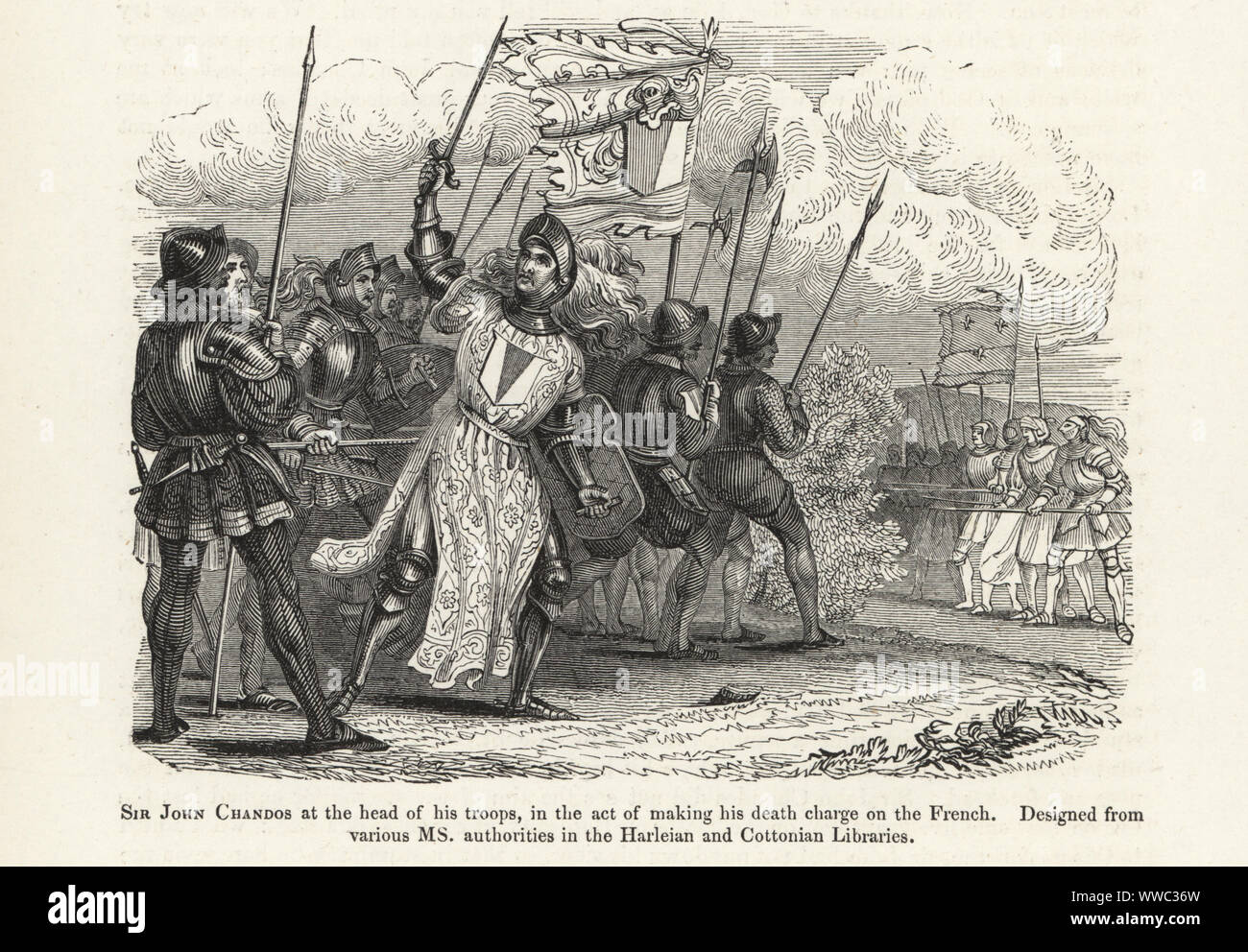 Sir John Chandos making his death charge against the French at the bridge of Lussac, during the 100 Years War, 1369. Woodcut after an illuminated manuscript from Sir John Froissart's Chronicles of England, France, Spain and the Adjoining Countries, from the Latter Part of the Reign of Edward II to the Coronation of Henry IV, George Routledge, London, 1868. Stock Photohttps://www.alamy.com/image-license-details/?v=1https://www.alamy.com/sir-john-chandos-making-his-death-charge-against-the-french-at-the-bridge-of-lussac-during-the-100-years-war-1369-woodcut-after-an-illuminated-manuscript-from-sir-john-froissarts-chronicles-of-england-france-spain-and-the-adjoining-countries-from-the-latter-part-of-the-reign-of-edward-ii-to-the-coronation-of-henry-iv-george-routledge-london-1868-image273787889.html
Sir John Chandos making his death charge against the French at the bridge of Lussac, during the 100 Years War, 1369. Woodcut after an illuminated manuscript from Sir John Froissart's Chronicles of England, France, Spain and the Adjoining Countries, from the Latter Part of the Reign of Edward II to the Coronation of Henry IV, George Routledge, London, 1868. Stock Photohttps://www.alamy.com/image-license-details/?v=1https://www.alamy.com/sir-john-chandos-making-his-death-charge-against-the-french-at-the-bridge-of-lussac-during-the-100-years-war-1369-woodcut-after-an-illuminated-manuscript-from-sir-john-froissarts-chronicles-of-england-france-spain-and-the-adjoining-countries-from-the-latter-part-of-the-reign-of-edward-ii-to-the-coronation-of-henry-iv-george-routledge-london-1868-image273787889.htmlRMWWC36W–Sir John Chandos making his death charge against the French at the bridge of Lussac, during the 100 Years War, 1369. Woodcut after an illuminated manuscript from Sir John Froissart's Chronicles of England, France, Spain and the Adjoining Countries, from the Latter Part of the Reign of Edward II to the Coronation of Henry IV, George Routledge, London, 1868.
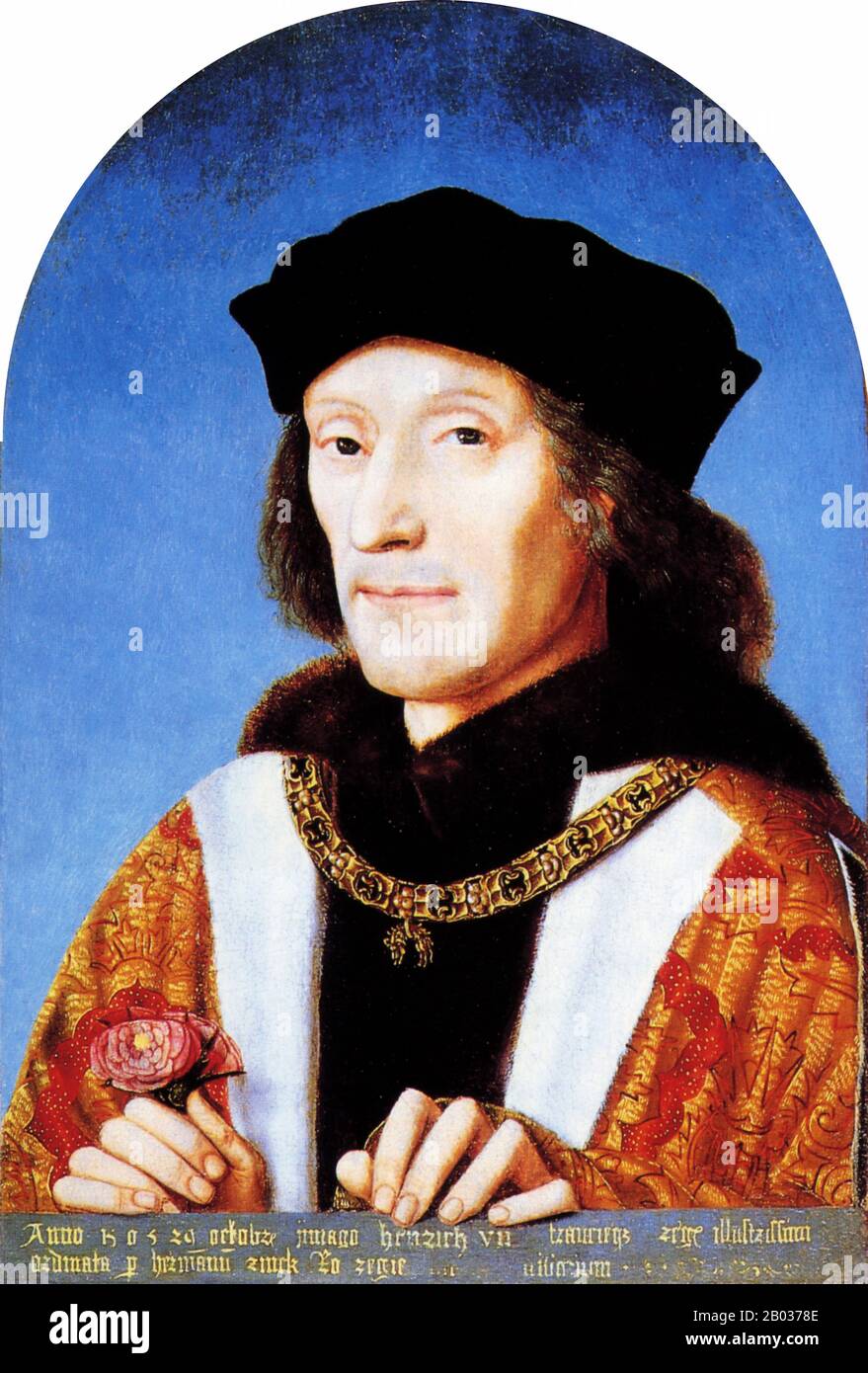 Henry VII (28 January 1457 – 21 April 1509) was King of England and Lord of Ireland from his seizing the crown on 22 August 1485 until his death on 21 April 1509, as the first monarch of the House of Tudor. Henry won the throne when his forces defeated Richard III at the Battle of Bosworth Field. He was the last king of England to win his throne on the field of battle. Henry cemented his claim by marrying Elizabeth of York, daughter of Edward IV and niece of Richard III. Henry was successful in restoring the power and stability of the English monarchy after the political upheavals of the civi Stock Photohttps://www.alamy.com/image-license-details/?v=1https://www.alamy.com/henry-vii-28-january-1457-21-april-1509-was-king-of-england-and-lord-of-ireland-from-his-seizing-the-crown-on-22-august-1485-until-his-death-on-21-april-1509-as-the-first-monarch-of-the-house-of-tudor-henry-won-the-throne-when-his-forces-defeated-richard-iii-at-the-battle-of-bosworth-field-he-was-the-last-king-of-england-to-win-his-throne-on-the-field-of-battle-henry-cemented-his-claim-by-marrying-elizabeth-of-york-daughter-of-edward-iv-and-niece-of-richard-iii-henry-was-successful-in-restoring-the-power-and-stability-of-the-english-monarchy-after-the-political-upheavals-of-the-civi-image344278942.html
Henry VII (28 January 1457 – 21 April 1509) was King of England and Lord of Ireland from his seizing the crown on 22 August 1485 until his death on 21 April 1509, as the first monarch of the House of Tudor. Henry won the throne when his forces defeated Richard III at the Battle of Bosworth Field. He was the last king of England to win his throne on the field of battle. Henry cemented his claim by marrying Elizabeth of York, daughter of Edward IV and niece of Richard III. Henry was successful in restoring the power and stability of the English monarchy after the political upheavals of the civi Stock Photohttps://www.alamy.com/image-license-details/?v=1https://www.alamy.com/henry-vii-28-january-1457-21-april-1509-was-king-of-england-and-lord-of-ireland-from-his-seizing-the-crown-on-22-august-1485-until-his-death-on-21-april-1509-as-the-first-monarch-of-the-house-of-tudor-henry-won-the-throne-when-his-forces-defeated-richard-iii-at-the-battle-of-bosworth-field-he-was-the-last-king-of-england-to-win-his-throne-on-the-field-of-battle-henry-cemented-his-claim-by-marrying-elizabeth-of-york-daughter-of-edward-iv-and-niece-of-richard-iii-henry-was-successful-in-restoring-the-power-and-stability-of-the-english-monarchy-after-the-political-upheavals-of-the-civi-image344278942.htmlRM2B0378E–Henry VII (28 January 1457 – 21 April 1509) was King of England and Lord of Ireland from his seizing the crown on 22 August 1485 until his death on 21 April 1509, as the first monarch of the House of Tudor. Henry won the throne when his forces defeated Richard III at the Battle of Bosworth Field. He was the last king of England to win his throne on the field of battle. Henry cemented his claim by marrying Elizabeth of York, daughter of Edward IV and niece of Richard III. Henry was successful in restoring the power and stability of the English monarchy after the political upheavals of the civi
 Death of William Adelin, son of King Henry I of England, after his White Ship hit rocks in the English Channel near Barfleur in 1120. William in a life boat with his half-sister. Shipwreck of Prince William. Copperplate engraving from M. A. Jones’ History of England from Julius Caesar to George IV, G. Virtue, 26 Ivy Lane, London, 1836. Stock Photohttps://www.alamy.com/image-license-details/?v=1https://www.alamy.com/death-of-william-adelin-son-of-king-henry-i-of-england-after-his-white-ship-hit-rocks-in-the-english-channel-near-barfleur-in-1120-william-in-a-life-boat-with-his-half-sister-shipwreck-of-prince-william-copperplate-engraving-from-m-a-jones-history-of-england-from-julius-caesar-to-george-iv-g-virtue-26-ivy-lane-london-1836-image428884488.html
Death of William Adelin, son of King Henry I of England, after his White Ship hit rocks in the English Channel near Barfleur in 1120. William in a life boat with his half-sister. Shipwreck of Prince William. Copperplate engraving from M. A. Jones’ History of England from Julius Caesar to George IV, G. Virtue, 26 Ivy Lane, London, 1836. Stock Photohttps://www.alamy.com/image-license-details/?v=1https://www.alamy.com/death-of-william-adelin-son-of-king-henry-i-of-england-after-his-white-ship-hit-rocks-in-the-english-channel-near-barfleur-in-1120-william-in-a-life-boat-with-his-half-sister-shipwreck-of-prince-william-copperplate-engraving-from-m-a-jones-history-of-england-from-julius-caesar-to-george-iv-g-virtue-26-ivy-lane-london-1836-image428884488.htmlRM2FWNAF4–Death of William Adelin, son of King Henry I of England, after his White Ship hit rocks in the English Channel near Barfleur in 1120. William in a life boat with his half-sister. Shipwreck of Prince William. Copperplate engraving from M. A. Jones’ History of England from Julius Caesar to George IV, G. Virtue, 26 Ivy Lane, London, 1836.
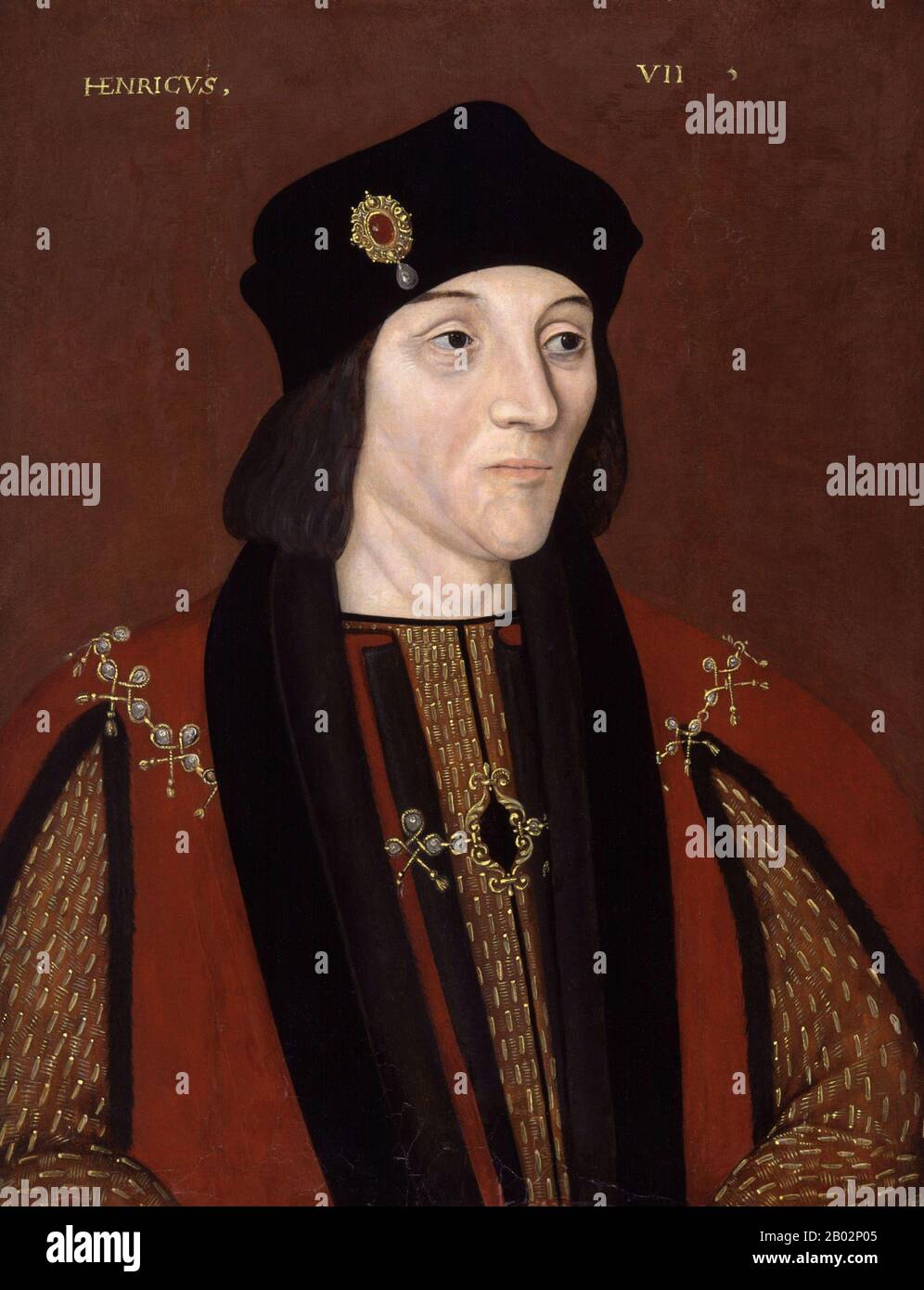 Henry VII (28 January 1457 – 21 April 1509) was King of England and Lord of Ireland from his seizing the crown on 22 August 1485 until his death on 21 April 1509, as the first monarch of the House of Tudor. Henry won the throne when his forces defeated Richard III at the Battle of Bosworth Field. He was the last king of England to win his throne on the field of battle. Henry cemented his claim by marrying Elizabeth of York, daughter of Edward IV and niece of Richard III. Henry was successful in restoring the power and stability of the English monarchy after the political upheavals of the civi Stock Photohttps://www.alamy.com/image-license-details/?v=1https://www.alamy.com/henry-vii-28-january-1457-21-april-1509-was-king-of-england-and-lord-of-ireland-from-his-seizing-the-crown-on-22-august-1485-until-his-death-on-21-april-1509-as-the-first-monarch-of-the-house-of-tudor-henry-won-the-throne-when-his-forces-defeated-richard-iii-at-the-battle-of-bosworth-field-he-was-the-last-king-of-england-to-win-his-throne-on-the-field-of-battle-henry-cemented-his-claim-by-marrying-elizabeth-of-york-daughter-of-edward-iv-and-niece-of-richard-iii-henry-was-successful-in-restoring-the-power-and-stability-of-the-english-monarchy-after-the-political-upheavals-of-the-civi-image344268517.html
Henry VII (28 January 1457 – 21 April 1509) was King of England and Lord of Ireland from his seizing the crown on 22 August 1485 until his death on 21 April 1509, as the first monarch of the House of Tudor. Henry won the throne when his forces defeated Richard III at the Battle of Bosworth Field. He was the last king of England to win his throne on the field of battle. Henry cemented his claim by marrying Elizabeth of York, daughter of Edward IV and niece of Richard III. Henry was successful in restoring the power and stability of the English monarchy after the political upheavals of the civi Stock Photohttps://www.alamy.com/image-license-details/?v=1https://www.alamy.com/henry-vii-28-january-1457-21-april-1509-was-king-of-england-and-lord-of-ireland-from-his-seizing-the-crown-on-22-august-1485-until-his-death-on-21-april-1509-as-the-first-monarch-of-the-house-of-tudor-henry-won-the-throne-when-his-forces-defeated-richard-iii-at-the-battle-of-bosworth-field-he-was-the-last-king-of-england-to-win-his-throne-on-the-field-of-battle-henry-cemented-his-claim-by-marrying-elizabeth-of-york-daughter-of-edward-iv-and-niece-of-richard-iii-henry-was-successful-in-restoring-the-power-and-stability-of-the-english-monarchy-after-the-political-upheavals-of-the-civi-image344268517.htmlRM2B02P05–Henry VII (28 January 1457 – 21 April 1509) was King of England and Lord of Ireland from his seizing the crown on 22 August 1485 until his death on 21 April 1509, as the first monarch of the House of Tudor. Henry won the throne when his forces defeated Richard III at the Battle of Bosworth Field. He was the last king of England to win his throne on the field of battle. Henry cemented his claim by marrying Elizabeth of York, daughter of Edward IV and niece of Richard III. Henry was successful in restoring the power and stability of the English monarchy after the political upheavals of the civi
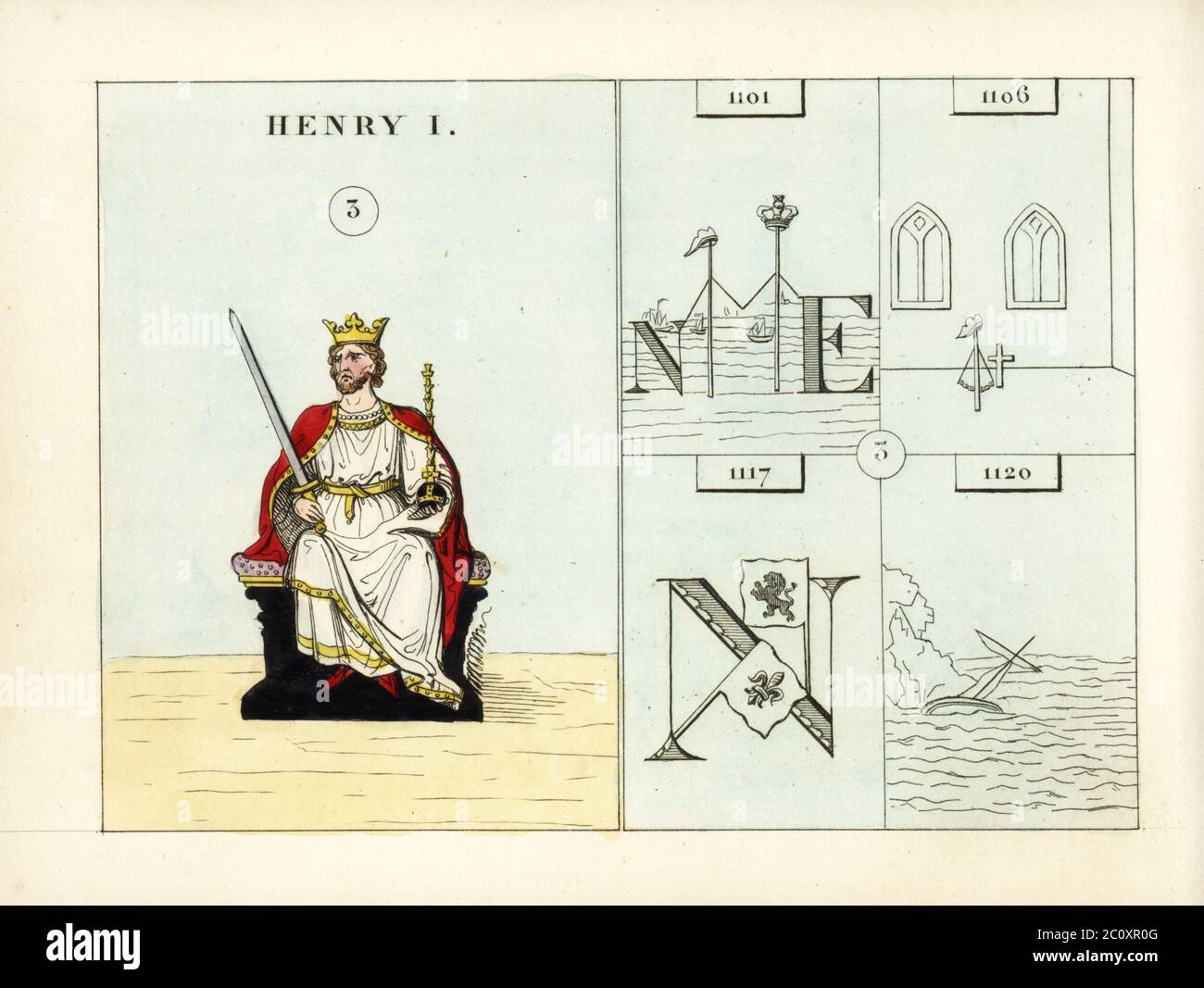 Portrait of King Henry I of England with crown, sword, orb and mantle. Emblems indicate peace treaty with France, imprisonment in Cardiff castle, French invasion of Normandy and death of Prince William. Handcoloured steel engraving after an illustration by Mary Ann Rundall from A Symbolical History of England, from Early Times to the Reign of William IV, J.H. Truchy, Paris, 1839. Mary Ann Rundall was a teacher of young ladies in Bath, and published her book of mnemonic emblems in 1815. Stock Photohttps://www.alamy.com/image-license-details/?v=1https://www.alamy.com/portrait-of-king-henry-i-of-england-with-crown-sword-orb-and-mantle-emblems-indicate-peace-treaty-with-france-imprisonment-in-cardiff-castle-french-invasion-of-normandy-and-death-of-prince-william-handcoloured-steel-engraving-after-an-illustration-by-mary-ann-rundall-from-a-symbolical-history-of-england-from-early-times-to-the-reign-of-william-iv-jh-truchy-paris-1839-mary-ann-rundall-was-a-teacher-of-young-ladies-in-bath-and-published-her-book-of-mnemonic-emblems-in-1815-image362006528.html
Portrait of King Henry I of England with crown, sword, orb and mantle. Emblems indicate peace treaty with France, imprisonment in Cardiff castle, French invasion of Normandy and death of Prince William. Handcoloured steel engraving after an illustration by Mary Ann Rundall from A Symbolical History of England, from Early Times to the Reign of William IV, J.H. Truchy, Paris, 1839. Mary Ann Rundall was a teacher of young ladies in Bath, and published her book of mnemonic emblems in 1815. Stock Photohttps://www.alamy.com/image-license-details/?v=1https://www.alamy.com/portrait-of-king-henry-i-of-england-with-crown-sword-orb-and-mantle-emblems-indicate-peace-treaty-with-france-imprisonment-in-cardiff-castle-french-invasion-of-normandy-and-death-of-prince-william-handcoloured-steel-engraving-after-an-illustration-by-mary-ann-rundall-from-a-symbolical-history-of-england-from-early-times-to-the-reign-of-william-iv-jh-truchy-paris-1839-mary-ann-rundall-was-a-teacher-of-young-ladies-in-bath-and-published-her-book-of-mnemonic-emblems-in-1815-image362006528.htmlRM2C0XR0G–Portrait of King Henry I of England with crown, sword, orb and mantle. Emblems indicate peace treaty with France, imprisonment in Cardiff castle, French invasion of Normandy and death of Prince William. Handcoloured steel engraving after an illustration by Mary Ann Rundall from A Symbolical History of England, from Early Times to the Reign of William IV, J.H. Truchy, Paris, 1839. Mary Ann Rundall was a teacher of young ladies in Bath, and published her book of mnemonic emblems in 1815.
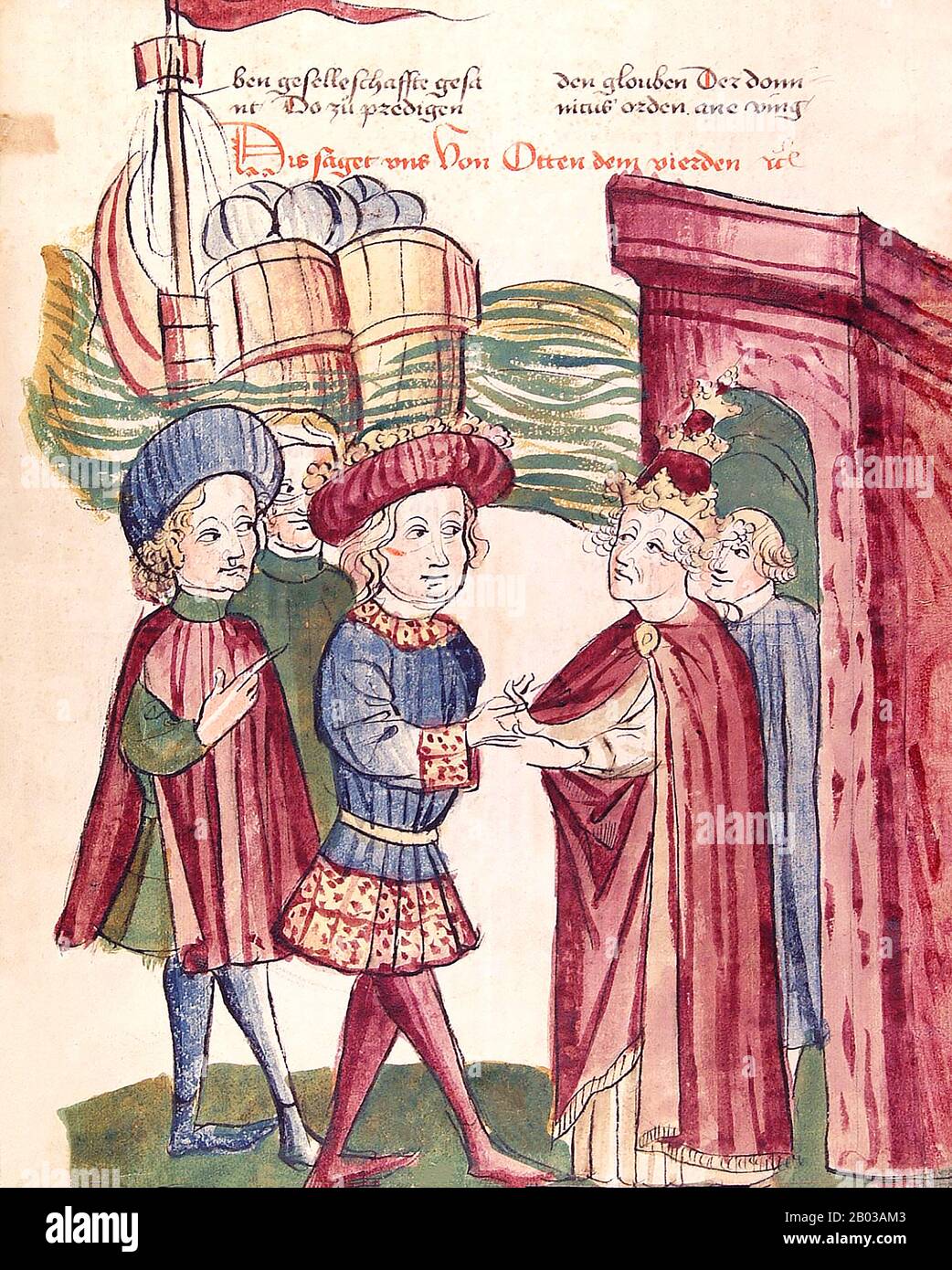 Otto IV (1175-1218) was the third son of the rebellious Duke Henry the Lion, as well as being the nephew and foster son of King Richard Lionheart of England. He was born and raised in England by Richard, and therefore many consider him the first foreign king of Germany. When Emperor Henry VI died in 1197, some of the princes opposed to the Staufen dynasty elected Otto as anti-king in 1198. Pope Innocent III (1160 or 1161 – 16 July 1216), born Lotario dei Conti di Segni (anglicized as Lothar of Segni) reigned from 8 January 1198 to his death in 1216. Stock Photohttps://www.alamy.com/image-license-details/?v=1https://www.alamy.com/otto-iv-1175-1218-was-the-third-son-of-the-rebellious-duke-henry-the-lion-as-well-as-being-the-nephew-and-foster-son-of-king-richard-lionheart-of-england-he-was-born-and-raised-in-england-by-richard-and-therefore-many-consider-him-the-first-foreign-king-of-germany-when-emperor-henry-vi-died-in-1197-some-of-the-princes-opposed-to-the-staufen-dynasty-elected-otto-as-anti-king-in-1198-pope-innocent-iii-1160-or-1161-16-july-1216-born-lotario-dei-conti-di-segni-anglicized-as-lothar-of-segni-reigned-from-8-january-1198-to-his-death-in-1216-image344281619.html
Otto IV (1175-1218) was the third son of the rebellious Duke Henry the Lion, as well as being the nephew and foster son of King Richard Lionheart of England. He was born and raised in England by Richard, and therefore many consider him the first foreign king of Germany. When Emperor Henry VI died in 1197, some of the princes opposed to the Staufen dynasty elected Otto as anti-king in 1198. Pope Innocent III (1160 or 1161 – 16 July 1216), born Lotario dei Conti di Segni (anglicized as Lothar of Segni) reigned from 8 January 1198 to his death in 1216. Stock Photohttps://www.alamy.com/image-license-details/?v=1https://www.alamy.com/otto-iv-1175-1218-was-the-third-son-of-the-rebellious-duke-henry-the-lion-as-well-as-being-the-nephew-and-foster-son-of-king-richard-lionheart-of-england-he-was-born-and-raised-in-england-by-richard-and-therefore-many-consider-him-the-first-foreign-king-of-germany-when-emperor-henry-vi-died-in-1197-some-of-the-princes-opposed-to-the-staufen-dynasty-elected-otto-as-anti-king-in-1198-pope-innocent-iii-1160-or-1161-16-july-1216-born-lotario-dei-conti-di-segni-anglicized-as-lothar-of-segni-reigned-from-8-january-1198-to-his-death-in-1216-image344281619.htmlRM2B03AM3–Otto IV (1175-1218) was the third son of the rebellious Duke Henry the Lion, as well as being the nephew and foster son of King Richard Lionheart of England. He was born and raised in England by Richard, and therefore many consider him the first foreign king of Germany. When Emperor Henry VI died in 1197, some of the princes opposed to the Staufen dynasty elected Otto as anti-king in 1198. Pope Innocent III (1160 or 1161 – 16 July 1216), born Lotario dei Conti di Segni (anglicized as Lothar of Segni) reigned from 8 January 1198 to his death in 1216.
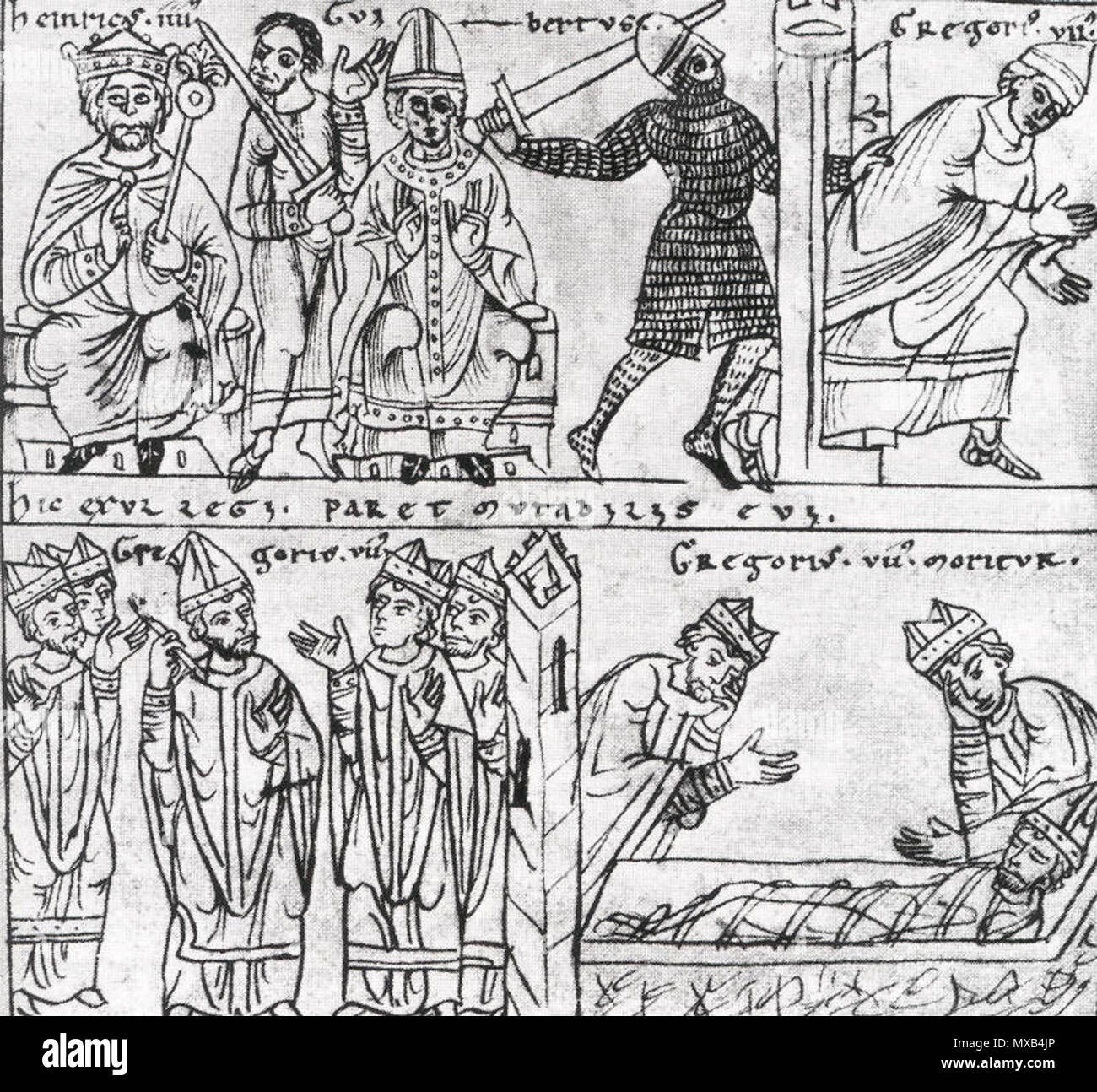 . Svenska: sv:Investiturstriden, illustration från medeltida handskrift (c:a 1150). Antipope Clement III (center) with Emperor Henry IV. The enthronement of Henry IV and Clement III, and the flight and death of Gregory VII. 21 December 2004 (original upload date) 299 Investiturstreit Stock Photohttps://www.alamy.com/image-license-details/?v=1https://www.alamy.com/svenska-svinvestiturstriden-illustration-frn-medeltida-handskrift-ca-1150-antipope-clement-iii-center-with-emperor-henry-iv-the-enthronement-of-henry-iv-and-clement-iii-and-the-flight-and-death-of-gregory-vii-21-december-2004-original-upload-date-299-investiturstreit-image188329870.html
. Svenska: sv:Investiturstriden, illustration från medeltida handskrift (c:a 1150). Antipope Clement III (center) with Emperor Henry IV. The enthronement of Henry IV and Clement III, and the flight and death of Gregory VII. 21 December 2004 (original upload date) 299 Investiturstreit Stock Photohttps://www.alamy.com/image-license-details/?v=1https://www.alamy.com/svenska-svinvestiturstriden-illustration-frn-medeltida-handskrift-ca-1150-antipope-clement-iii-center-with-emperor-henry-iv-the-enthronement-of-henry-iv-and-clement-iii-and-the-flight-and-death-of-gregory-vii-21-december-2004-original-upload-date-299-investiturstreit-image188329870.htmlRMMXB4JP–. Svenska: sv:Investiturstriden, illustration från medeltida handskrift (c:a 1150). Antipope Clement III (center) with Emperor Henry IV. The enthronement of Henry IV and Clement III, and the flight and death of Gregory VII. 21 December 2004 (original upload date) 299 Investiturstreit
 REYNOLDS. DEATH OF CARDINAL BEAUFORT. MUSEUM OF PAINTING AND SCULPTURE DRAWS AND SYCHED BY REVEIL. LONDON.PARIS 1833 Stock Photohttps://www.alamy.com/image-license-details/?v=1https://www.alamy.com/reynolds-death-of-cardinal-beaufort-museum-of-painting-and-sculpture-draws-and-syched-by-reveil-londonparis-1833-image569772577.html
REYNOLDS. DEATH OF CARDINAL BEAUFORT. MUSEUM OF PAINTING AND SCULPTURE DRAWS AND SYCHED BY REVEIL. LONDON.PARIS 1833 Stock Photohttps://www.alamy.com/image-license-details/?v=1https://www.alamy.com/reynolds-death-of-cardinal-beaufort-museum-of-painting-and-sculpture-draws-and-syched-by-reveil-londonparis-1833-image569772577.htmlRF2T2YAMH–REYNOLDS. DEATH OF CARDINAL BEAUFORT. MUSEUM OF PAINTING AND SCULPTURE DRAWS AND SYCHED BY REVEIL. LONDON.PARIS 1833
 Falstaff Rising Slowly (Shakespeare, First Part of King Henry IV, Act 5, Scene 4), June 4, 1794. Stock Photohttps://www.alamy.com/image-license-details/?v=1https://www.alamy.com/falstaff-rising-slowly-shakespeare-first-part-of-king-henry-iv-act-5-scene-4-june-4-1794-image469815242.html
Falstaff Rising Slowly (Shakespeare, First Part of King Henry IV, Act 5, Scene 4), June 4, 1794. Stock Photohttps://www.alamy.com/image-license-details/?v=1https://www.alamy.com/falstaff-rising-slowly-shakespeare-first-part-of-king-henry-iv-act-5-scene-4-june-4-1794-image469815242.htmlRM2J89X3P–Falstaff Rising Slowly (Shakespeare, First Part of King Henry IV, Act 5, Scene 4), June 4, 1794.
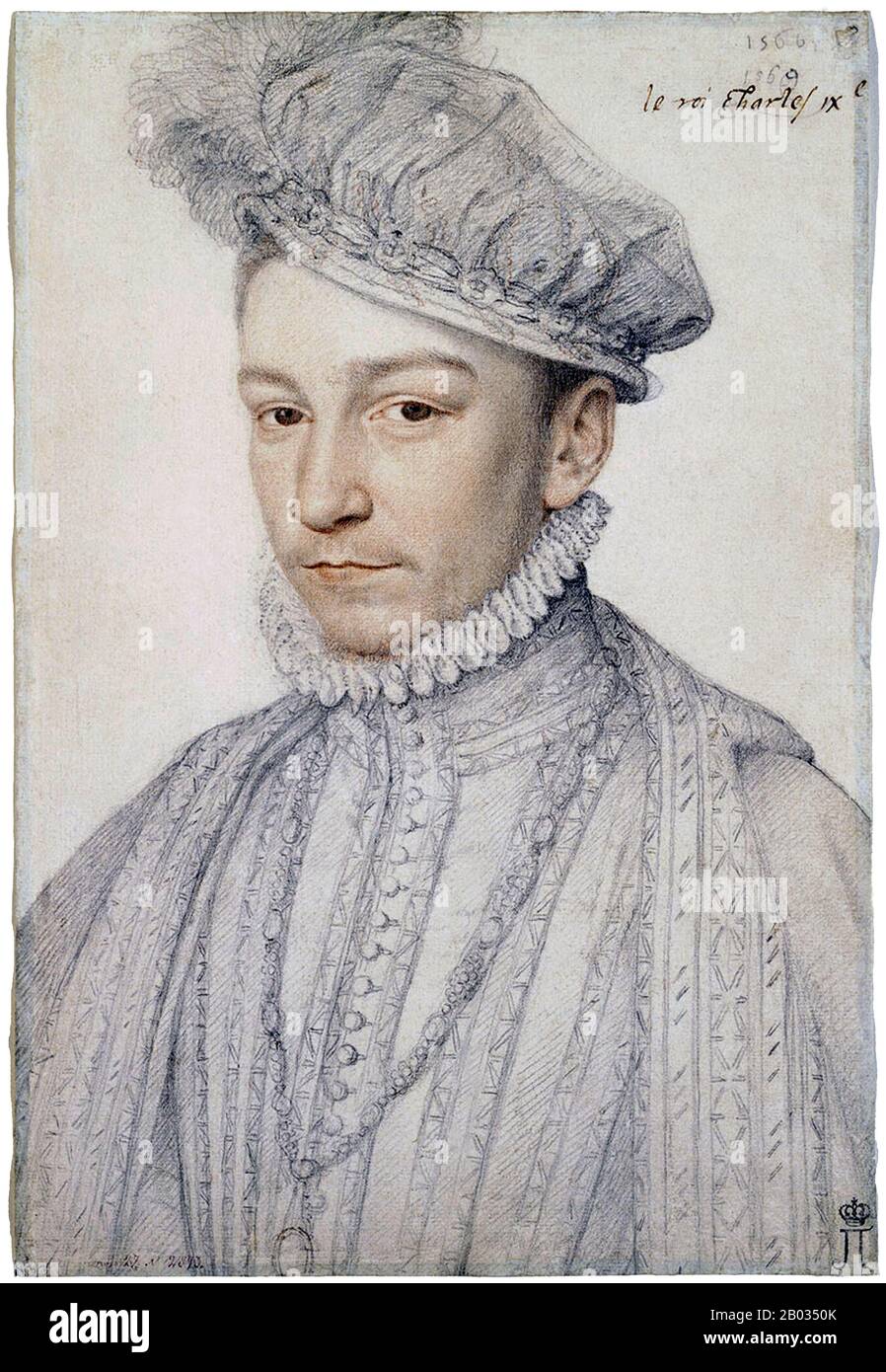 Charles IX (27 June 1550 – 30 May 1574) was a monarch of the House of Valois who ruled as King of France from 1560 until his death. He ascended the throne of France upon the death of his brother Francis II. After decades of tension, war broke out between Protestants and Catholics after the massacre of Vassy in 1562. In 1572, after several unsuccessful peace attempts, Charles ordered the marriage of his sister Margaret of Valois to Henry of Navarre, a major Protestant nobleman and the future King Henry IV of France, in a last desperate bid to reconcile his people. Facing popular hostility aga Stock Photohttps://www.alamy.com/image-license-details/?v=1https://www.alamy.com/charles-ix-27-june-1550-30-may-1574-was-a-monarch-of-the-house-of-valois-who-ruled-as-king-of-france-from-1560-until-his-death-he-ascended-the-throne-of-france-upon-the-death-of-his-brother-francis-ii-after-decades-of-tension-war-broke-out-between-protestants-and-catholics-after-the-massacre-of-vassy-in-1562-in-1572-after-several-unsuccessful-peace-attempts-charles-ordered-the-marriage-of-his-sister-margaret-of-valois-to-henry-of-navarre-a-major-protestant-nobleman-and-the-future-king-henry-iv-of-france-in-a-last-desperate-bid-to-reconcile-his-people-facing-popular-hostility-aga-image344277155.html
Charles IX (27 June 1550 – 30 May 1574) was a monarch of the House of Valois who ruled as King of France from 1560 until his death. He ascended the throne of France upon the death of his brother Francis II. After decades of tension, war broke out between Protestants and Catholics after the massacre of Vassy in 1562. In 1572, after several unsuccessful peace attempts, Charles ordered the marriage of his sister Margaret of Valois to Henry of Navarre, a major Protestant nobleman and the future King Henry IV of France, in a last desperate bid to reconcile his people. Facing popular hostility aga Stock Photohttps://www.alamy.com/image-license-details/?v=1https://www.alamy.com/charles-ix-27-june-1550-30-may-1574-was-a-monarch-of-the-house-of-valois-who-ruled-as-king-of-france-from-1560-until-his-death-he-ascended-the-throne-of-france-upon-the-death-of-his-brother-francis-ii-after-decades-of-tension-war-broke-out-between-protestants-and-catholics-after-the-massacre-of-vassy-in-1562-in-1572-after-several-unsuccessful-peace-attempts-charles-ordered-the-marriage-of-his-sister-margaret-of-valois-to-henry-of-navarre-a-major-protestant-nobleman-and-the-future-king-henry-iv-of-france-in-a-last-desperate-bid-to-reconcile-his-people-facing-popular-hostility-aga-image344277155.htmlRM2B0350K–Charles IX (27 June 1550 – 30 May 1574) was a monarch of the House of Valois who ruled as King of France from 1560 until his death. He ascended the throne of France upon the death of his brother Francis II. After decades of tension, war broke out between Protestants and Catholics after the massacre of Vassy in 1562. In 1572, after several unsuccessful peace attempts, Charles ordered the marriage of his sister Margaret of Valois to Henry of Navarre, a major Protestant nobleman and the future King Henry IV of France, in a last desperate bid to reconcile his people. Facing popular hostility aga
 Bastille Prison in Paris: execution of Charles de Gontaut-Biron, Marshal of France who betrayed King Henri IV of France through a plot to bring back the Catholic Ligue. 31 July 1602 Illustration by Hermann Vogel published in 'Henri IV', written by Georges Montorgueil and published by Boivin in 1907. Stock Photohttps://www.alamy.com/image-license-details/?v=1https://www.alamy.com/bastille-prison-in-paris-execution-of-charles-de-gontaut-biron-marshal-of-france-who-betrayed-king-henri-iv-of-france-through-a-plot-to-bring-back-the-catholic-ligue-31-july-1602-illustration-by-hermann-vogel-published-in-henri-iv-written-by-georges-montorgueil-and-published-by-boivin-in-1907-image610220855.html
Bastille Prison in Paris: execution of Charles de Gontaut-Biron, Marshal of France who betrayed King Henri IV of France through a plot to bring back the Catholic Ligue. 31 July 1602 Illustration by Hermann Vogel published in 'Henri IV', written by Georges Montorgueil and published by Boivin in 1907. Stock Photohttps://www.alamy.com/image-license-details/?v=1https://www.alamy.com/bastille-prison-in-paris-execution-of-charles-de-gontaut-biron-marshal-of-france-who-betrayed-king-henri-iv-of-france-through-a-plot-to-bring-back-the-catholic-ligue-31-july-1602-illustration-by-hermann-vogel-published-in-henri-iv-written-by-georges-montorgueil-and-published-by-boivin-in-1907-image610220855.htmlRM2XCNXWY–Bastille Prison in Paris: execution of Charles de Gontaut-Biron, Marshal of France who betrayed King Henri IV of France through a plot to bring back the Catholic Ligue. 31 July 1602 Illustration by Hermann Vogel published in 'Henri IV', written by Georges Montorgueil and published by Boivin in 1907.
 'La mort de Gabrielle d'Estrees (1573-1599) favorite du roi Henri IV des suites d'une couche' (The death of Gabrielle d'Estrees mistress of King Henry Stock Photohttps://www.alamy.com/image-license-details/?v=1https://www.alamy.com/la-mort-de-gabrielle-destrees-1573-1599-favorite-du-roi-henri-iv-des-suites-dune-couche-the-death-of-gabrielle-destrees-mistress-of-king-henry-image356951472.html
'La mort de Gabrielle d'Estrees (1573-1599) favorite du roi Henri IV des suites d'une couche' (The death of Gabrielle d'Estrees mistress of King Henry Stock Photohttps://www.alamy.com/image-license-details/?v=1https://www.alamy.com/la-mort-de-gabrielle-destrees-1573-1599-favorite-du-roi-henri-iv-des-suites-dune-couche-the-death-of-gabrielle-destrees-mistress-of-king-henry-image356951472.htmlRM2BMMF6T–'La mort de Gabrielle d'Estrees (1573-1599) favorite du roi Henri IV des suites d'une couche' (The death of Gabrielle d'Estrees mistress of King Henry
 The effigy of Sir Robert Goushill (1350-1403) in the parish church of St.Michael at Hoveringham, Nottinghamshire, England. Whilst fighting for Henry IV at the Battle of Shrewesbury (21st July 1403) he was badly wounded, then treacherously stabbed to death by his servant. Stock Photohttps://www.alamy.com/image-license-details/?v=1https://www.alamy.com/the-effigy-of-sir-robert-goushill-1350-1403-in-the-parish-church-of-stmichael-at-hoveringham-nottinghamshire-england-whilst-fighting-for-henry-iv-at-the-battle-of-shrewesbury-21st-july-1403-he-was-badly-wounded-then-treacherously-stabbed-to-death-by-his-servant-image183777958.html
The effigy of Sir Robert Goushill (1350-1403) in the parish church of St.Michael at Hoveringham, Nottinghamshire, England. Whilst fighting for Henry IV at the Battle of Shrewesbury (21st July 1403) he was badly wounded, then treacherously stabbed to death by his servant. Stock Photohttps://www.alamy.com/image-license-details/?v=1https://www.alamy.com/the-effigy-of-sir-robert-goushill-1350-1403-in-the-parish-church-of-stmichael-at-hoveringham-nottinghamshire-england-whilst-fighting-for-henry-iv-at-the-battle-of-shrewesbury-21st-july-1403-he-was-badly-wounded-then-treacherously-stabbed-to-death-by-his-servant-image183777958.htmlRMMJYPJE–The effigy of Sir Robert Goushill (1350-1403) in the parish church of St.Michael at Hoveringham, Nottinghamshire, England. Whilst fighting for Henry IV at the Battle of Shrewesbury (21st July 1403) he was badly wounded, then treacherously stabbed to death by his servant.
 Henry, Prince of Wales taking the Crown from the pillow of his father Henry IV, 1413 (1793). Artist: Unknown. Stock Photohttps://www.alamy.com/image-license-details/?v=1https://www.alamy.com/henry-prince-of-wales-taking-the-crown-from-the-pillow-of-his-father-henry-iv-1413-1793-artist-unknown-image262785231.html
Henry, Prince of Wales taking the Crown from the pillow of his father Henry IV, 1413 (1793). Artist: Unknown. Stock Photohttps://www.alamy.com/image-license-details/?v=1https://www.alamy.com/henry-prince-of-wales-taking-the-crown-from-the-pillow-of-his-father-henry-iv-1413-1793-artist-unknown-image262785231.htmlRMW7EW6R–Henry, Prince of Wales taking the Crown from the pillow of his father Henry IV, 1413 (1793). Artist: Unknown.
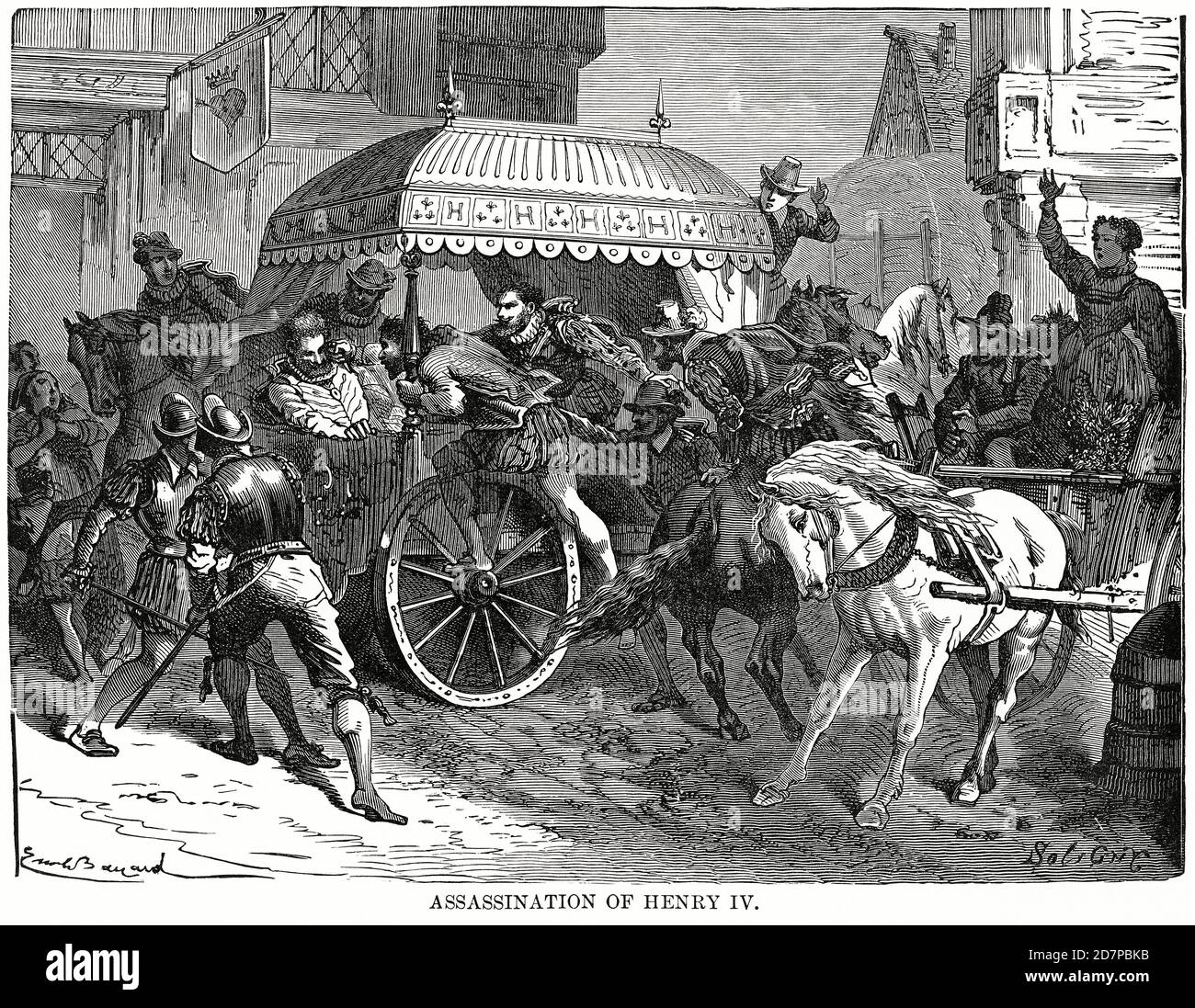 Assassination of Henry IV, Illustration, Ridpath's History of the World, Volume III, by John Clark Ridpath, LL. D., Merrill & Baker Publishers, New York, 1897 Stock Photohttps://www.alamy.com/image-license-details/?v=1https://www.alamy.com/assassination-of-henry-iv-illustration-ridpaths-history-of-the-world-volume-iii-by-john-clark-ridpath-ll-d-merrill-baker-publishers-new-york-1897-image383422799.html
Assassination of Henry IV, Illustration, Ridpath's History of the World, Volume III, by John Clark Ridpath, LL. D., Merrill & Baker Publishers, New York, 1897 Stock Photohttps://www.alamy.com/image-license-details/?v=1https://www.alamy.com/assassination-of-henry-iv-illustration-ridpaths-history-of-the-world-volume-iii-by-john-clark-ridpath-ll-d-merrill-baker-publishers-new-york-1897-image383422799.htmlRM2D7PBKB–Assassination of Henry IV, Illustration, Ridpath's History of the World, Volume III, by John Clark Ridpath, LL. D., Merrill & Baker Publishers, New York, 1897
 English 14th century Monarchs depicted by Heaton, Butler and Bayne, Rochdale Town Hall, Greater Manchester, UK Stock Photohttps://www.alamy.com/image-license-details/?v=1https://www.alamy.com/english-14th-century-monarchs-depicted-by-heaton-butler-and-bayne-rochdale-town-hall-greater-manchester-uk-image331016914.html
English 14th century Monarchs depicted by Heaton, Butler and Bayne, Rochdale Town Hall, Greater Manchester, UK Stock Photohttps://www.alamy.com/image-license-details/?v=1https://www.alamy.com/english-14th-century-monarchs-depicted-by-heaton-butler-and-bayne-rochdale-town-hall-greater-manchester-uk-image331016914.htmlRM2A6F3CJ–English 14th century Monarchs depicted by Heaton, Butler and Bayne, Rochdale Town Hall, Greater Manchester, UK
 Henry Stafford, 2nd Duke of Buckingham executed for treason by King Richard III, 1483. Beheaded in a courtyard in Salisbury market-place. Death of the Duke of Buckingham. Copperplate engraving from M. A. Jones History of England from Julius Caesar to George IV, G. Virtue, 26 Ivy Lane, London, 1836. Stock Photohttps://www.alamy.com/image-license-details/?v=1https://www.alamy.com/henry-stafford-2nd-duke-of-buckingham-executed-for-treason-by-king-richard-iii-1483-beheaded-in-a-courtyard-in-salisbury-market-place-death-of-the-duke-of-buckingham-copperplate-engraving-from-m-a-jones-history-of-england-from-julius-caesar-to-george-iv-g-virtue-26-ivy-lane-london-1836-image571816955.html
Henry Stafford, 2nd Duke of Buckingham executed for treason by King Richard III, 1483. Beheaded in a courtyard in Salisbury market-place. Death of the Duke of Buckingham. Copperplate engraving from M. A. Jones History of England from Julius Caesar to George IV, G. Virtue, 26 Ivy Lane, London, 1836. Stock Photohttps://www.alamy.com/image-license-details/?v=1https://www.alamy.com/henry-stafford-2nd-duke-of-buckingham-executed-for-treason-by-king-richard-iii-1483-beheaded-in-a-courtyard-in-salisbury-market-place-death-of-the-duke-of-buckingham-copperplate-engraving-from-m-a-jones-history-of-england-from-julius-caesar-to-george-iv-g-virtue-26-ivy-lane-london-1836-image571816955.htmlRM2T68EA3–Henry Stafford, 2nd Duke of Buckingham executed for treason by King Richard III, 1483. Beheaded in a courtyard in Salisbury market-place. Death of the Duke of Buckingham. Copperplate engraving from M. A. Jones History of England from Julius Caesar to George IV, G. Virtue, 26 Ivy Lane, London, 1836.
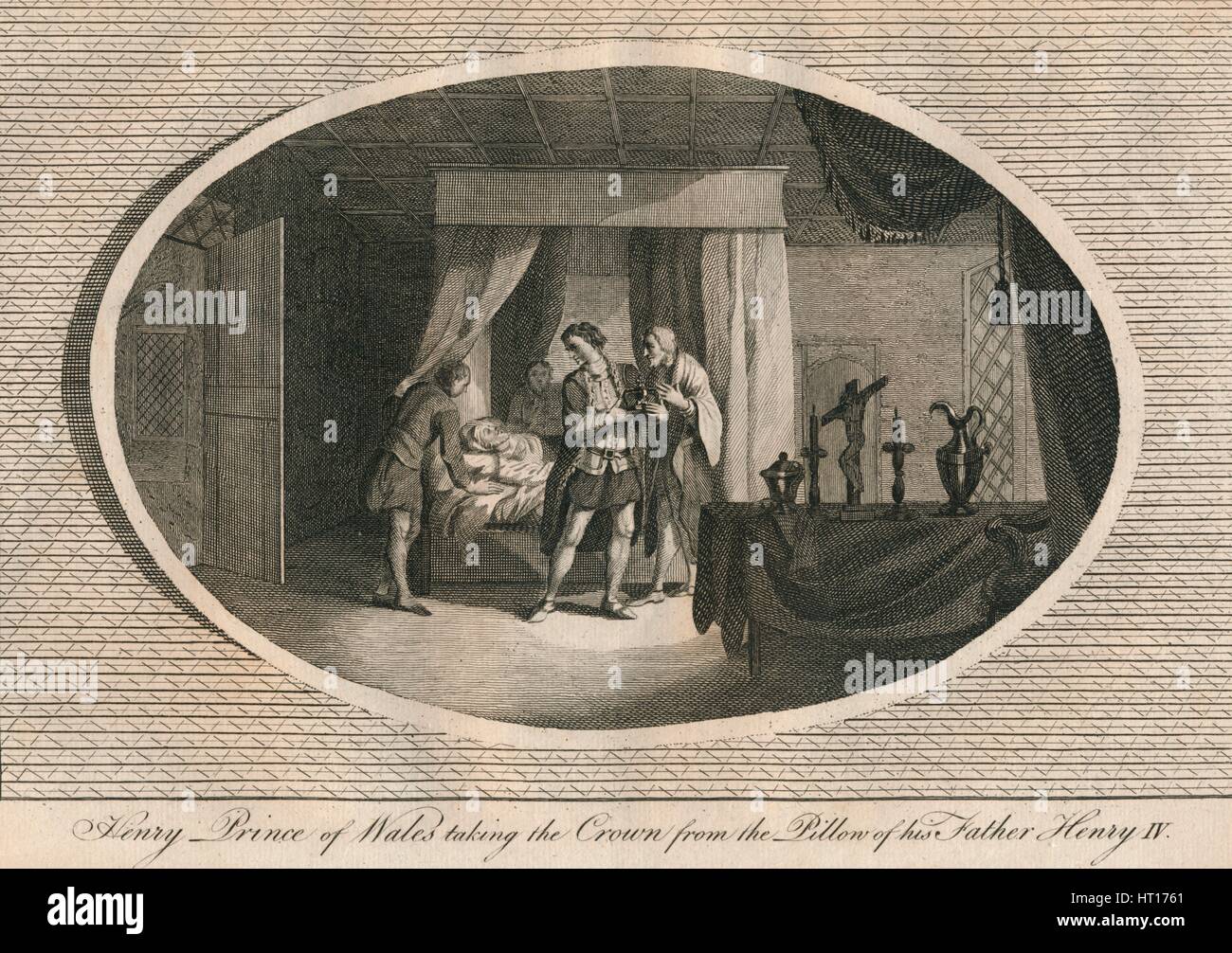 Henry, Prince of Wales taking the Crown from the pillow of his father Henry IV, 1413 (1793). Artist: Unknown. Stock Photohttps://www.alamy.com/image-license-details/?v=1https://www.alamy.com/stock-photo-henry-prince-of-wales-taking-the-crown-from-the-pillow-of-his-father-135251929.html
Henry, Prince of Wales taking the Crown from the pillow of his father Henry IV, 1413 (1793). Artist: Unknown. Stock Photohttps://www.alamy.com/image-license-details/?v=1https://www.alamy.com/stock-photo-henry-prince-of-wales-taking-the-crown-from-the-pillow-of-his-father-135251929.htmlRMHT1761–Henry, Prince of Wales taking the Crown from the pillow of his father Henry IV, 1413 (1793). Artist: Unknown.
 Beijing, China. 18th Feb, 2016. Actors rehearse drama Henry IV of William Shakespeare in China's National Center for the Performing Arts in Beijing, capital of China, Feb. 18, 2016. The year 2016 marks the 400th anniversary of Shakespeare's death. The Royal Shakespeare Company embarks on its first major tour of China as it takes productions of Henry IV Part I, Henry IV Part II and Henry V to Chinese audience. © Luo Xiaoguang/Xinhua/Alamy Live News Stock Photohttps://www.alamy.com/image-license-details/?v=1https://www.alamy.com/stock-photo-beijing-china-18th-feb-2016-actors-rehearse-drama-henry-iv-of-william-96090661.html
Beijing, China. 18th Feb, 2016. Actors rehearse drama Henry IV of William Shakespeare in China's National Center for the Performing Arts in Beijing, capital of China, Feb. 18, 2016. The year 2016 marks the 400th anniversary of Shakespeare's death. The Royal Shakespeare Company embarks on its first major tour of China as it takes productions of Henry IV Part I, Henry IV Part II and Henry V to Chinese audience. © Luo Xiaoguang/Xinhua/Alamy Live News Stock Photohttps://www.alamy.com/image-license-details/?v=1https://www.alamy.com/stock-photo-beijing-china-18th-feb-2016-actors-rehearse-drama-henry-iv-of-william-96090661.htmlRMFG98H9–Beijing, China. 18th Feb, 2016. Actors rehearse drama Henry IV of William Shakespeare in China's National Center for the Performing Arts in Beijing, capital of China, Feb. 18, 2016. The year 2016 marks the 400th anniversary of Shakespeare's death. The Royal Shakespeare Company embarks on its first major tour of China as it takes productions of Henry IV Part I, Henry IV Part II and Henry V to Chinese audience. © Luo Xiaoguang/Xinhua/Alamy Live News
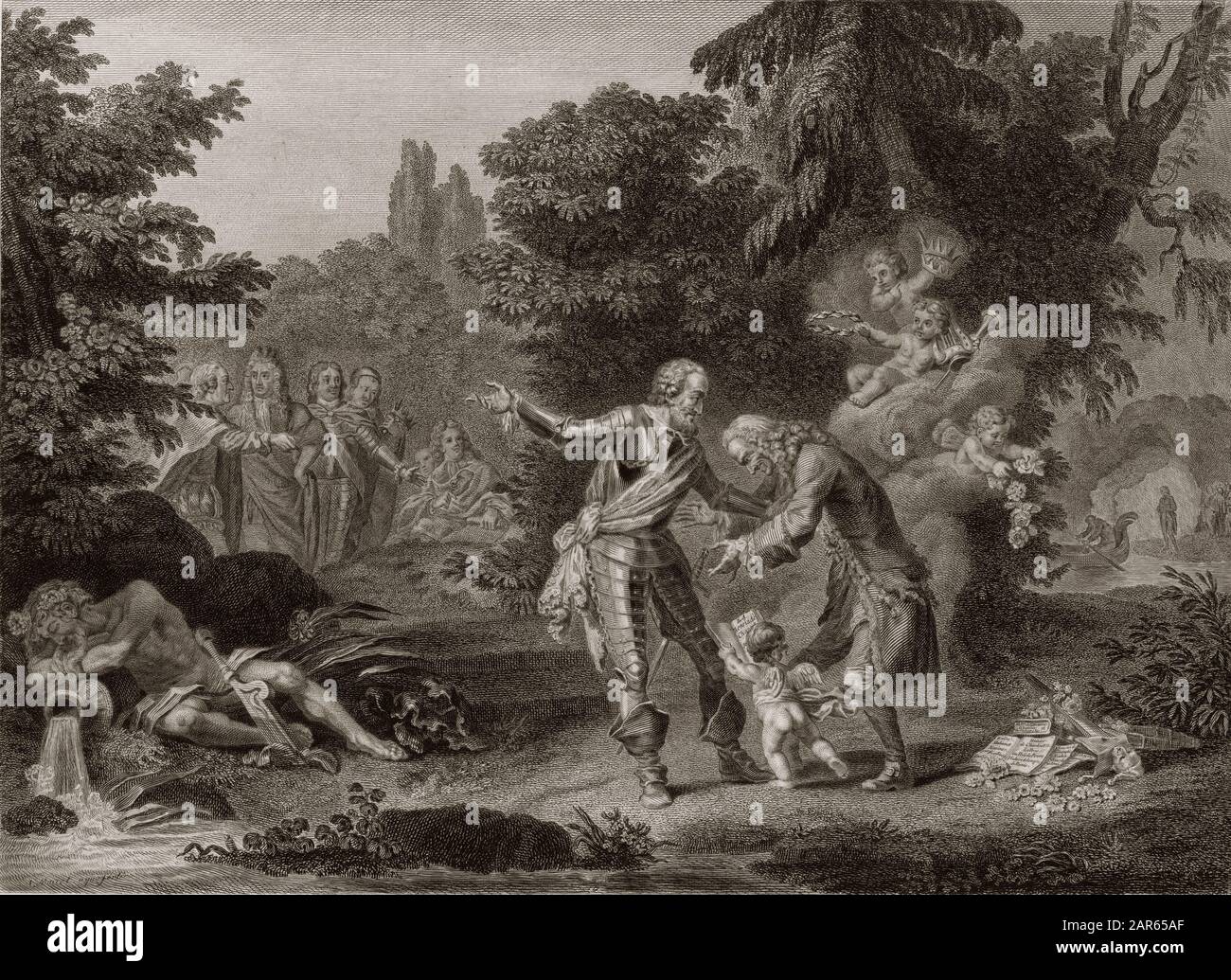 Voltaire (Francois Marie Arouet, 1694-1778) at the Elysian Fields - Reception de Voltaire aux champs Elysees par Henri IV (1553-1610): au second plan Stock Photohttps://www.alamy.com/image-license-details/?v=1https://www.alamy.com/voltaire-francois-marie-arouet-1694-1778-at-the-elysian-fields-reception-de-voltaire-aux-champs-elysees-par-henri-iv-1553-1610-au-second-plan-image341270007.html
Voltaire (Francois Marie Arouet, 1694-1778) at the Elysian Fields - Reception de Voltaire aux champs Elysees par Henri IV (1553-1610): au second plan Stock Photohttps://www.alamy.com/image-license-details/?v=1https://www.alamy.com/voltaire-francois-marie-arouet-1694-1778-at-the-elysian-fields-reception-de-voltaire-aux-champs-elysees-par-henri-iv-1553-1610-au-second-plan-image341270007.htmlRM2AR65AF–Voltaire (Francois Marie Arouet, 1694-1778) at the Elysian Fields - Reception de Voltaire aux champs Elysees par Henri IV (1553-1610): au second plan
 William IV, 1765 – 1837, was King of the United Kingdom of Great Britain and Ireland from 1830 until his death in 1837 Stock Photohttps://www.alamy.com/image-license-details/?v=1https://www.alamy.com/william-iv-1765-1837-was-king-of-the-united-kingdom-of-great-britain-and-ireland-from-1830-until-his-death-in-1837-image255618357.html
William IV, 1765 – 1837, was King of the United Kingdom of Great Britain and Ireland from 1830 until his death in 1837 Stock Photohttps://www.alamy.com/image-license-details/?v=1https://www.alamy.com/william-iv-1765-1837-was-king-of-the-united-kingdom-of-great-britain-and-ireland-from-1830-until-his-death-in-1837-image255618357.htmlRMTRTBR1–William IV, 1765 – 1837, was King of the United Kingdom of Great Britain and Ireland from 1830 until his death in 1837
 (160218) -- BEIJING, Feb. 18, 2016 -- Director Gregory Doran speaks during a press conference about the Royal Shakespeare Company s performance in the National Center for the Performing Arts in Beijing, capital of China, Feb. 18, 2016. The year 2016 marks the 400th anniversary of Shakespeare s death. The Royal Shakespeare Company embarks on its first major tour of China as it takes productions of Henry IV Part I, Henry IV Part II and Henry V to Chinese audience. ) (wyl) CHINA-BEIJING-ROYAL SHAKESPEARE COMPANY-HENRY IV & V (CN) LuoxXiaoguang PUBLICATIONxNOTxINxCHN Beijing Feb 18 2016 Director Stock Photohttps://www.alamy.com/image-license-details/?v=1https://www.alamy.com/160218-beijing-feb-18-2016-director-gregory-doran-speaks-during-a-press-conference-about-the-royal-shakespeare-company-s-performance-in-the-national-center-for-the-performing-arts-in-beijing-capital-of-china-feb-18-2016-the-year-2016-marks-the-400th-anniversary-of-shakespeare-s-death-the-royal-shakespeare-company-embarks-on-its-first-major-tour-of-china-as-it-takes-productions-of-henry-iv-part-i-henry-iv-part-ii-and-henry-v-to-chinese-audience-wyl-china-beijing-royal-shakespeare-company-henry-iv-v-cn-luoxxiaoguang-publicationxnotxinxchn-beijing-feb-18-2016-director-image563884483.html
(160218) -- BEIJING, Feb. 18, 2016 -- Director Gregory Doran speaks during a press conference about the Royal Shakespeare Company s performance in the National Center for the Performing Arts in Beijing, capital of China, Feb. 18, 2016. The year 2016 marks the 400th anniversary of Shakespeare s death. The Royal Shakespeare Company embarks on its first major tour of China as it takes productions of Henry IV Part I, Henry IV Part II and Henry V to Chinese audience. ) (wyl) CHINA-BEIJING-ROYAL SHAKESPEARE COMPANY-HENRY IV & V (CN) LuoxXiaoguang PUBLICATIONxNOTxINxCHN Beijing Feb 18 2016 Director Stock Photohttps://www.alamy.com/image-license-details/?v=1https://www.alamy.com/160218-beijing-feb-18-2016-director-gregory-doran-speaks-during-a-press-conference-about-the-royal-shakespeare-company-s-performance-in-the-national-center-for-the-performing-arts-in-beijing-capital-of-china-feb-18-2016-the-year-2016-marks-the-400th-anniversary-of-shakespeare-s-death-the-royal-shakespeare-company-embarks-on-its-first-major-tour-of-china-as-it-takes-productions-of-henry-iv-part-i-henry-iv-part-ii-and-henry-v-to-chinese-audience-wyl-china-beijing-royal-shakespeare-company-henry-iv-v-cn-luoxxiaoguang-publicationxnotxinxchn-beijing-feb-18-2016-director-image563884483.htmlRM2RNB4BF–(160218) -- BEIJING, Feb. 18, 2016 -- Director Gregory Doran speaks during a press conference about the Royal Shakespeare Company s performance in the National Center for the Performing Arts in Beijing, capital of China, Feb. 18, 2016. The year 2016 marks the 400th anniversary of Shakespeare s death. The Royal Shakespeare Company embarks on its first major tour of China as it takes productions of Henry IV Part I, Henry IV Part II and Henry V to Chinese audience. ) (wyl) CHINA-BEIJING-ROYAL SHAKESPEARE COMPANY-HENRY IV & V (CN) LuoxXiaoguang PUBLICATIONxNOTxINxCHN Beijing Feb 18 2016 Director
 'Henry II, 'The Holy', 6.5.973 - 13.7.1024, Roman emperor, 14.2.1014 - 13.7.1024, scene, death of the emperor, relief, by Tilm Stock Photohttps://www.alamy.com/image-license-details/?v=1https://www.alamy.com/stock-photo-henry-ii-the-holy-65973-1371024-roman-emperor-1421014-1371024-scene-11696182.html
'Henry II, 'The Holy', 6.5.973 - 13.7.1024, Roman emperor, 14.2.1014 - 13.7.1024, scene, death of the emperor, relief, by Tilm Stock Photohttps://www.alamy.com/image-license-details/?v=1https://www.alamy.com/stock-photo-henry-ii-the-holy-65973-1371024-roman-emperor-1421014-1371024-scene-11696182.htmlRMA71TMR–'Henry II, 'The Holy', 6.5.973 - 13.7.1024, Roman emperor, 14.2.1014 - 13.7.1024, scene, death of the emperor, relief, by Tilm
 Portrait of King Henry III of England. With crown, sceptres and mantle. Emblems indicate trampling of the Magna Carta, defeat of Prince Edward, British Constitution, and stabbing to death in the Holy Land. Handcoloured steel engraving after an illustration by Mary Ann Rundall from A Symbolical History of England, from Early Times to the Reign of William IV, J.H. Truchy, Paris, 1839. Mary Ann Rundall was a teacher of young ladies in Bath, and published her book of mnemonic emblems in 1815. Stock Photohttps://www.alamy.com/image-license-details/?v=1https://www.alamy.com/portrait-of-king-henry-iii-of-england-with-crown-sceptres-and-mantle-emblems-indicate-trampling-of-the-magna-carta-defeat-of-prince-edward-british-constitution-and-stabbing-to-death-in-the-holy-land-handcoloured-steel-engraving-after-an-illustration-by-mary-ann-rundall-from-a-symbolical-history-of-england-from-early-times-to-the-reign-of-william-iv-jh-truchy-paris-1839-mary-ann-rundall-was-a-teacher-of-young-ladies-in-bath-and-published-her-book-of-mnemonic-emblems-in-1815-image362006580.html
Portrait of King Henry III of England. With crown, sceptres and mantle. Emblems indicate trampling of the Magna Carta, defeat of Prince Edward, British Constitution, and stabbing to death in the Holy Land. Handcoloured steel engraving after an illustration by Mary Ann Rundall from A Symbolical History of England, from Early Times to the Reign of William IV, J.H. Truchy, Paris, 1839. Mary Ann Rundall was a teacher of young ladies in Bath, and published her book of mnemonic emblems in 1815. Stock Photohttps://www.alamy.com/image-license-details/?v=1https://www.alamy.com/portrait-of-king-henry-iii-of-england-with-crown-sceptres-and-mantle-emblems-indicate-trampling-of-the-magna-carta-defeat-of-prince-edward-british-constitution-and-stabbing-to-death-in-the-holy-land-handcoloured-steel-engraving-after-an-illustration-by-mary-ann-rundall-from-a-symbolical-history-of-england-from-early-times-to-the-reign-of-william-iv-jh-truchy-paris-1839-mary-ann-rundall-was-a-teacher-of-young-ladies-in-bath-and-published-her-book-of-mnemonic-emblems-in-1815-image362006580.htmlRM2C0XR2C–Portrait of King Henry III of England. With crown, sceptres and mantle. Emblems indicate trampling of the Magna Carta, defeat of Prince Edward, British Constitution, and stabbing to death in the Holy Land. Handcoloured steel engraving after an illustration by Mary Ann Rundall from A Symbolical History of England, from Early Times to the Reign of William IV, J.H. Truchy, Paris, 1839. Mary Ann Rundall was a teacher of young ladies in Bath, and published her book of mnemonic emblems in 1815.
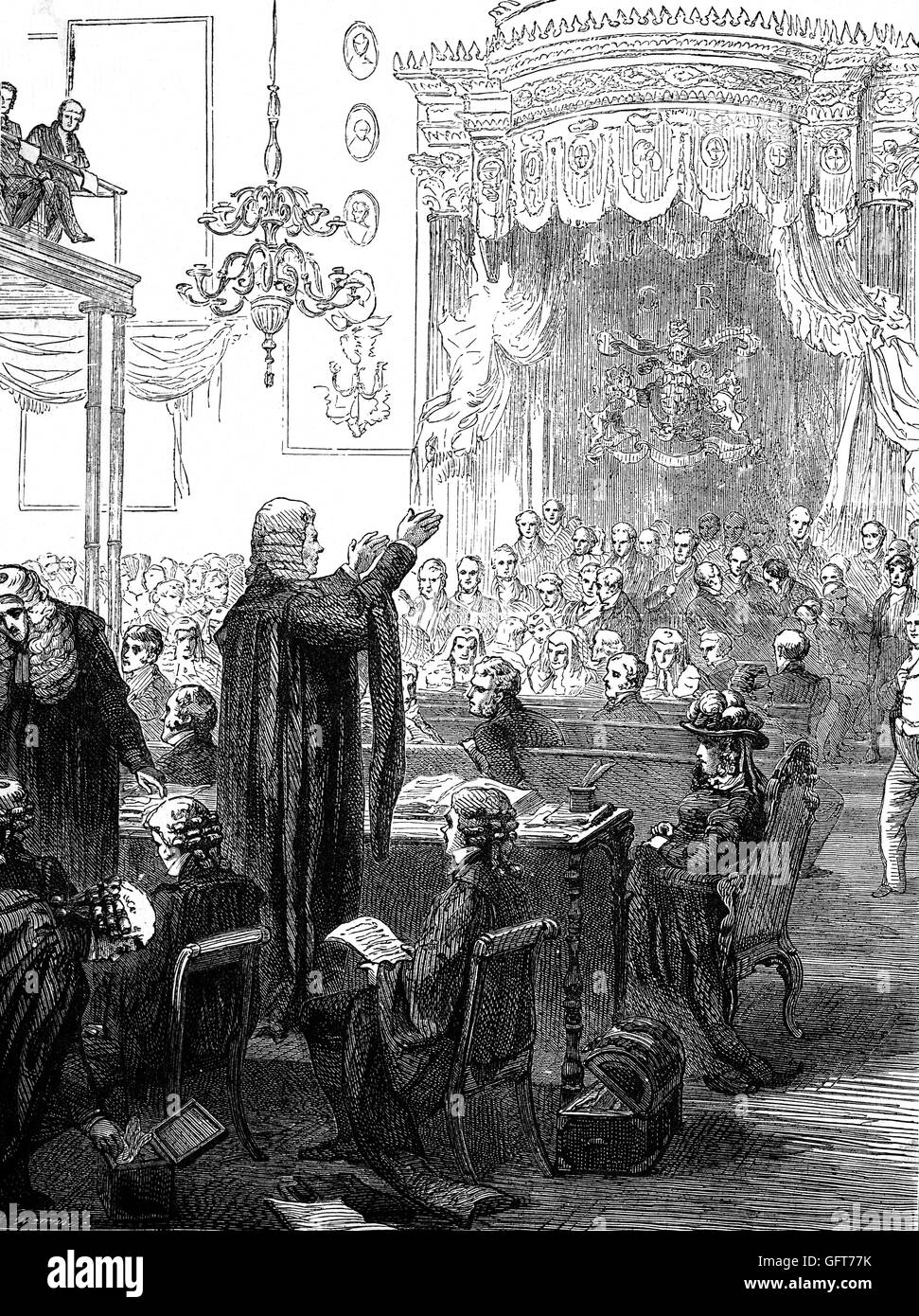 Queen Caroline or Caroline of Brunswick (1768 – 1821), was the wife of Prince Regent George Augustus Frederick (later King George IV) from 29 January 1820 until her death in 1821. In August 1818 the Prince appointed a three-man commission to investigate his wife's adulterous activities which led to a trial. The Queen was defended by Henry Peter Brougham, 1st Baron Brougham and Vau. Stock Photohttps://www.alamy.com/image-license-details/?v=1https://www.alamy.com/stock-photo-queen-caroline-or-caroline-of-brunswick-1768-1821-was-the-wife-of-113014599.html
Queen Caroline or Caroline of Brunswick (1768 – 1821), was the wife of Prince Regent George Augustus Frederick (later King George IV) from 29 January 1820 until her death in 1821. In August 1818 the Prince appointed a three-man commission to investigate his wife's adulterous activities which led to a trial. The Queen was defended by Henry Peter Brougham, 1st Baron Brougham and Vau. Stock Photohttps://www.alamy.com/image-license-details/?v=1https://www.alamy.com/stock-photo-queen-caroline-or-caroline-of-brunswick-1768-1821-was-the-wife-of-113014599.htmlRMGFT77K–Queen Caroline or Caroline of Brunswick (1768 – 1821), was the wife of Prince Regent George Augustus Frederick (later King George IV) from 29 January 1820 until her death in 1821. In August 1818 the Prince appointed a three-man commission to investigate his wife's adulterous activities which led to a trial. The Queen was defended by Henry Peter Brougham, 1st Baron Brougham and Vau.
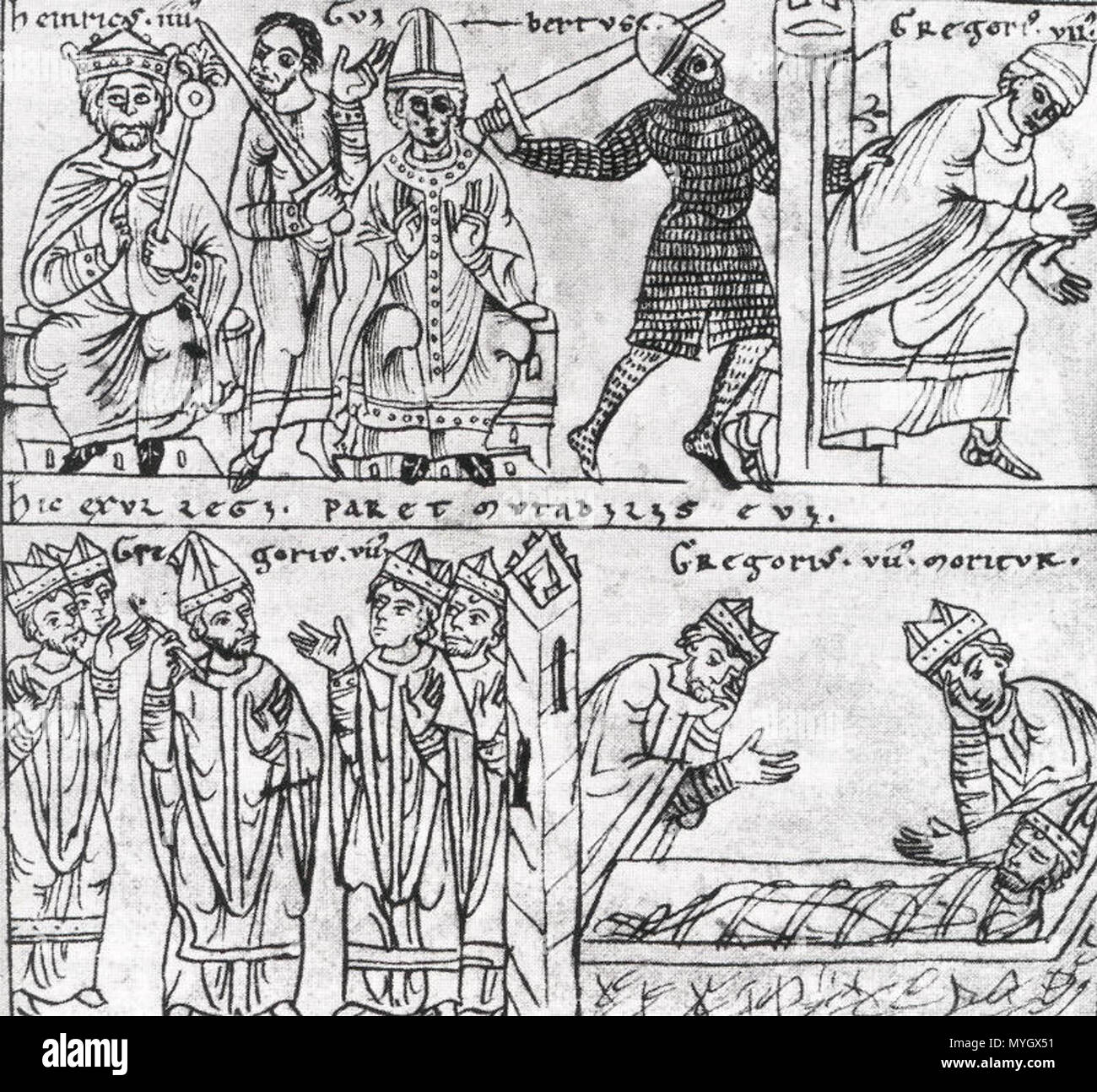 . Svenska: sv:Investiturstriden, illustration från medeltida handskrift (c:a 1150). Antipope Clement III (center) with Emperor Henry IV. The enthronement of Henry IV and Clement III, and the flight and death of Gregory VII. 21 December 2004 (original upload date) 259 Investiturstreit Stock Photohttps://www.alamy.com/image-license-details/?v=1https://www.alamy.com/svenska-svinvestiturstriden-illustration-frn-medeltida-handskrift-ca-1150-antipope-clement-iii-center-with-emperor-henry-iv-the-enthronement-of-henry-iv-and-clement-iii-and-the-flight-and-death-of-gregory-vii-21-december-2004-original-upload-date-259-investiturstreit-image189071149.html
. Svenska: sv:Investiturstriden, illustration från medeltida handskrift (c:a 1150). Antipope Clement III (center) with Emperor Henry IV. The enthronement of Henry IV and Clement III, and the flight and death of Gregory VII. 21 December 2004 (original upload date) 259 Investiturstreit Stock Photohttps://www.alamy.com/image-license-details/?v=1https://www.alamy.com/svenska-svinvestiturstriden-illustration-frn-medeltida-handskrift-ca-1150-antipope-clement-iii-center-with-emperor-henry-iv-the-enthronement-of-henry-iv-and-clement-iii-and-the-flight-and-death-of-gregory-vii-21-december-2004-original-upload-date-259-investiturstreit-image189071149.htmlRMMYGX51–. Svenska: sv:Investiturstriden, illustration från medeltida handskrift (c:a 1150). Antipope Clement III (center) with Emperor Henry IV. The enthronement of Henry IV and Clement III, and the flight and death of Gregory VII. 21 December 2004 (original upload date) 259 Investiturstreit
